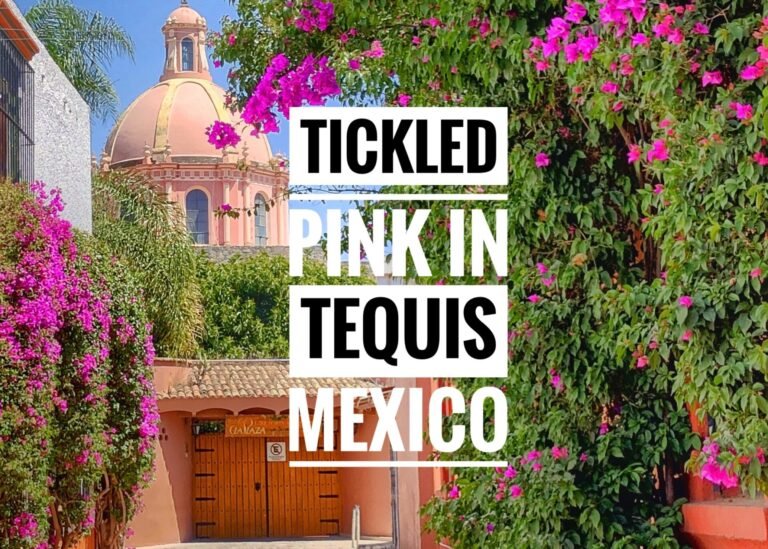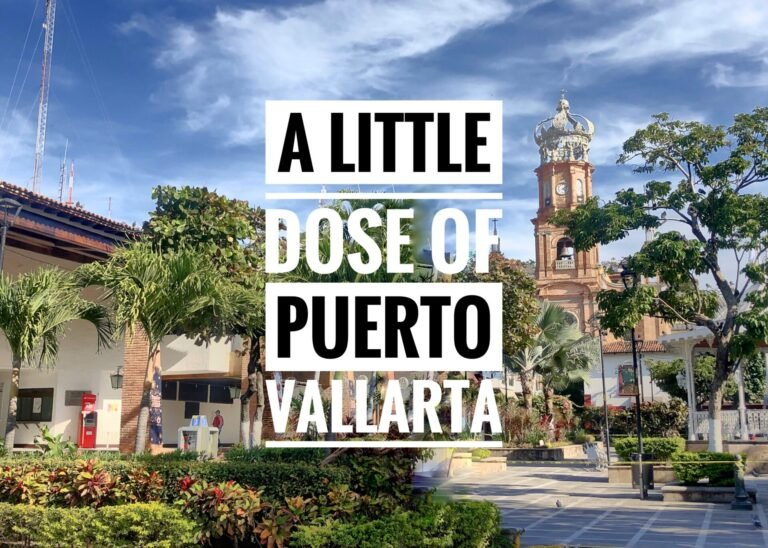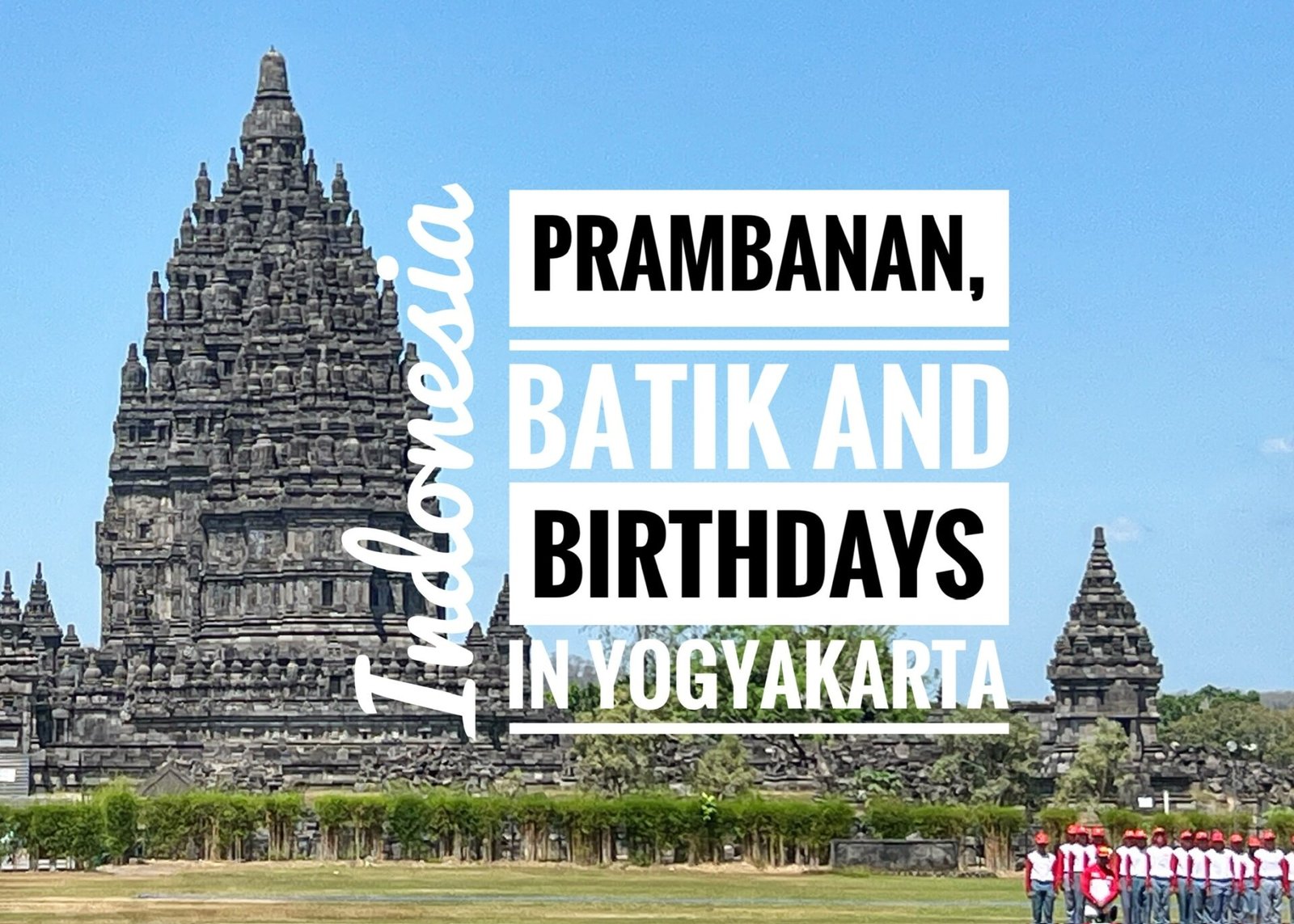
Some say that Yogyakarta, commonly called Yogya or Jogja, is the true essence of Java…where the heart and the soul collide in its history, arts and culture. It is a destination that is on nearly every travelers’ Java itinerary for this reason, and because of its proximity to the wondrous and notable ancient ruins of Borobudur and Prambanan.
So…Borobodur or Prambanan!?
Initially we had planned to do both temples until we found out the inflated price ($100 total for two people) and the fact you had to pay additional and book well in advance (which we didn’t) to see the most noteworthy vista at Borobodur anyhow.
We chose Prambanan for these reasons, as well as close 20-minute proximity to our apartment in Jogja, but predominantly because it was a mostly Hindu site of which we haven’t seen many, while Borobudur is Buddhist of which we’ve seen a few more. Based on follower feedback from others who had recently been to Borobudur, we definitely felt we made the right call, if you’re only choosing one. And it also sounds like the crowds were far fewer at Prambanan, which were always into.
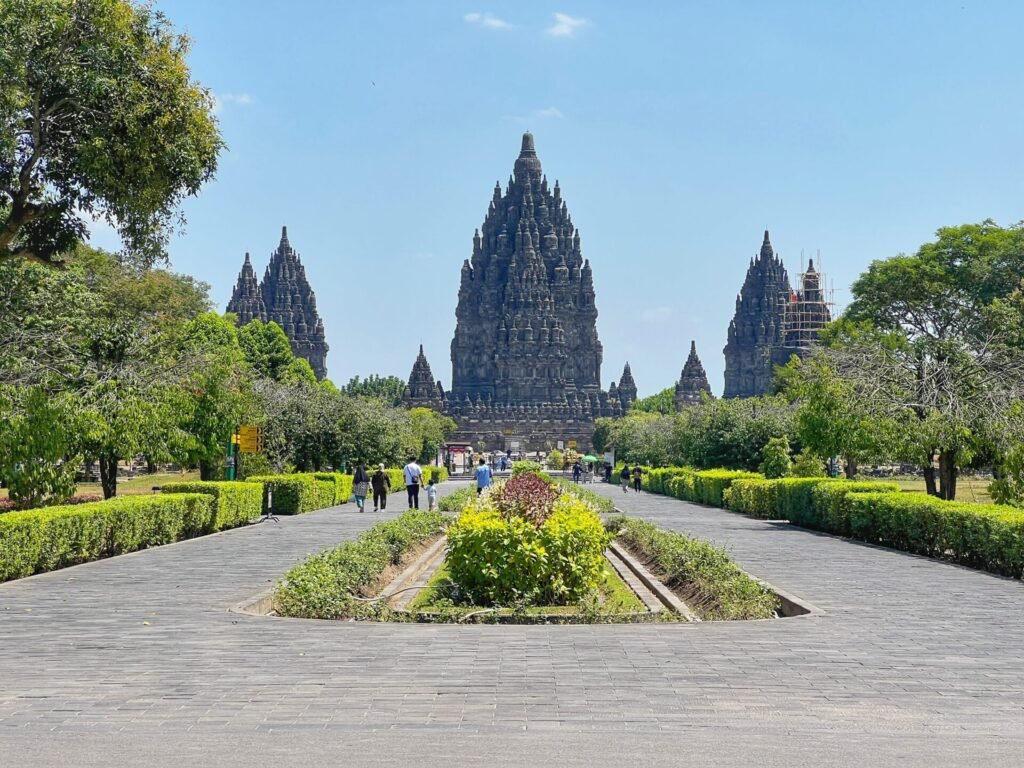
So what is Prambanan? It’s a stunning UNESCO World Heritage site that hosts a 9th Century Hindu Temple complex dedicated to the expression of God as the Creator, (Brahma), the Preserver (Vishnu) and the Destroyer (Shiva).
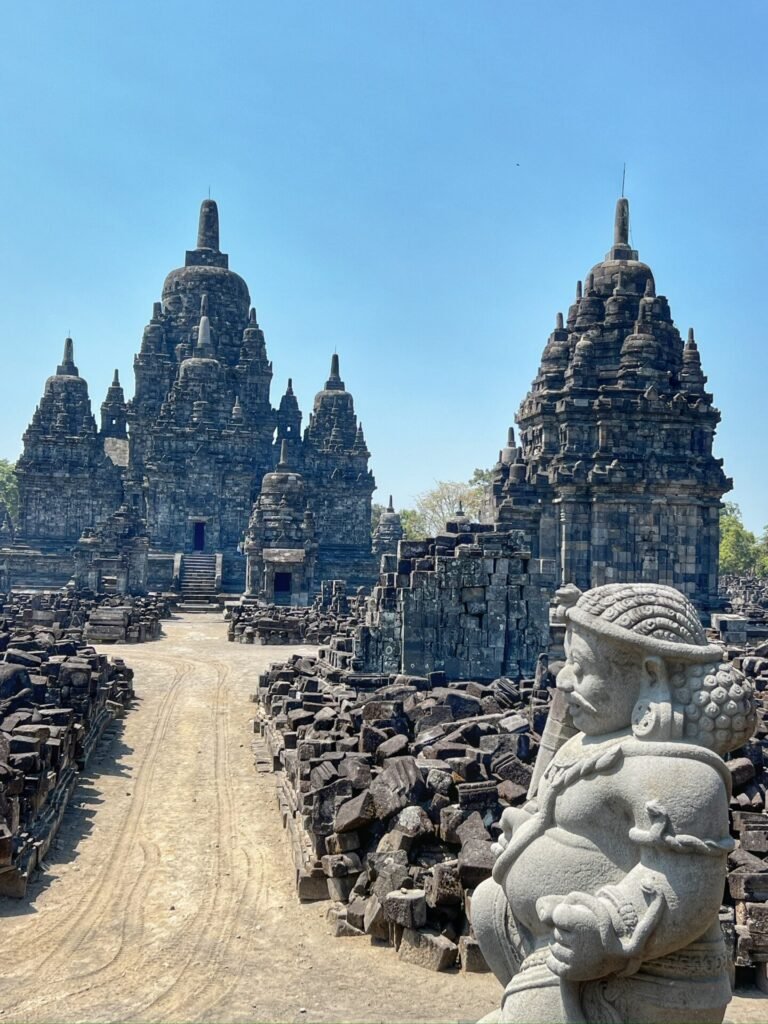
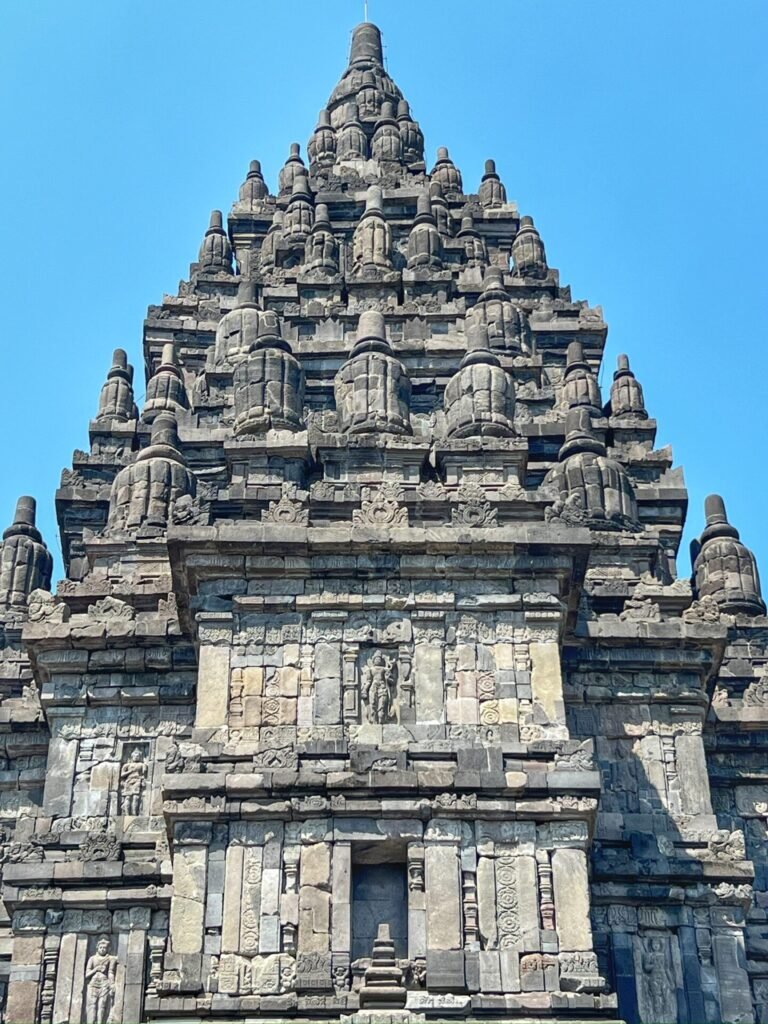
It consists of 244 temples, which is Indonesia’s largest Hindu site renowned for its intricate relief sculptures that adorn the temple walls. However, it also has a thousand year old alluring Buddhist temple called Candi Sewu which ended up being our favorite area. Yes, Candi means temple, not sugary treat, in the local language. Prambanan
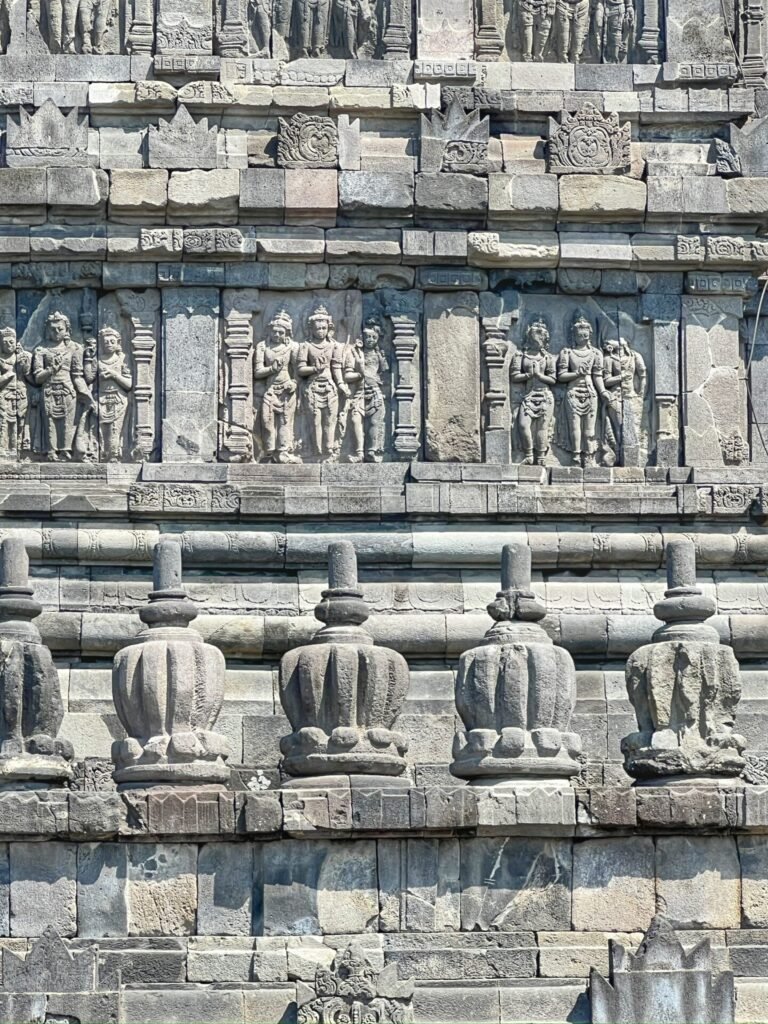
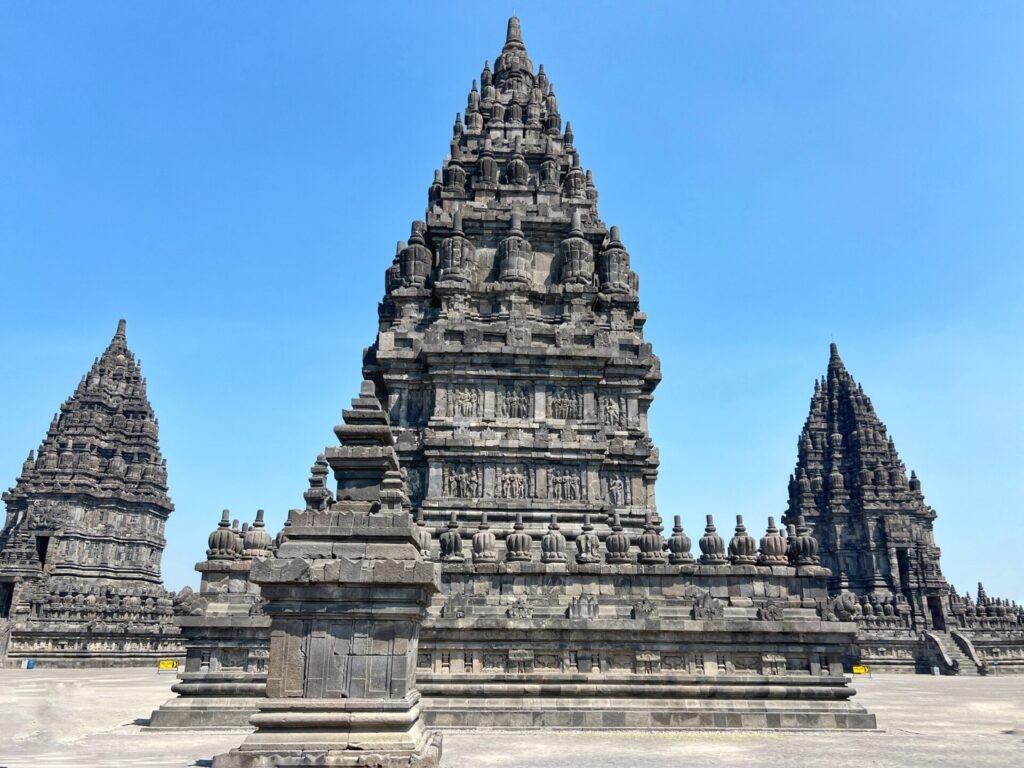
Despite being named as the ‘Sewu’ temple (which means a thousand in Javanese), the total number of the temples does not add up to a thousand. The legend of Roro Jonggrang, a popular legend in Javanese culture, contributed to the naming of this temple. In the legend, Bandung Bondowoso was asked to build a thousand temples. Despite the folklore, the actual number of temples in this complex was 249 temples.
One big difference between the architecture of Borobudur and Prambanan is that the temples are towering and skinny, making it feel like an ancient city. The central temple of Prambanan, dedicated to Lord Shiva, stands tall at an impressive height of 47 meters (154 feet). It is the tallest temple in Java and is adorned with intricate carvings depicting scenes from Hindu epics. (Facts(.)net)
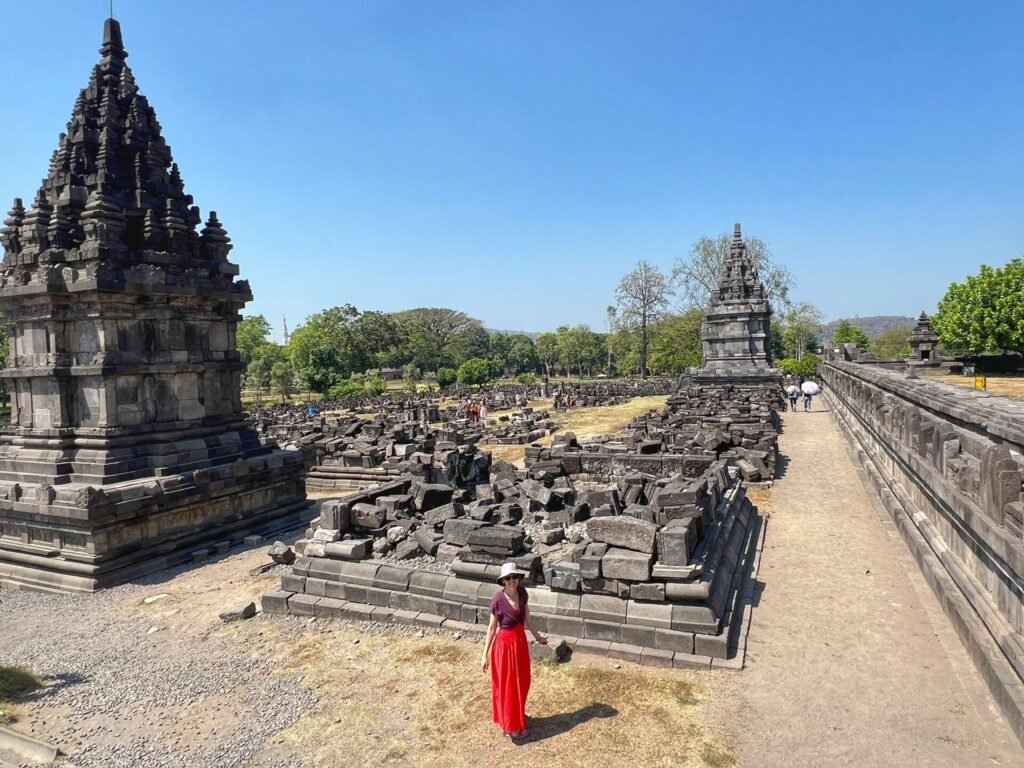

However, you can see that most of the site is in ruins. Much of this additional damage happened due to an earthquake in 2006.
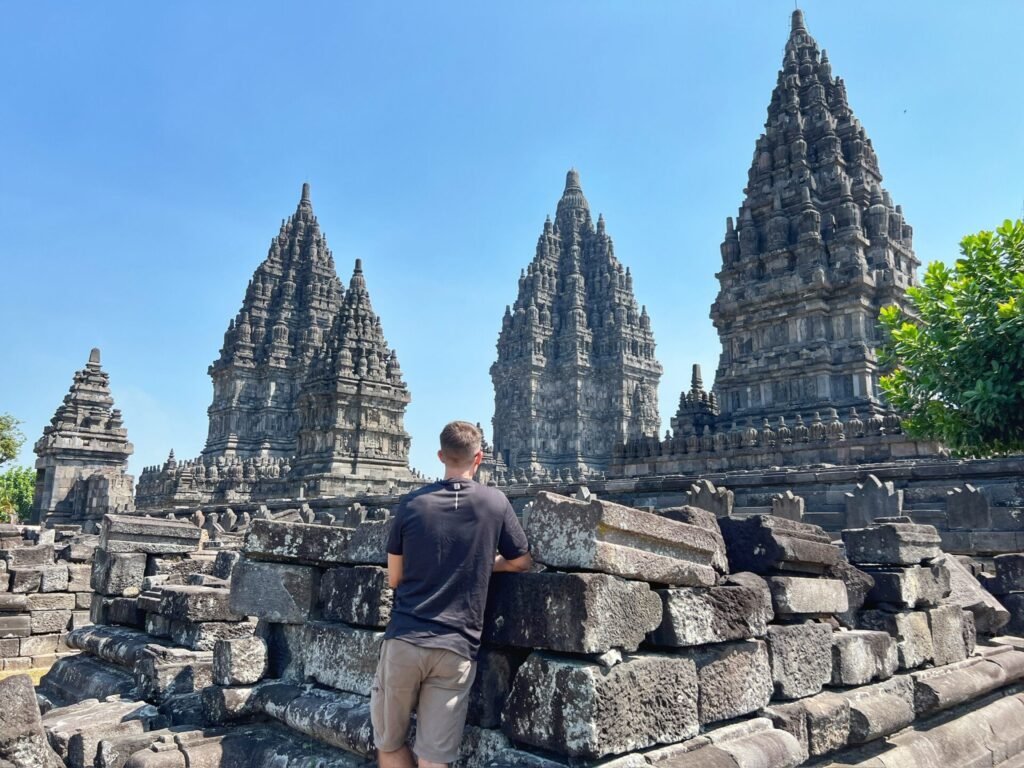
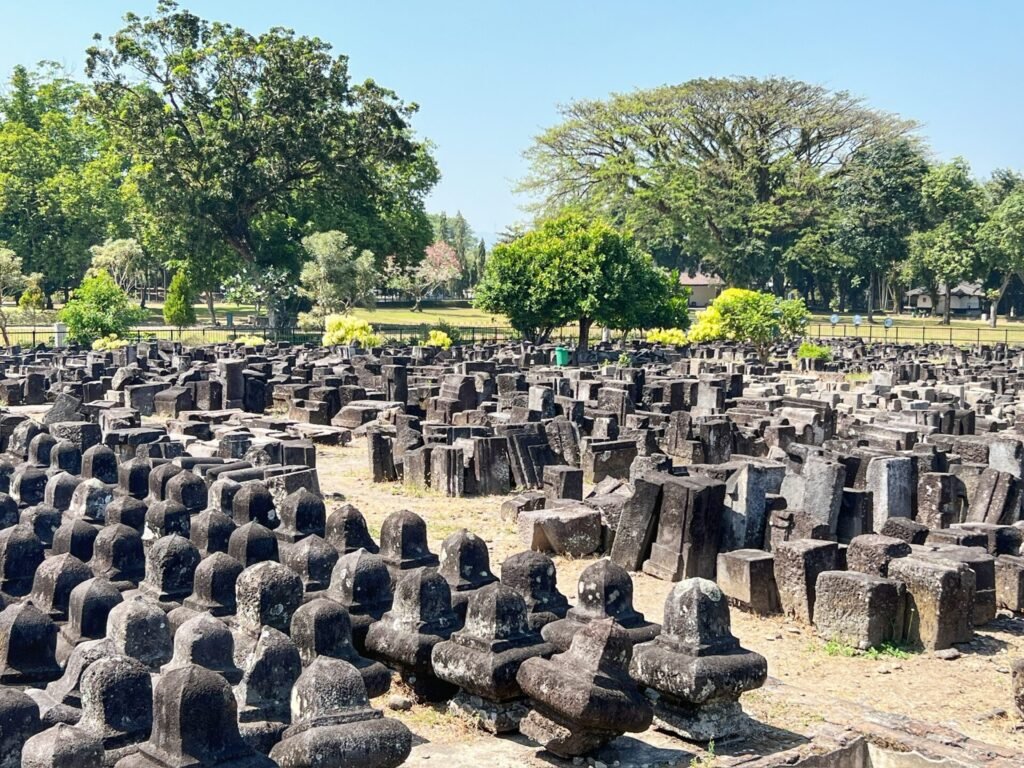
Greg admiring the views of the organized chaos.
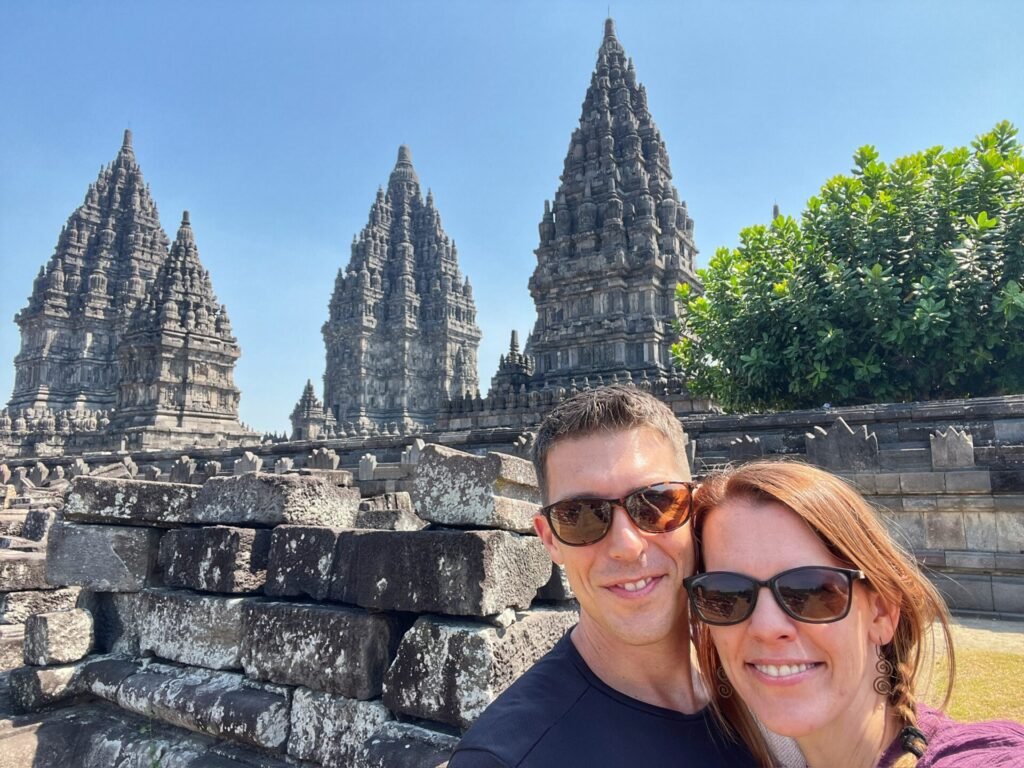
We are glad we went to Prambanan, but we also must admit we found it underwhelming, especially after its superstar rival, Angkor Wat. Nothing will probably ever compete with exploring this empty wonderland during the beginning of COVID.
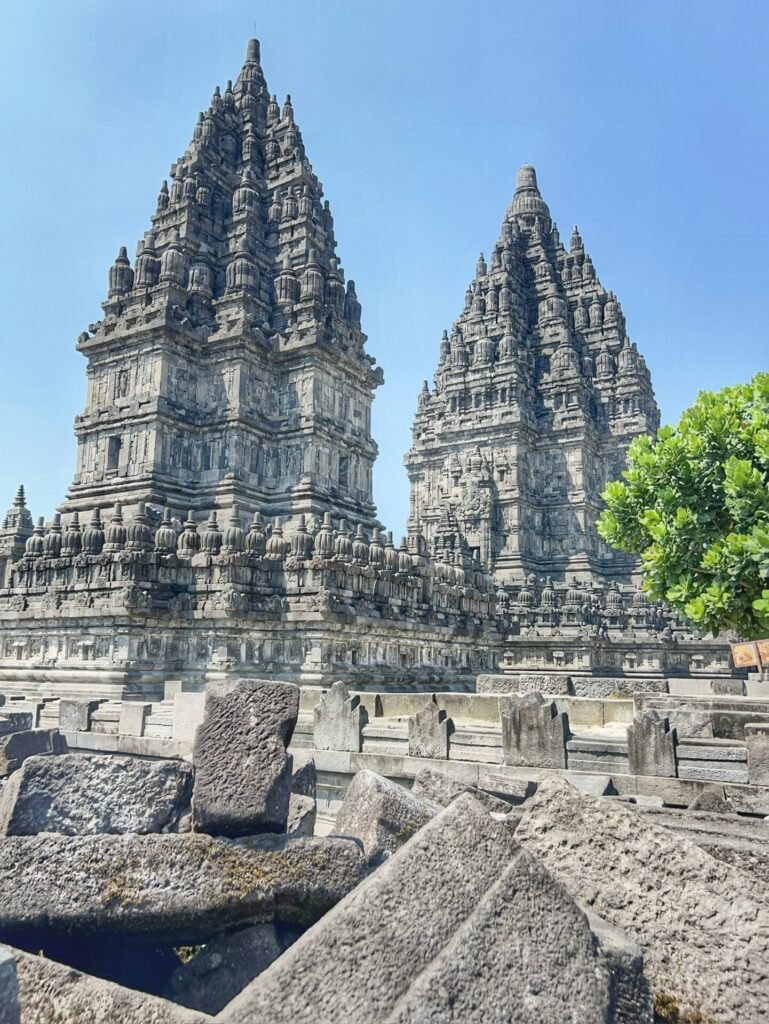
The temples are laden with ancient carvings. In Candi Prambanan’s case, it is the story of Ramayana which tells the story of Rama rescuing his wife Sita from Ravana (the demon king of Lanka). To see the carvings of Ramayana, you have to look at the story at the three main temples. (Lonely Planet.) Unfortunately we were not able to see the main temple up close because evidently it is closed on Monday, aka the day we happened to go, which made the entry fee even more ridiculous.

In our opinion, Candi Sewu which is an 800-meter walk from the main site with even fewer people, put the main temple to shame so maybe the Buddhist design is more our style after all.
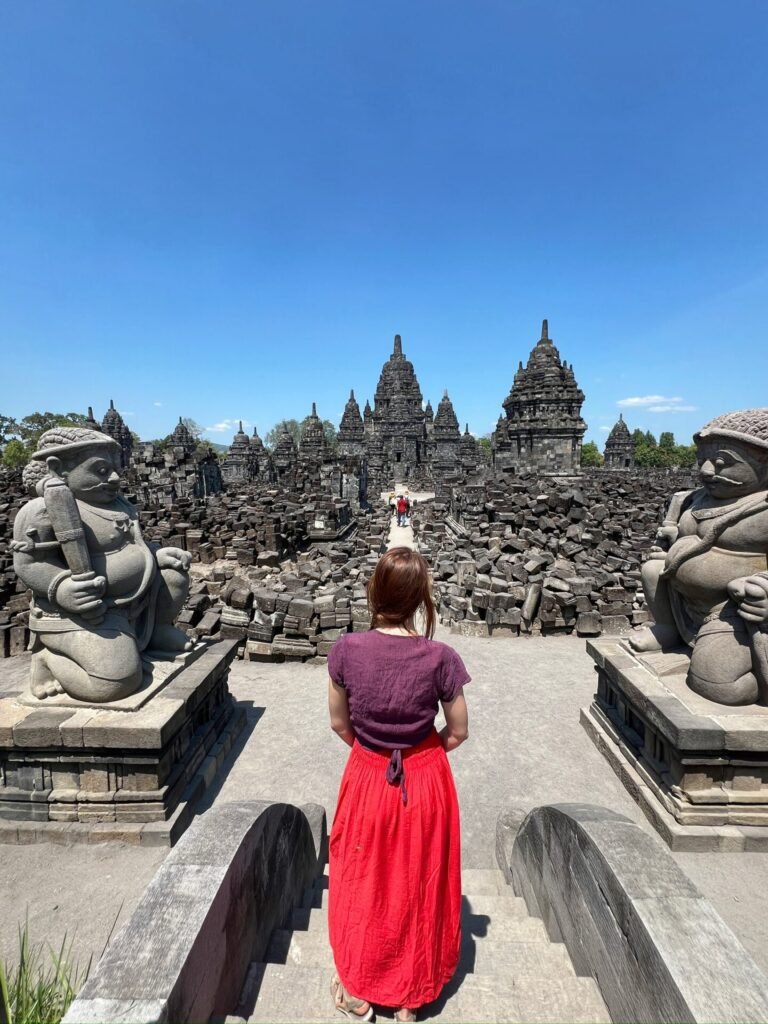
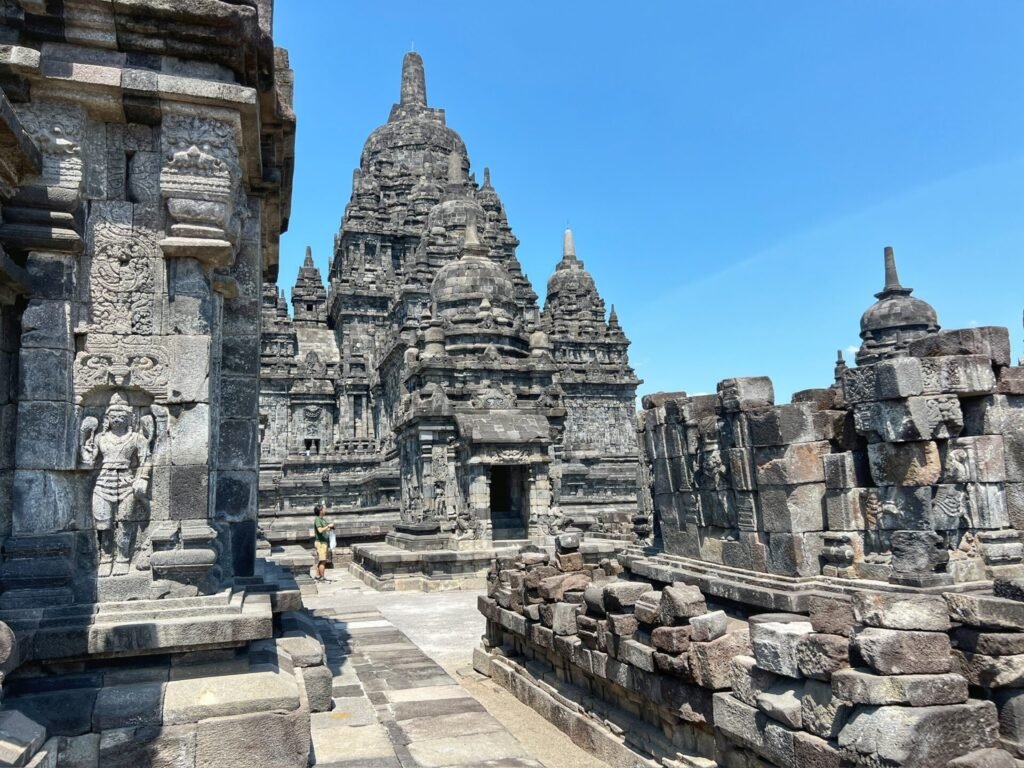
We were also able to enter it, which obviously made a difference, to see the bell-shaped stupas crowning the towers up close and personal.
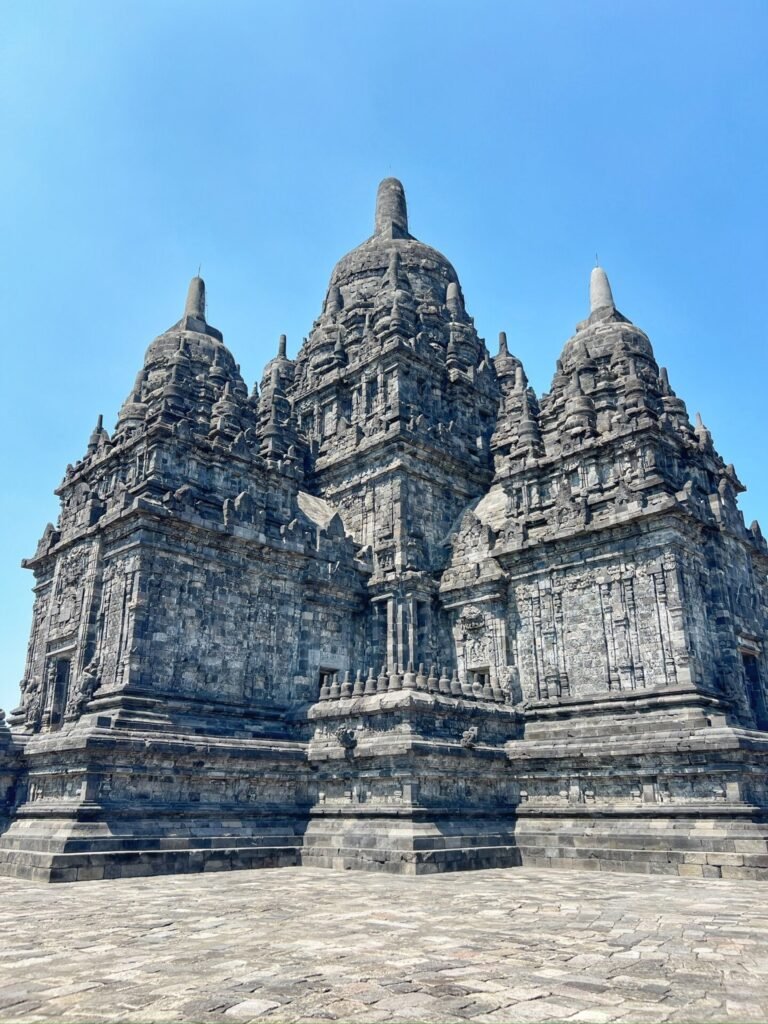
An unfiltered view of the main Candi Sewu temple.
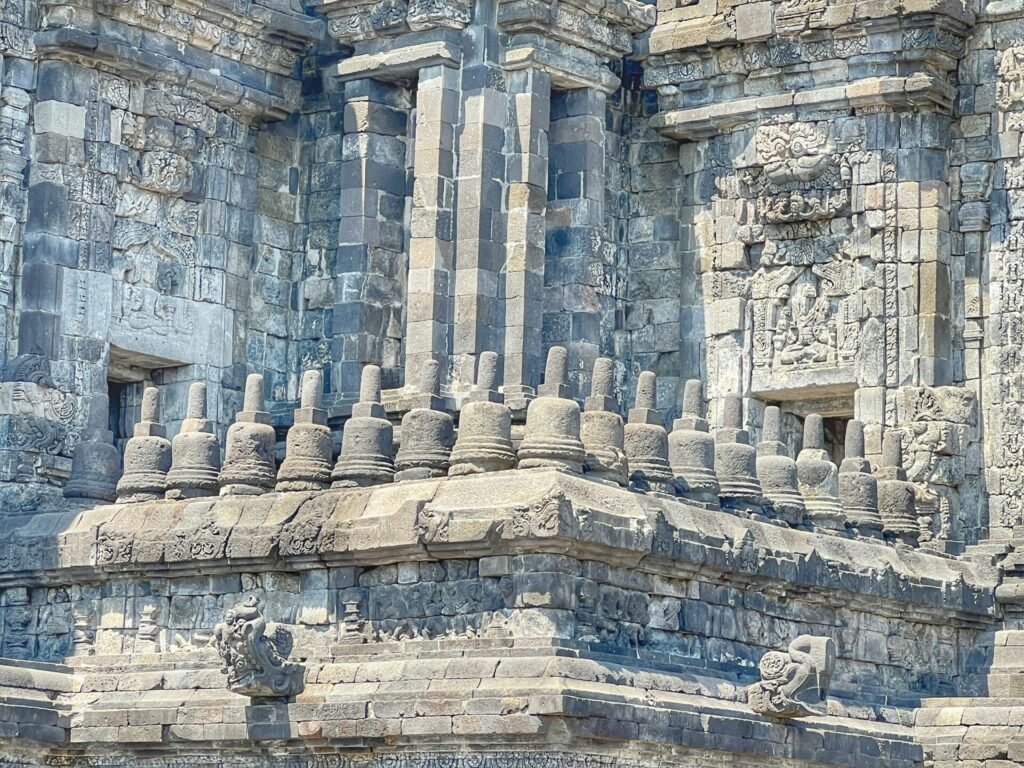
I like big bells and I cannot lie.

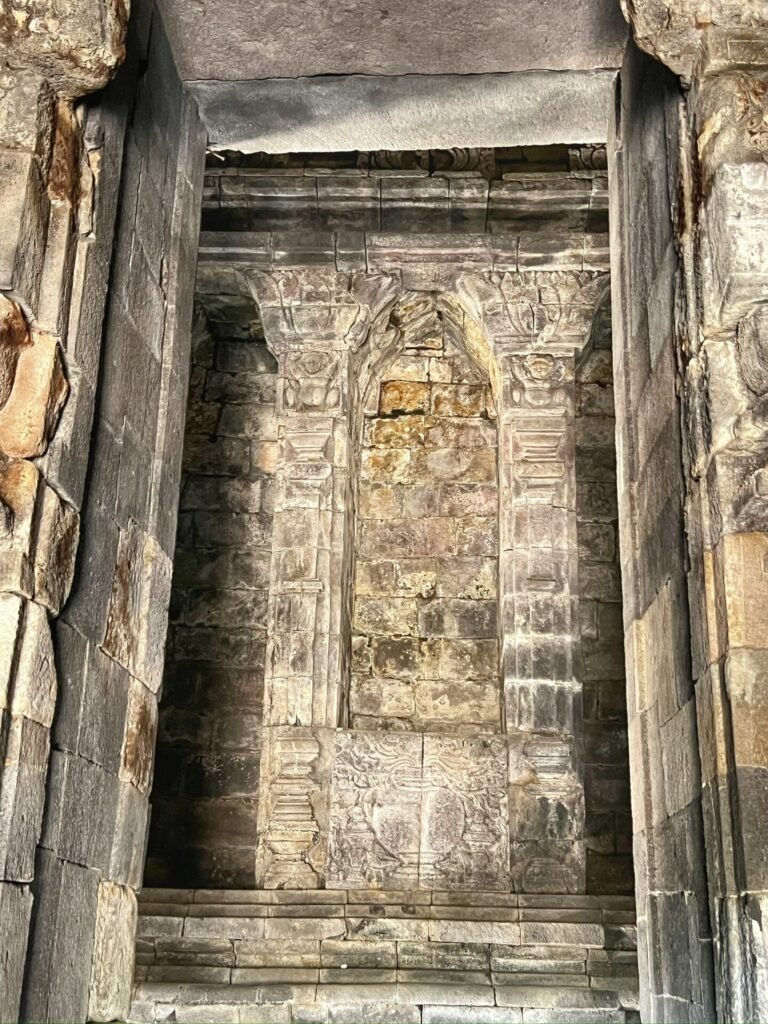
There wasn’t a lot to look at on the inside, but it was fun to wander.
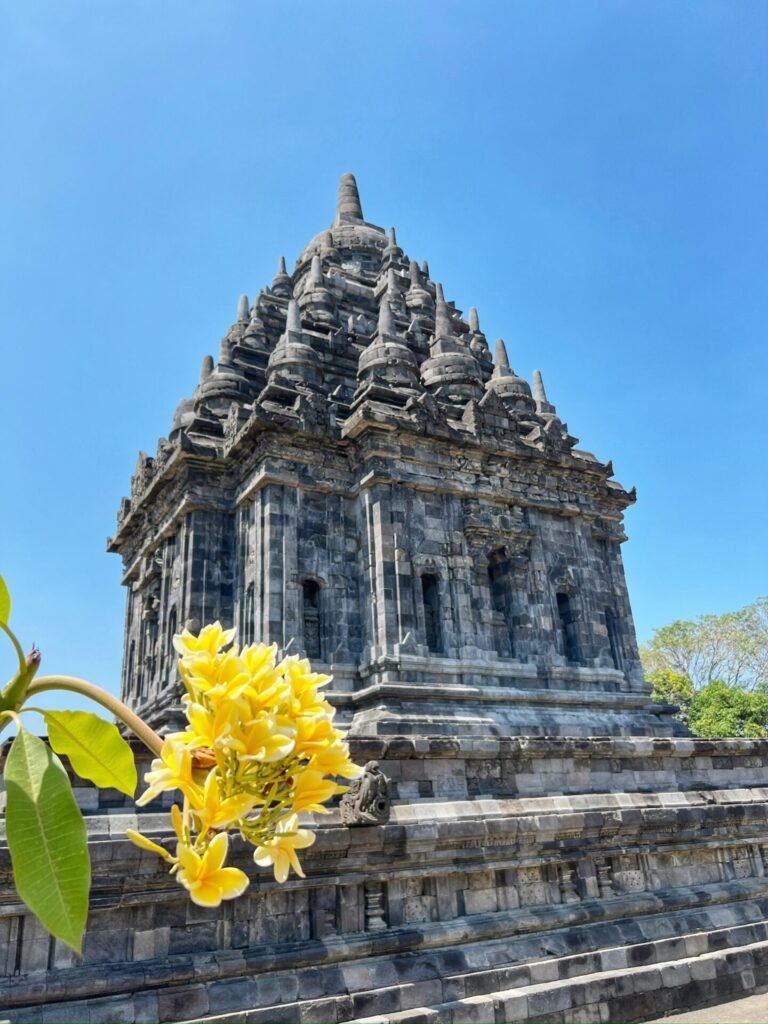
Another temple on the way to Candi Sewu is a smaller one called Candi Burbah. It’s not the most remarkable, but was surrounded by fragrant plumeria trees which made it seem more like our kind of pad.
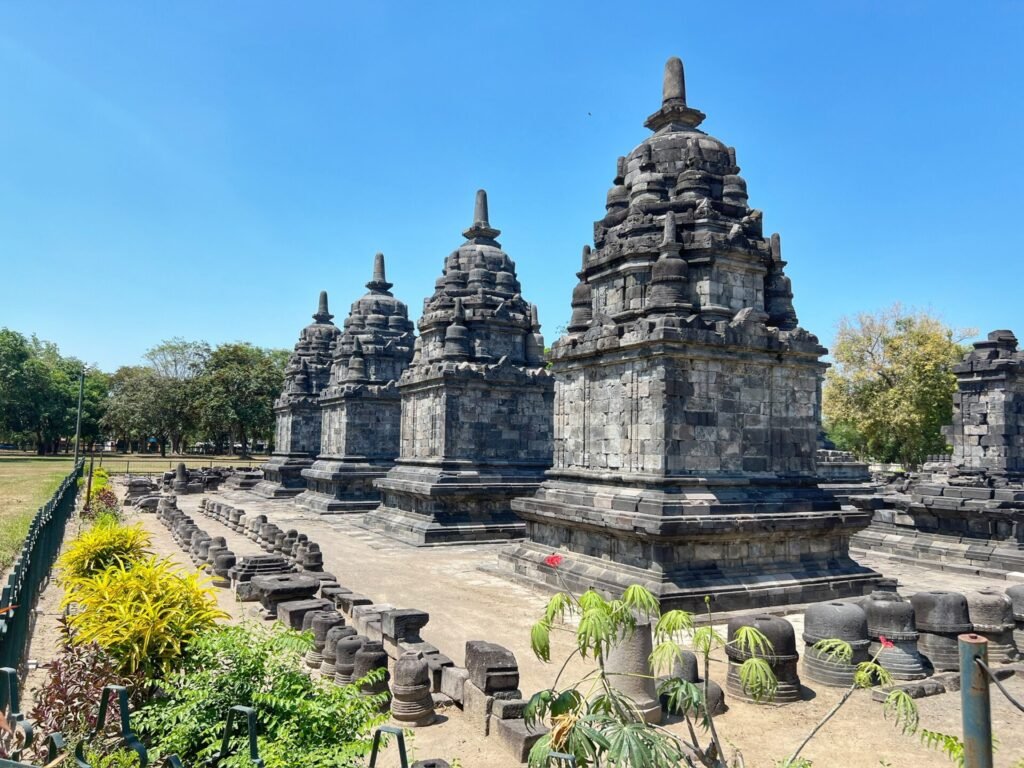

A final set of temples. By this time it was getting a bit hot, so we shared a chocolate cinnamon drink inside the complex, walked through a gauntlet of souvenir stands, and called a $4 Grab back to our place. We could have taken the bus or train, but it would have only saved about $2 and would have taken three times as long.
Taman Sari, or the Water Castle
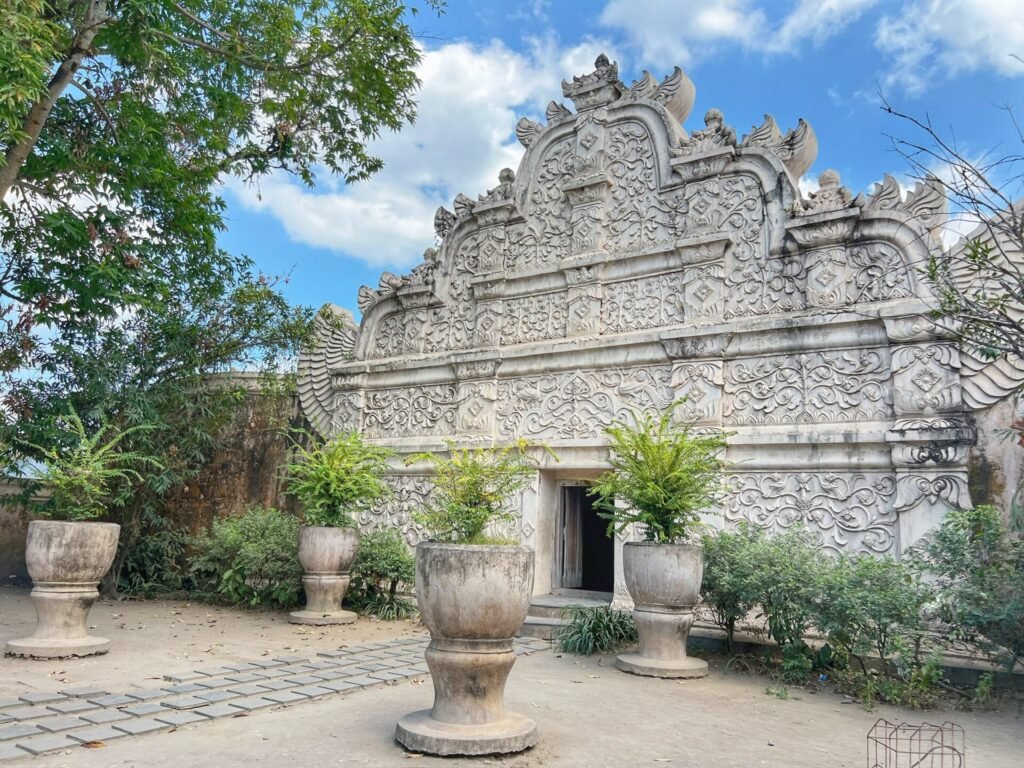
Prambanan and Borobodur are not the only reason to come to Jogja. One area we particularly appreciated was the Taman Sari, also called the Water Castle, built between 1758 and 1764 (Cost: ~$1.50). Once upon a time, it was a 59-room playground of palaces, pools, gardens and waterways for the sultan and his groupies. The most interesting part to us, however, was the way it melds today with the residential neighborhood amongst it.
Notable visitors to this complex in recent years have included the Obamas, and Mark Zuckerberg which of course, every local mentioned as soon as we shared our nationality with them. 🇺🇸
Today, although the complex is in ruins, following a war and a 1865 earthquake, its former glory has undoubtedly been somewhat captured.
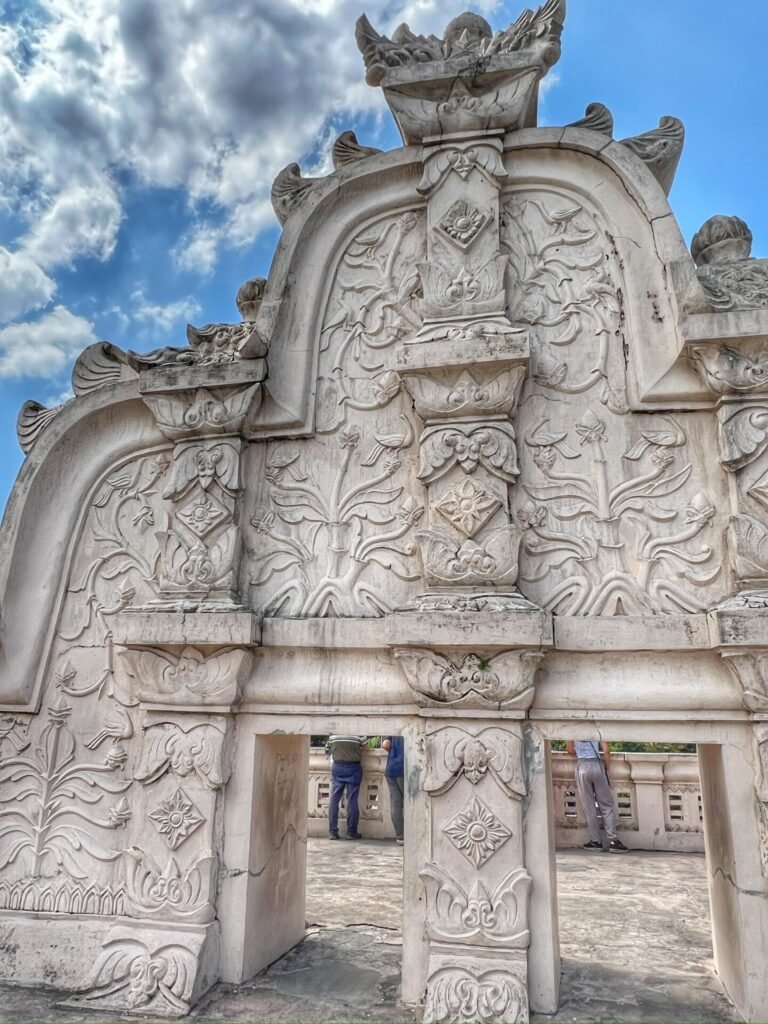
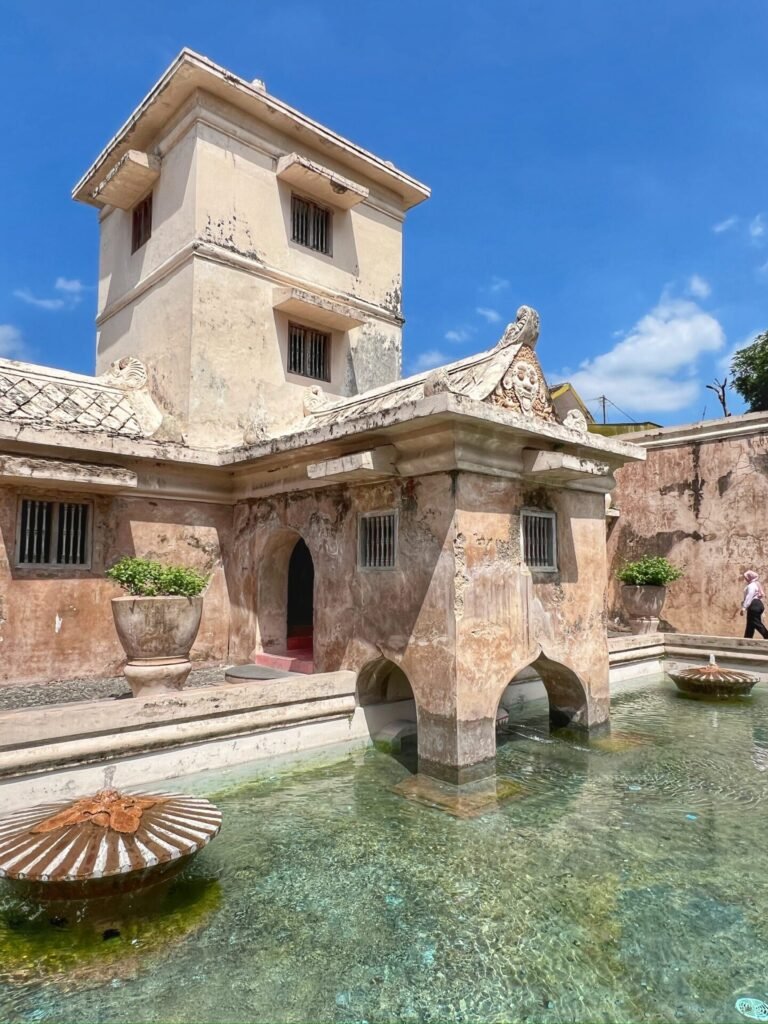
The details throughout were incredibly intricate, and surprisingly, the bathing complex is the only area which has been completely restored.
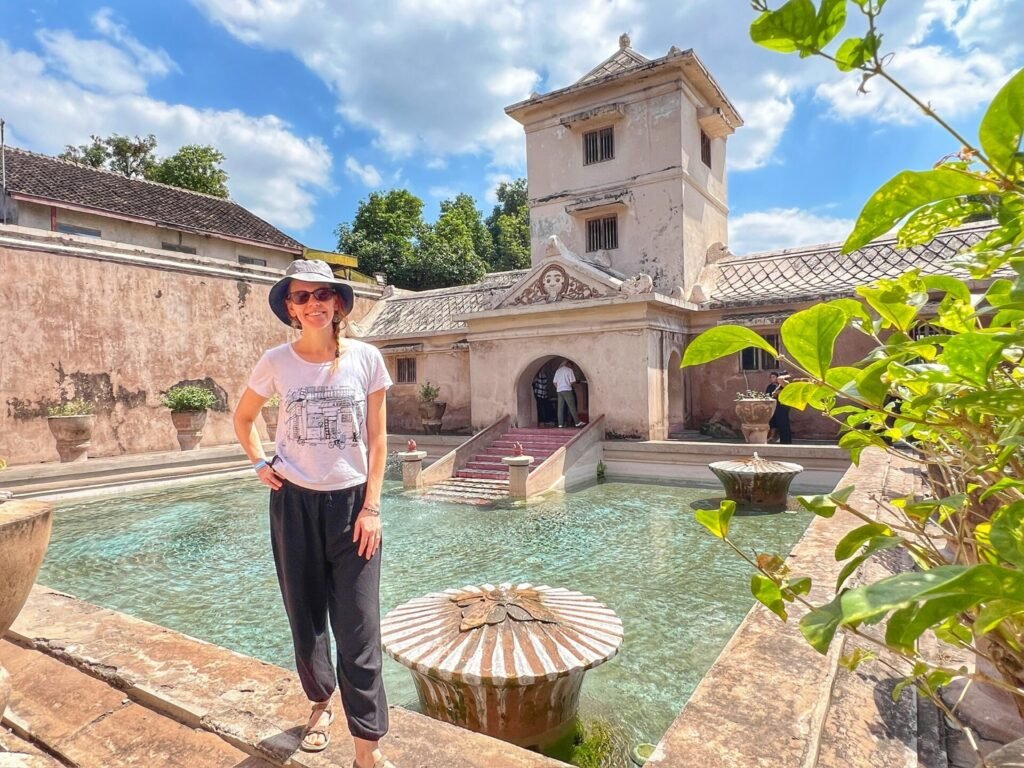
For us, it brought back memories of Sanliurfa in Türkiye.
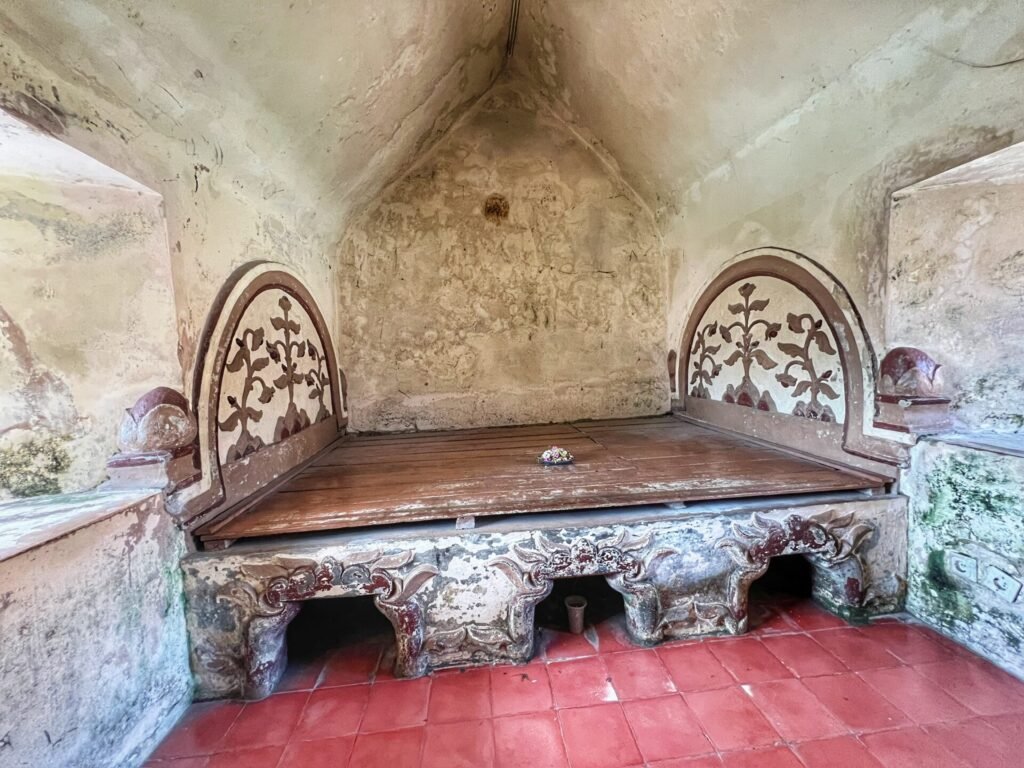
According to Lonely Planet, it is said that the sultan used a Portuguese architect to execute the project to ensure that his pleasure rooms were kept secret. We definitely noticed there were a lot of beds. Although the stone framework didn’t exactly look too cozy.
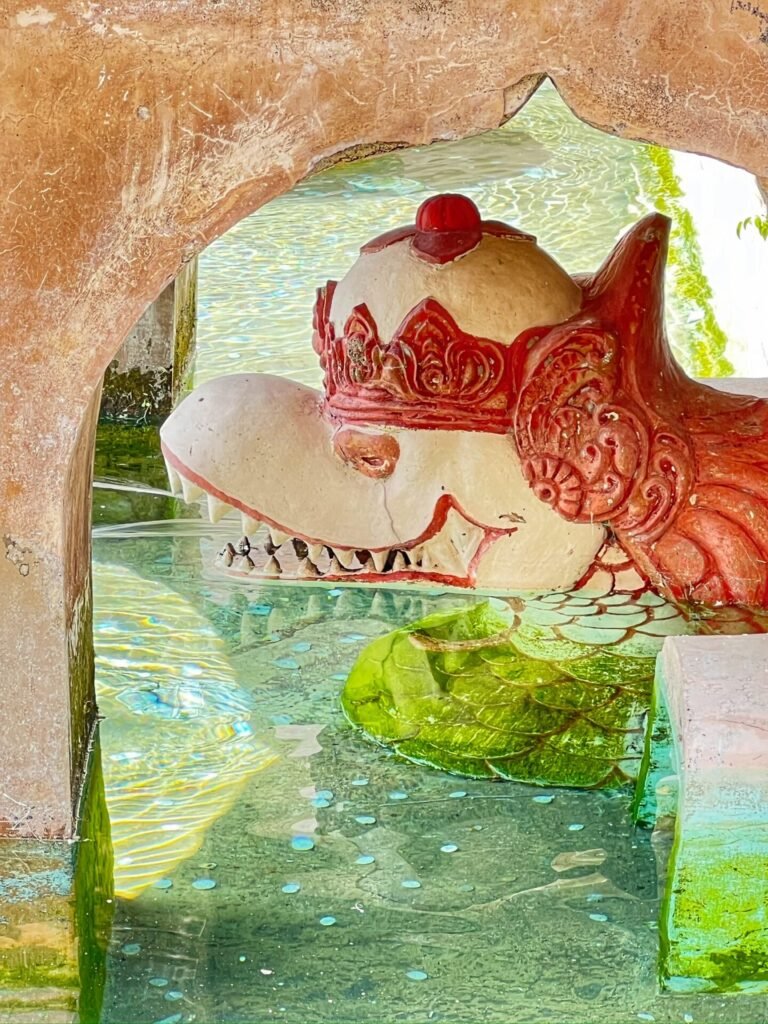
It also had a lucky dragon, (which is not the least bit Portuguese.)
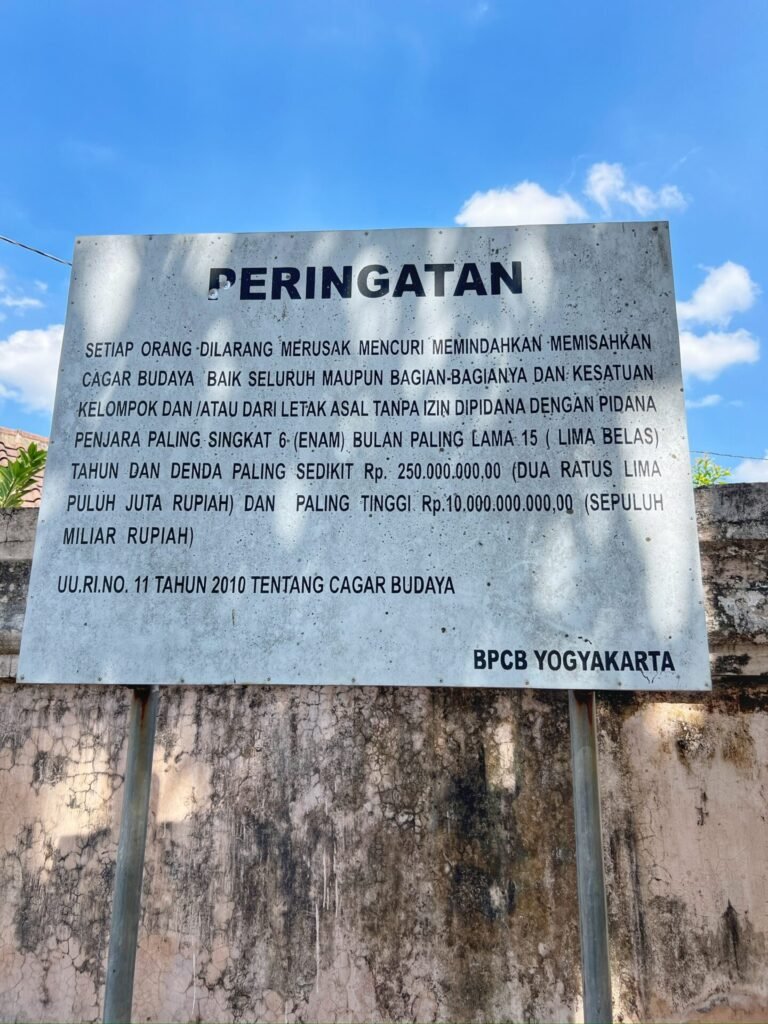
By the way, there are no informational plaques on anything, and certainly no English. The only signs we saw indicated that if you cause a ruckus, steal or damage anything here you’re subject to 15 years in prison, and up to a 10 billion rupiah fine ($63k.) So, as usual, good life rules apply…don’t be a jerk.
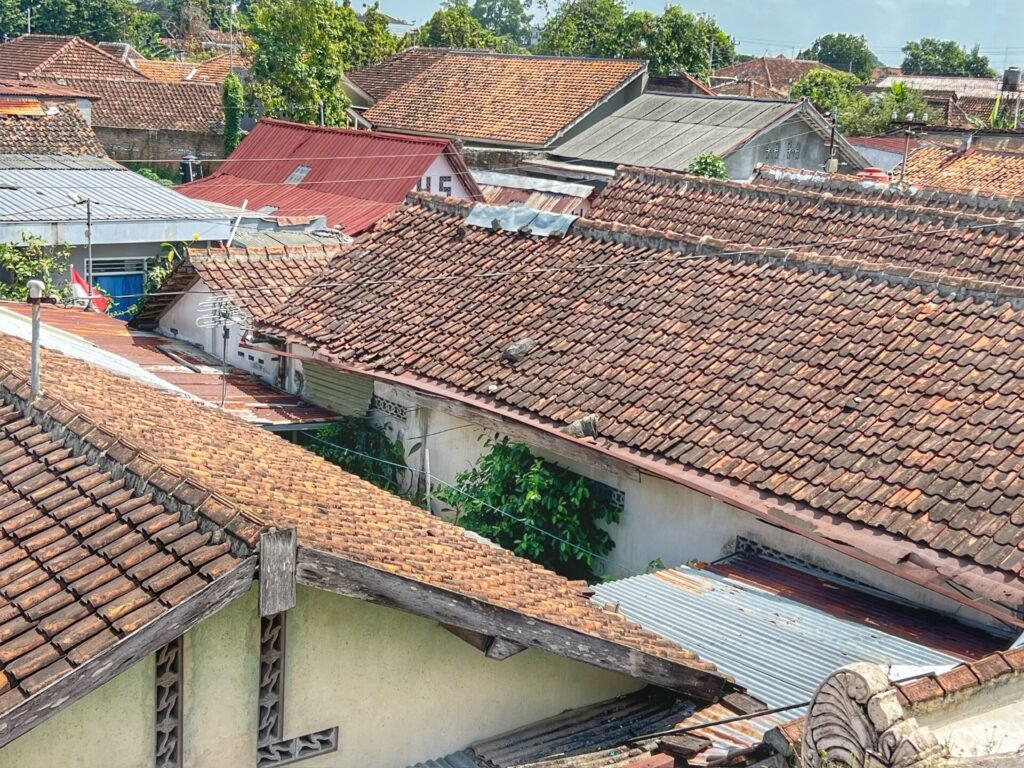
When you climb to the edges of the complex, it is curious how this hoity toity establishment of yesterday shares boundaries with the common man of today.
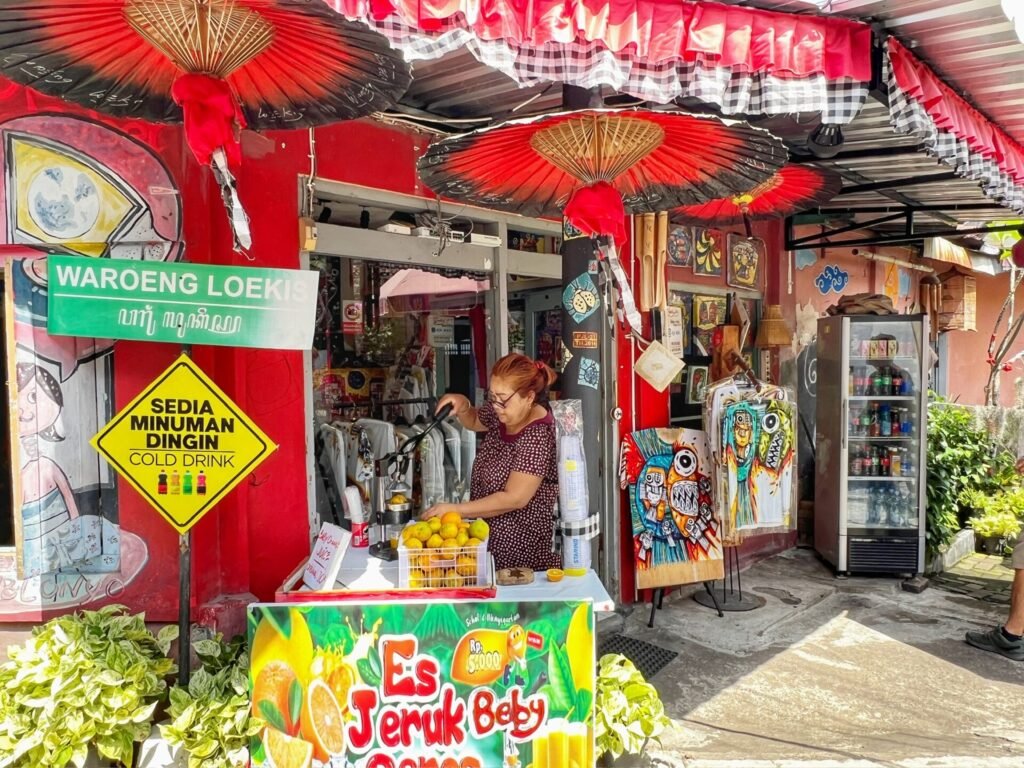
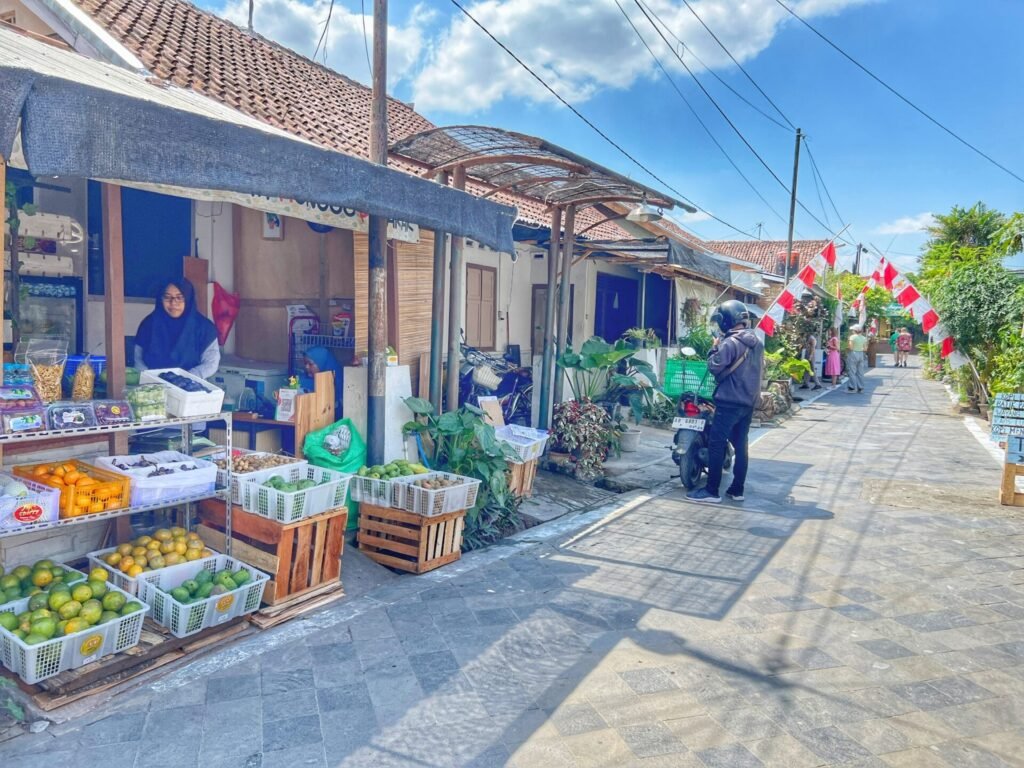
Many people in the adjoining residential areas are taking advantage of the tourists coming through by setting up businesses in their homes. There are nearly 2700 residents who still live here.
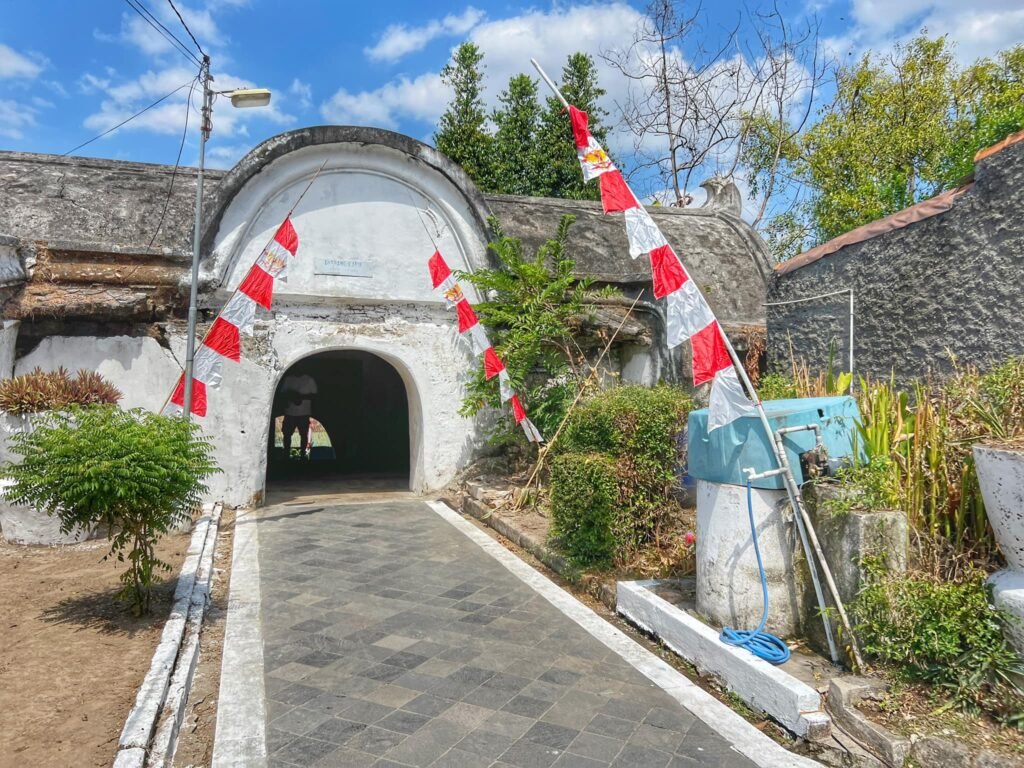

The residential areas weave in and out of the complex walls with tunnels, and staircases.
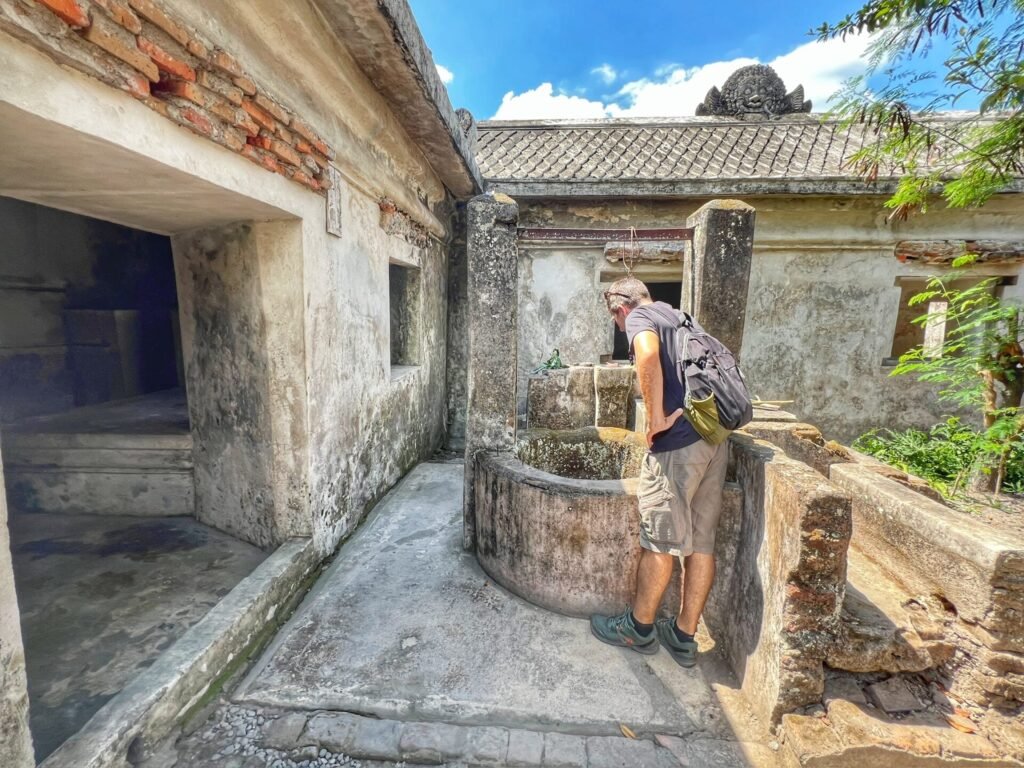
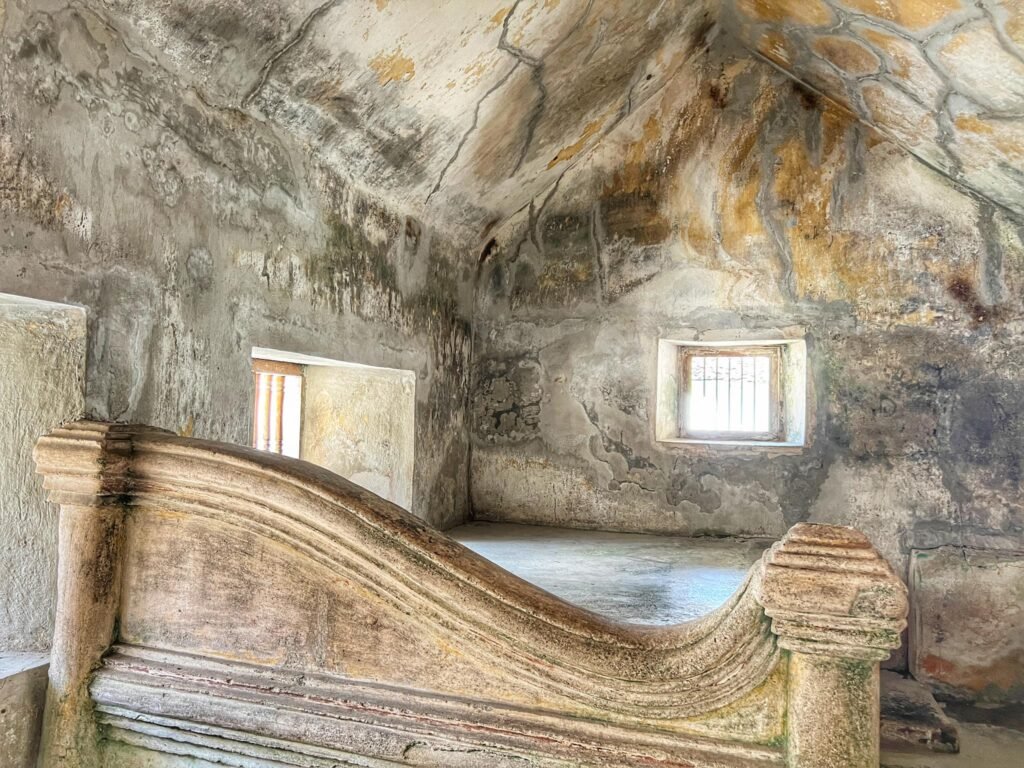
As we continue to wander, we realize there’s a reason it’s called a “king” size bed. In the meantime, our representative pauper went to fetch us some undrinkable Indonesian water.

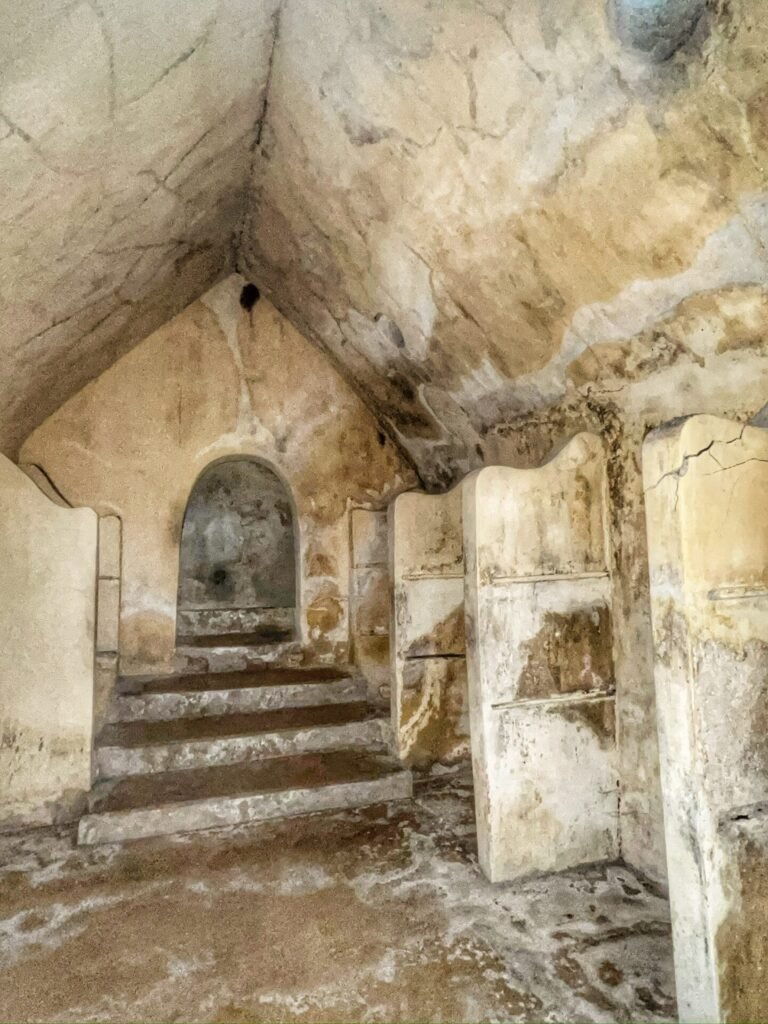
Winding our way down, we encountered massive fireplaces, which are always needed in the tropics, as well as many other uninviting stone areas desperately needing a woman’s touch, (or at least an OJ stand.) Regardless, the stone labyrinth was ripe with nooks and crannies for explorers like us.

Although this looks like any canopy bed from Ashley Furniture, (minus the hundreds of years staying power), it’s pretty evident based on floor pockets it wasn’t used for that. Perhaps bathing?! Princely playpens? Underbed storage for your guns? Any other guesses?
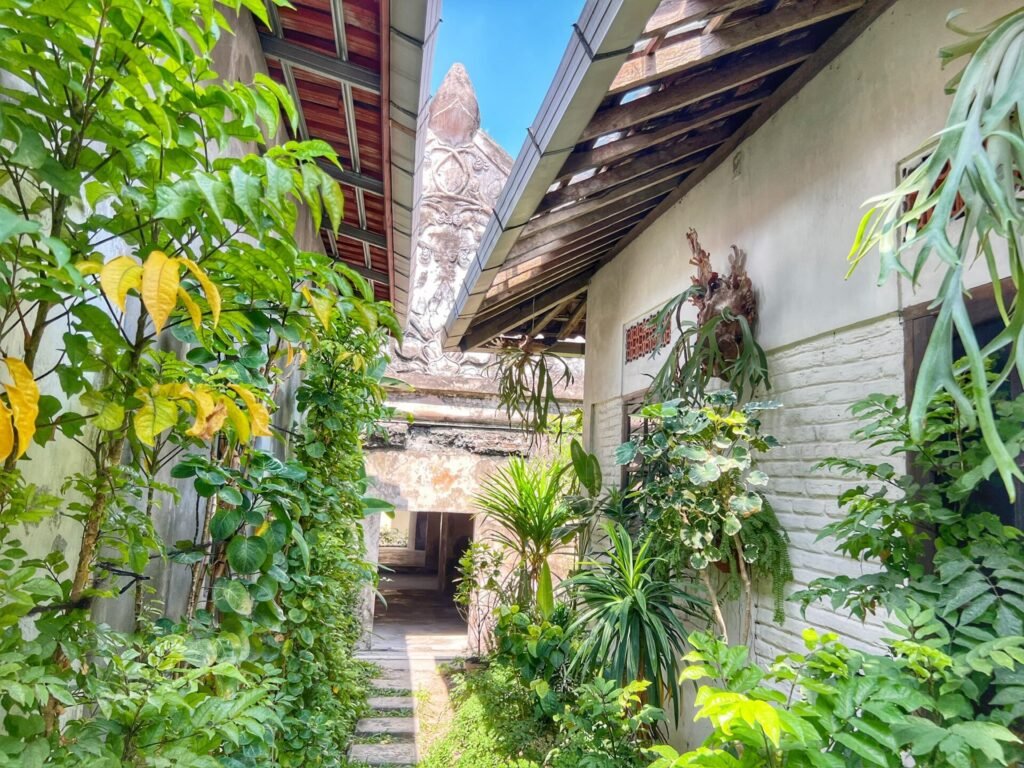
And our favorite area where we stumbled upon a residential pathway which led directly into the palace. Fascinating. We’ve never seen modern knit with ruins in quite the same manner.
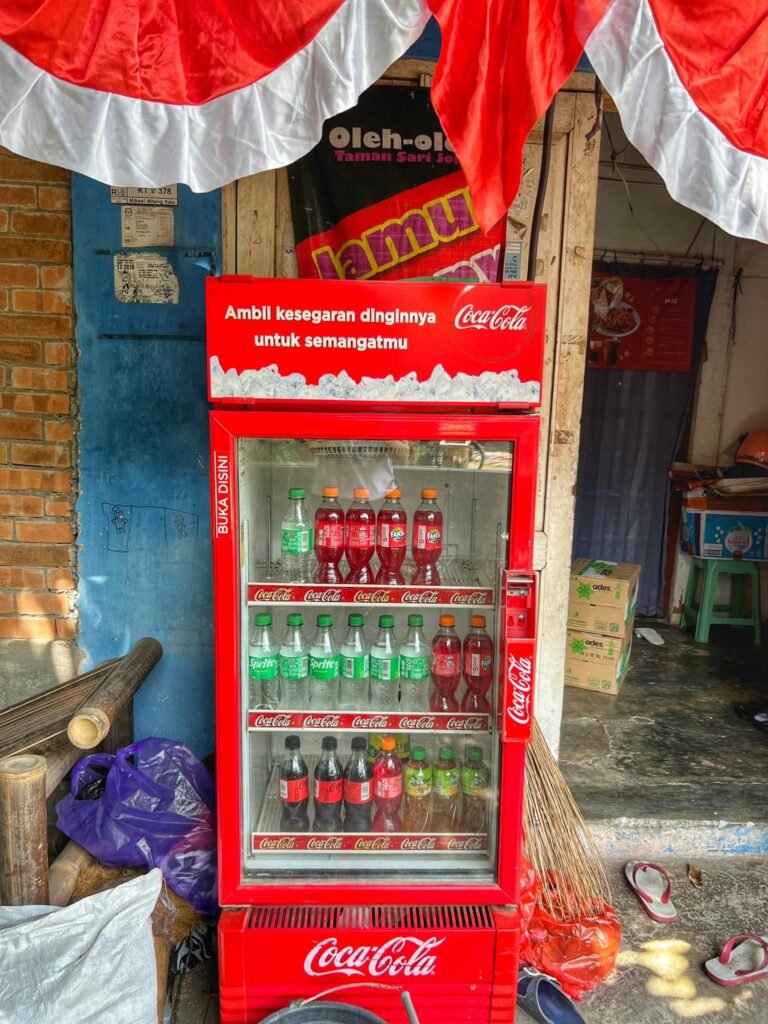
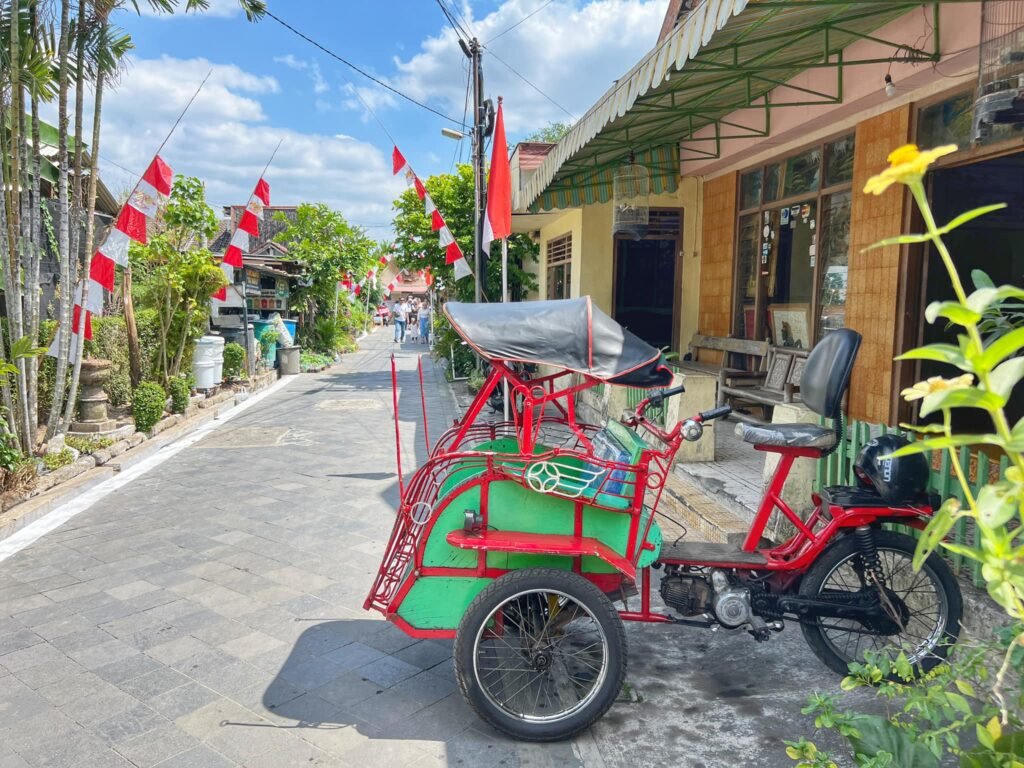
Sodas for sale. These typically go for about $.40 here. They are alongside brightly painted bicycle rickshaws, which are a very common mode of transit on Java.
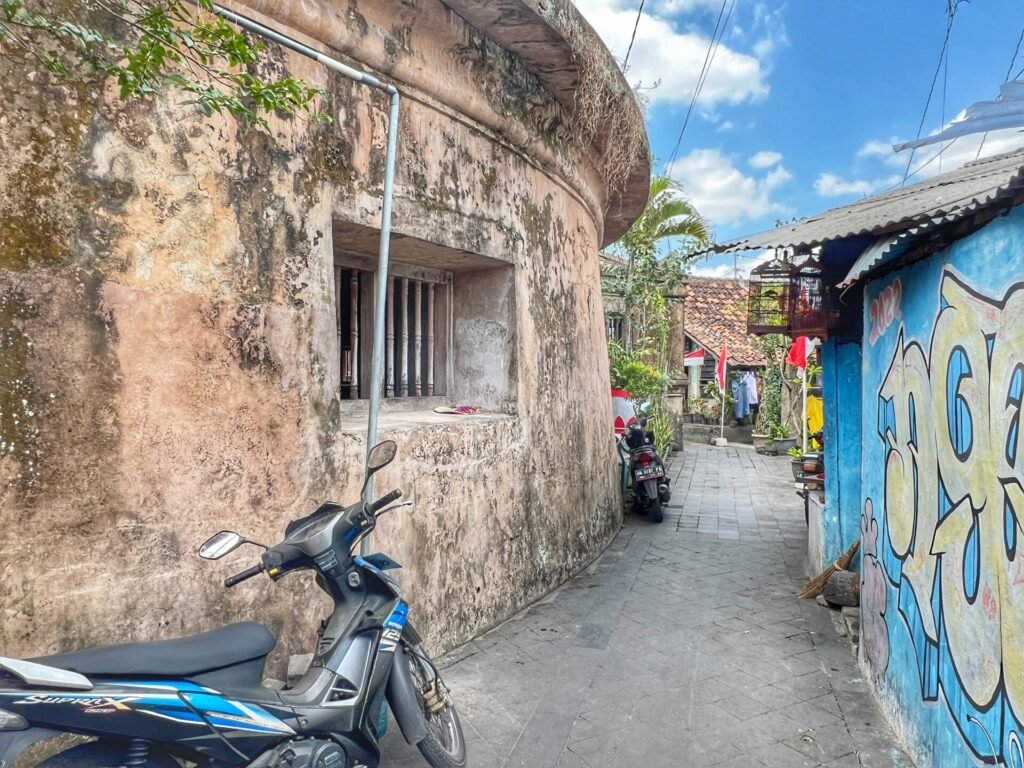
The exterior of the underground mosque is one of the notable features of the complex. Unfortunately, it was closed off on the day we went.
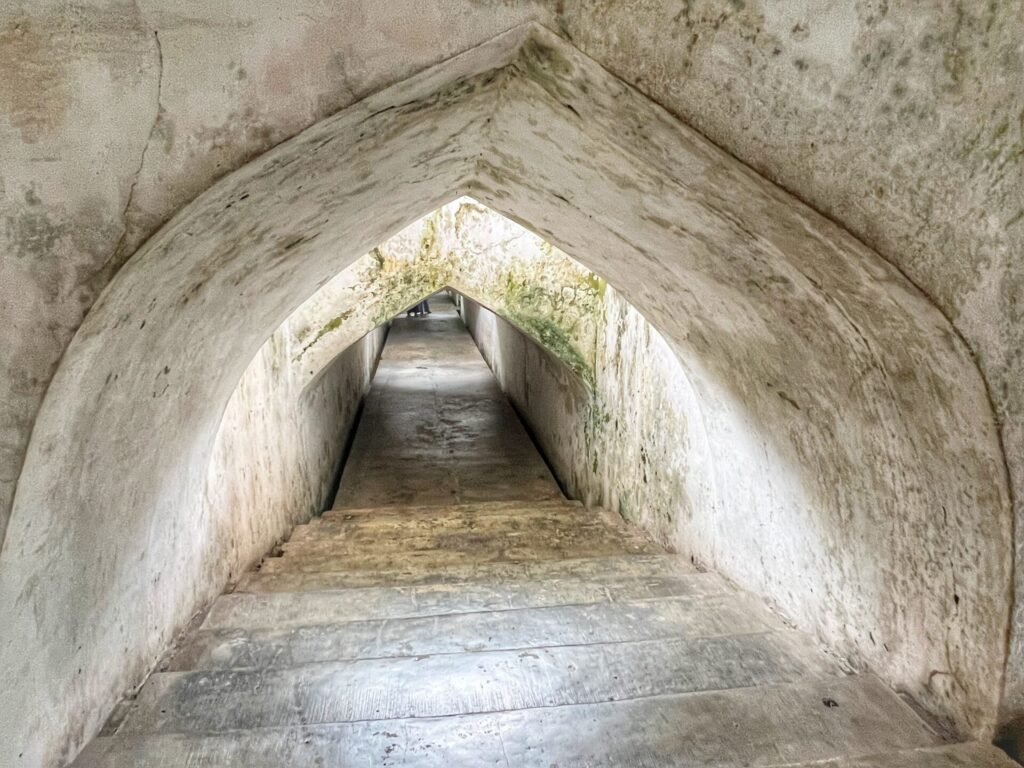
It is quite clear, however, that the underground network must be extensive based on the exposed tunnels. What a great place to explore!
Exploring Yogyakarta (aka Jogja)
There is no denying that Yogyakarta is the most touristed city we would stay in during our three weeks in Java. However, we wanted to make sure we still experienced the local side so from our apartment, we walked 50 minutes to the extensive weekly university Sunday Market in the north part of the city. Here we were met with a very different world than the center…definitely one without faces similar to our own, different foods than we’d seen before and a genuine sense of welcoming curiosity and smiles.
This section also includes some of the other city explorations we did, and our experience of buying alcohol in a land where most don’t drink, which felt a bit…mischievous. 😅
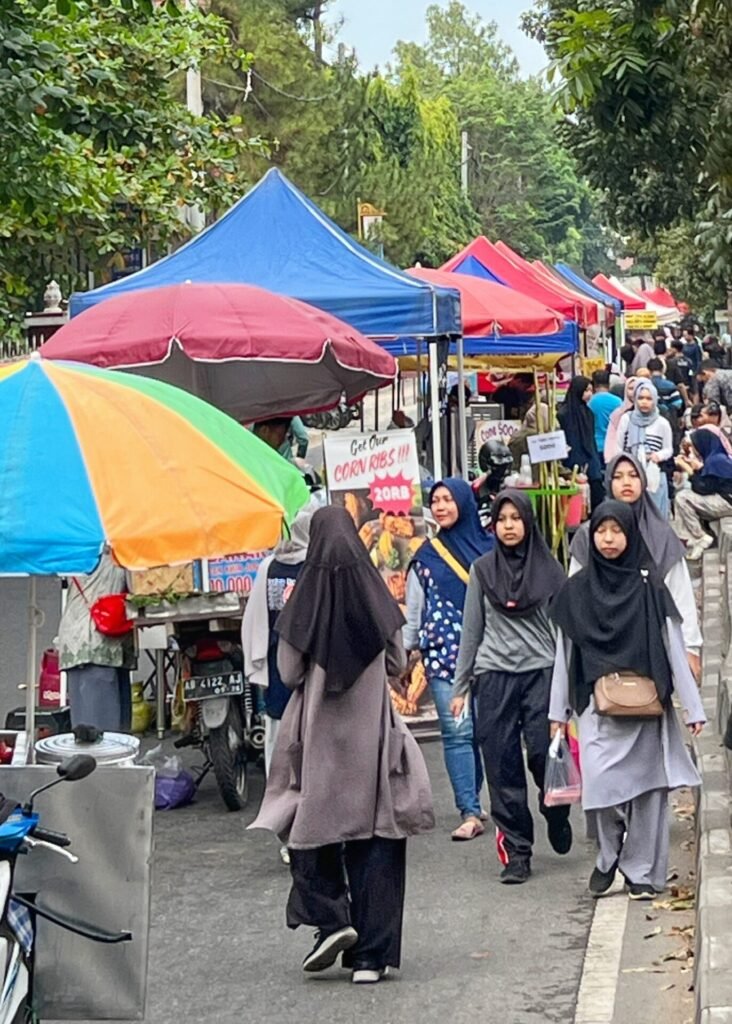
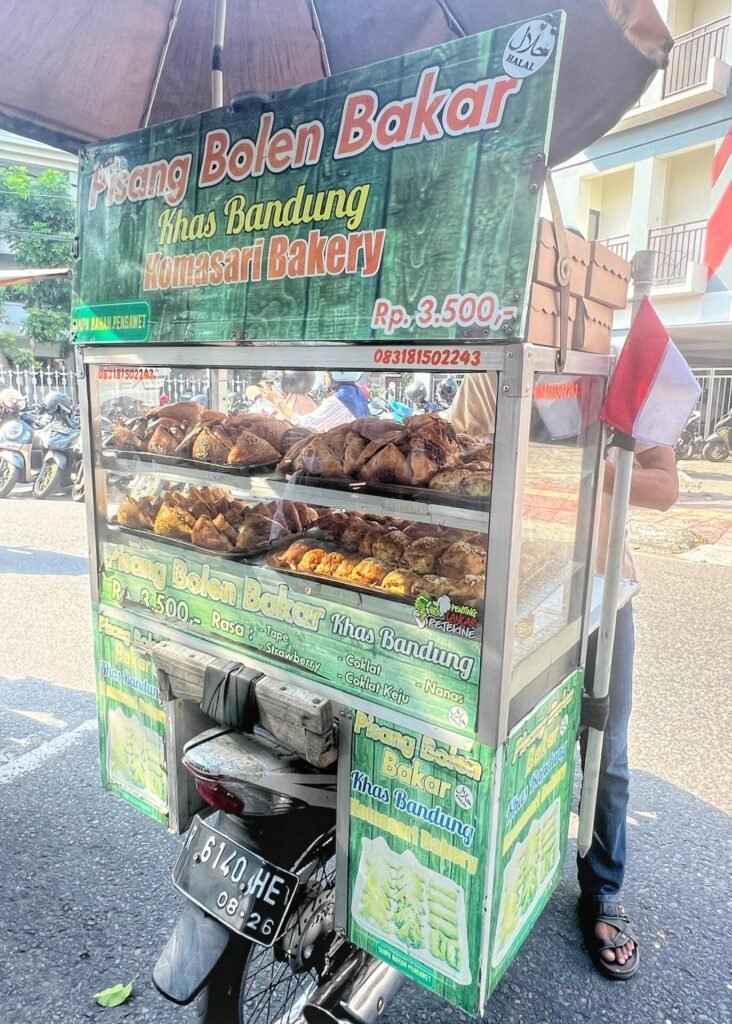
The weekly Sunday market is at Gadjah Mada University or UGM from 7 am-12 pm. It was one of the most extensive grassroots markets we’ve ever seen seemingly flowing for kilometers with street food, goods, and clothing. For example, why not have a bakery on the back of a moped?? We had a little sample. It’s hard to spend more than $5 getting a very full tummy.
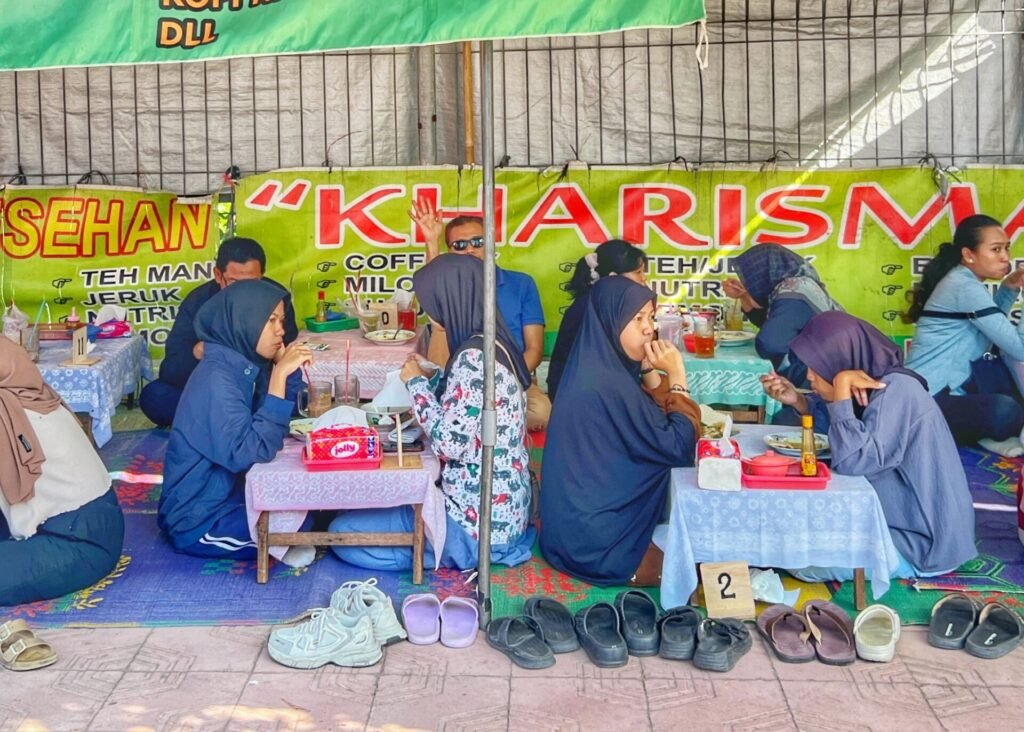
The market also has a social element where everyone pops a squat on the sidewalks, which are blanketed with mats and preschool-worthy floor tables. Just make sure to kick off your shoes before sitting at one!
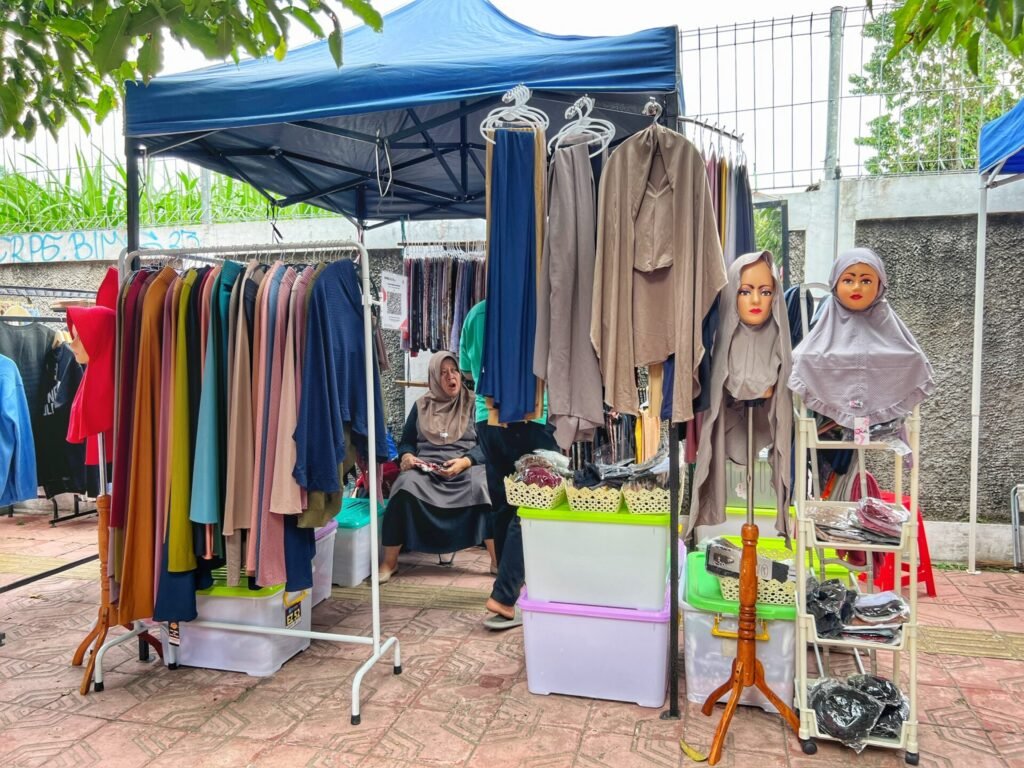
Also, pay no attention to the decapitated heads sporting the latest in Muslim fashion!

Although it’s definitely not Indonesian, one thing Greg had to have was a Japanese taiyaki fish stuffed to the gills with peanut butter which cost about $1 less than in Japan.
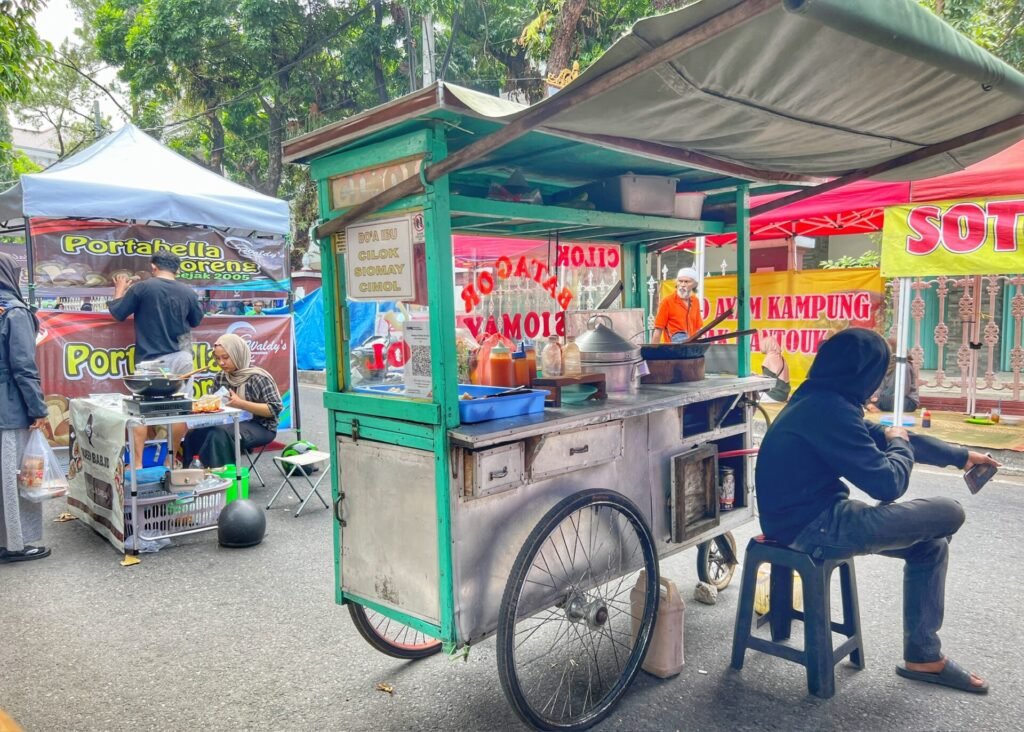
We actually just enjoyed checking out the street cart set-ups. Some were so smartly self contained.
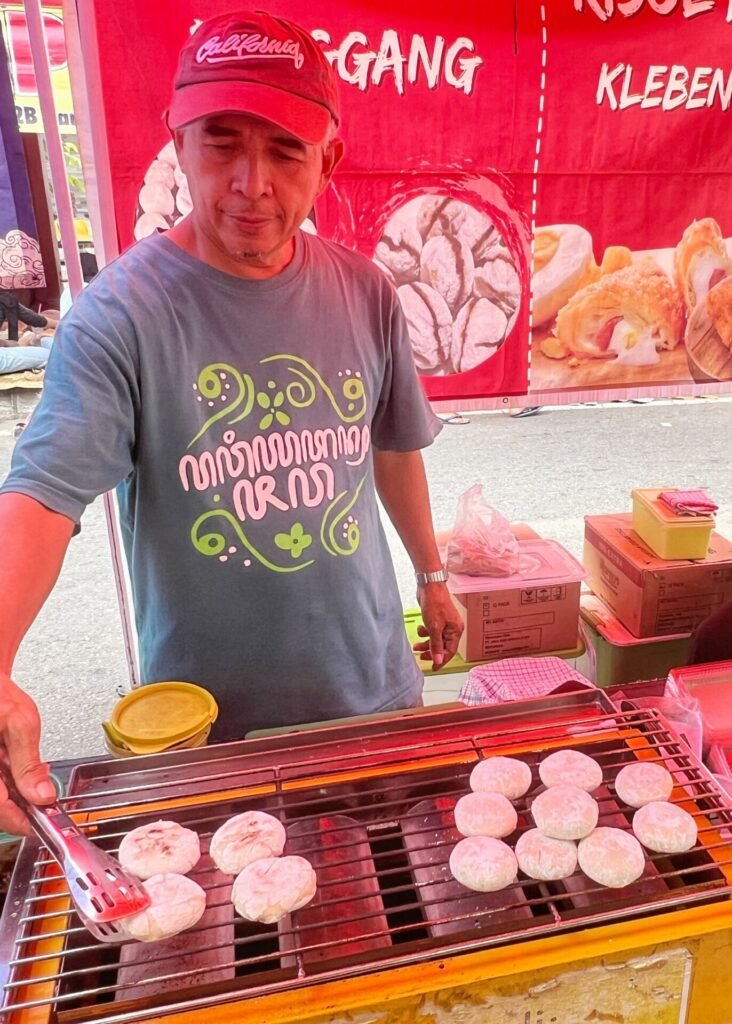
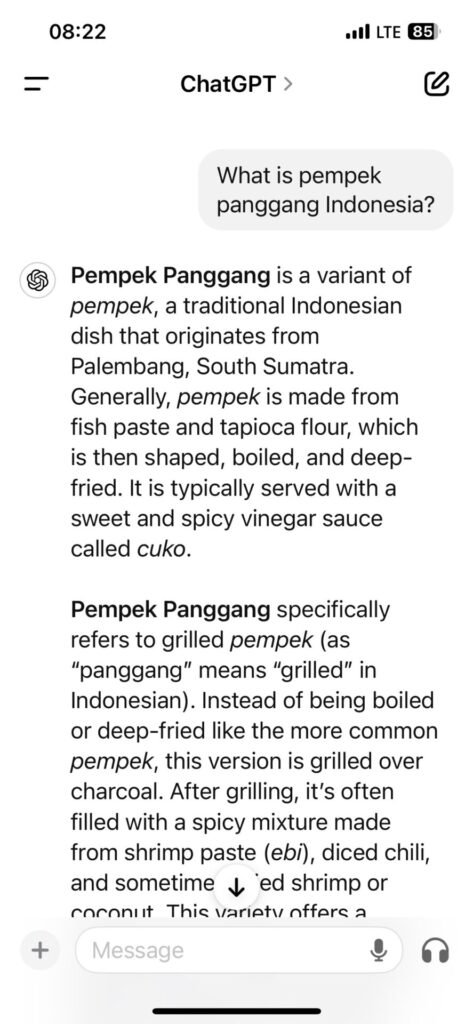
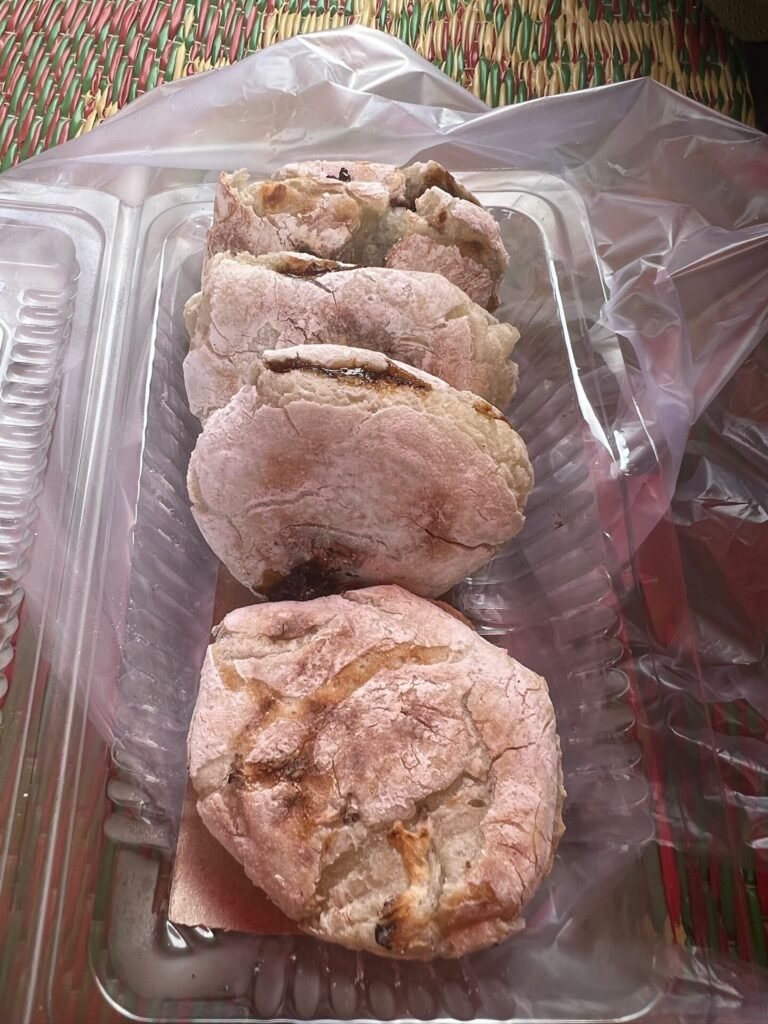
That said, sooo many of the carts were filled with fried food, fried food and more fried food so Mandy immediately was drawn to these little doo-hickeys which were grilled. However, not a lot of English was going on by the vendor so it was hard to tell if the name, “Pempek Panggang” was something savory or something sweet. Thankfully, we’re getting the hang of using Chat GPT to identify unknown things, which has been a total street food game changer.
Turns out, they’re definitely not sweet and in fact stuffed with an odd tasting and quite spicy shrimp paste. Not the best, but always have to try new things! ($.60)
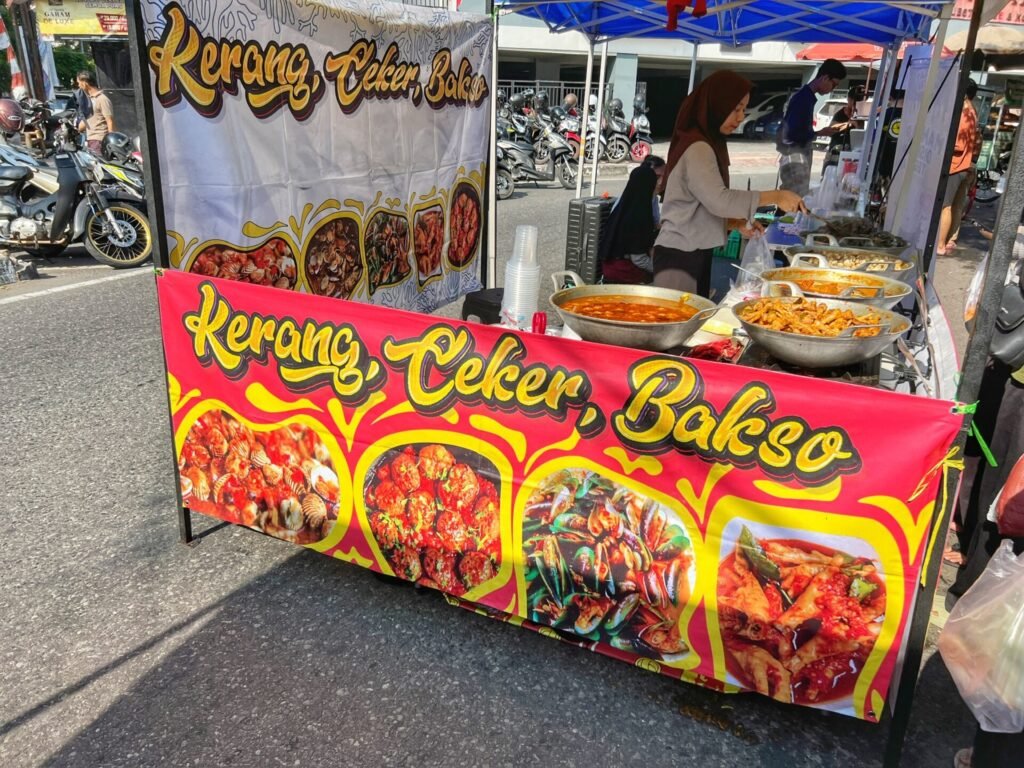
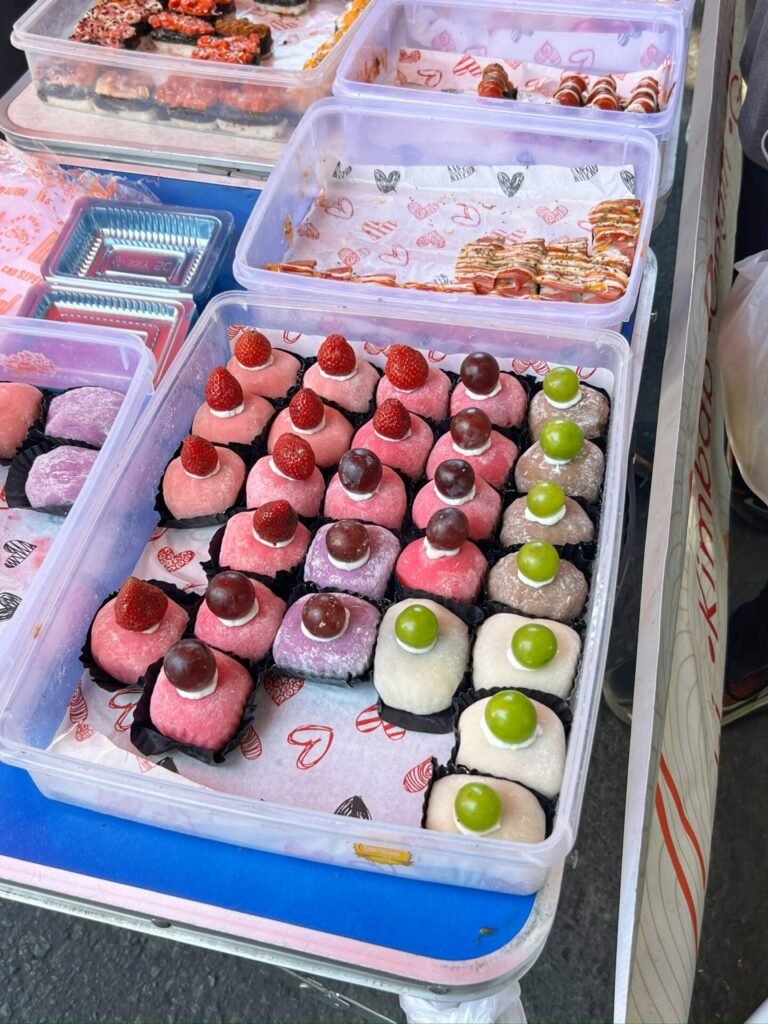
Bakso…Indonesian’s traditional meatball soup which in Greg’s experience has a lot more unidentifiable meats than just the balls. In other ball-ish forms, more cutesy Japanese designs caught our eye with these mochi desserts.

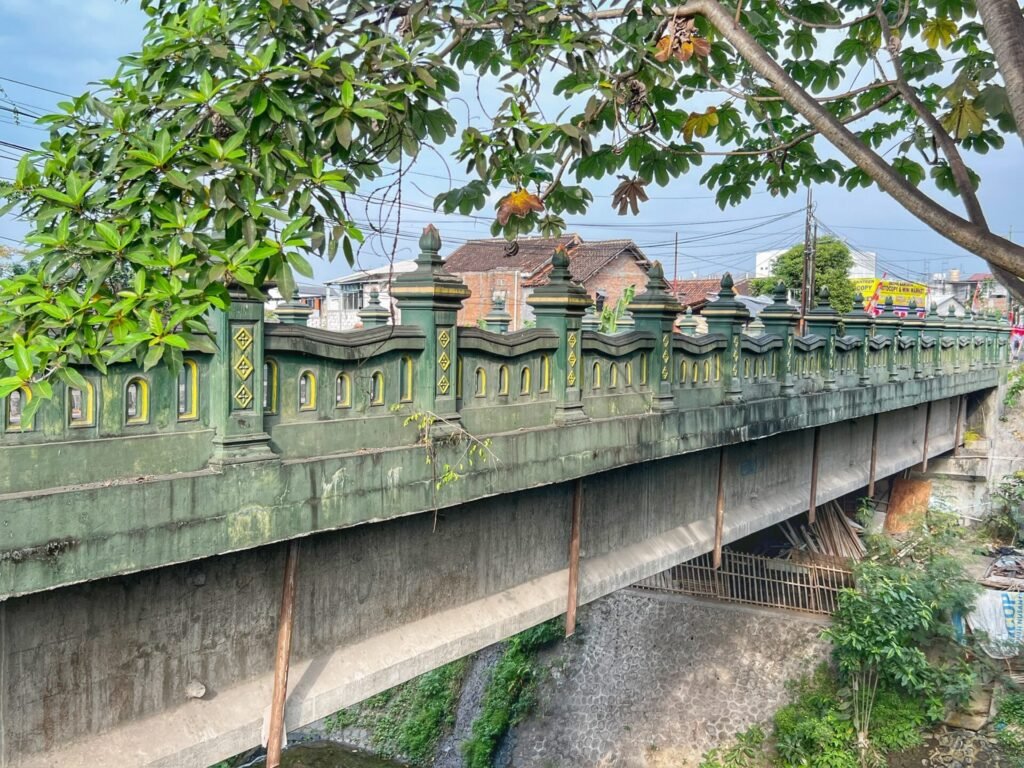
The booths went on and on and on, until we crossed back on this beautiful bridge. Surprisingly, Jogja, as well as most Javanese cities we’ve been to, have been pleasantly walkable by Asian standards, meaning there’s somewhat of a sidewalk, you don’t have to be overly concerned with plunging into holes and sometimes there’s even the true luxury of crosswalks! Certainly a better experience than what we’ve experienced in Vietnam or Malaysia recently.
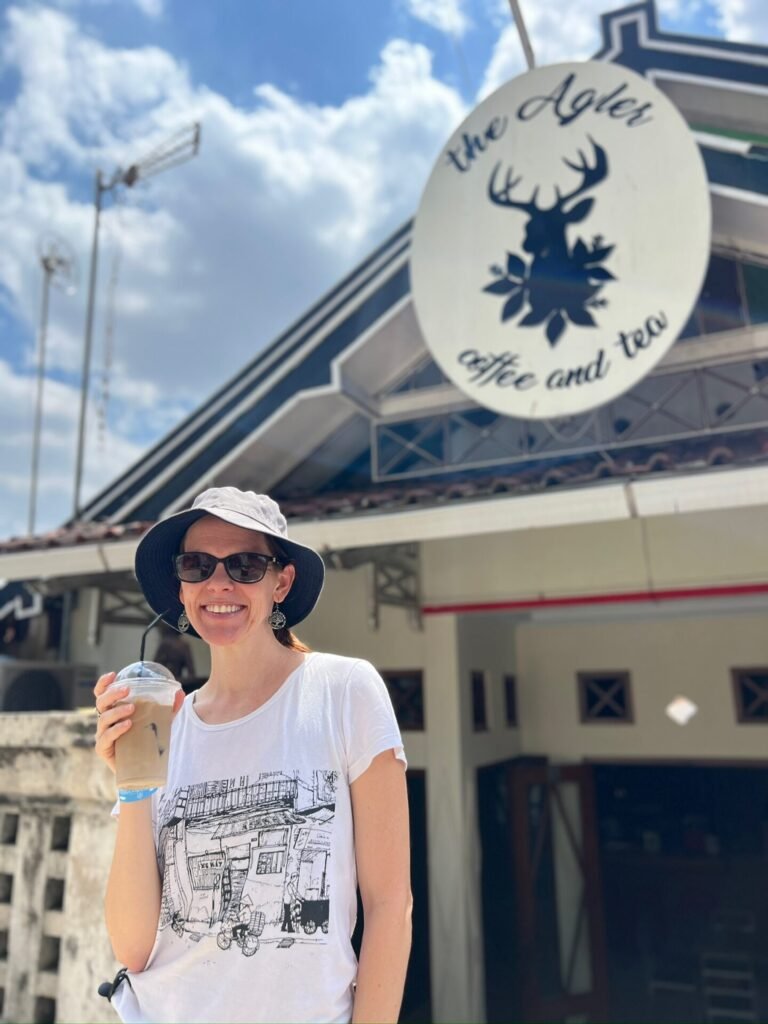
On another day, grabbing a $1 iced coffee. Mmm. Like Vietnam, Indonesia does coffee robustly.
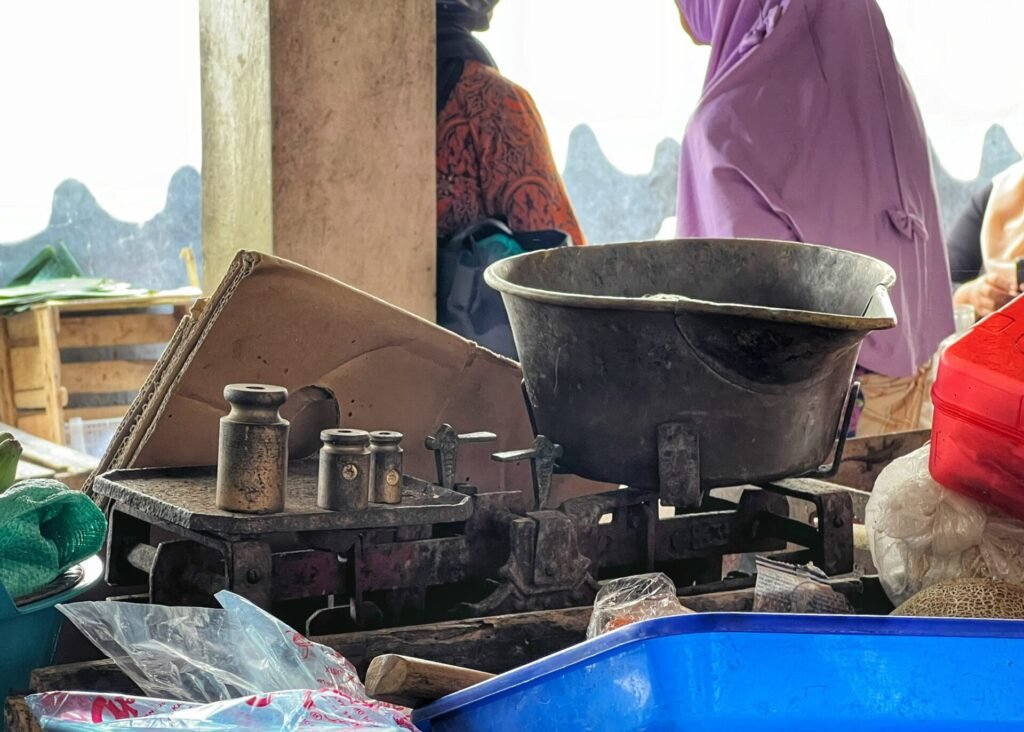
Visiting a traditional market near the Taman Sari Water Castle, where they weighed our fruit using a hand weighted traditional scale. Wow. Fascinating.

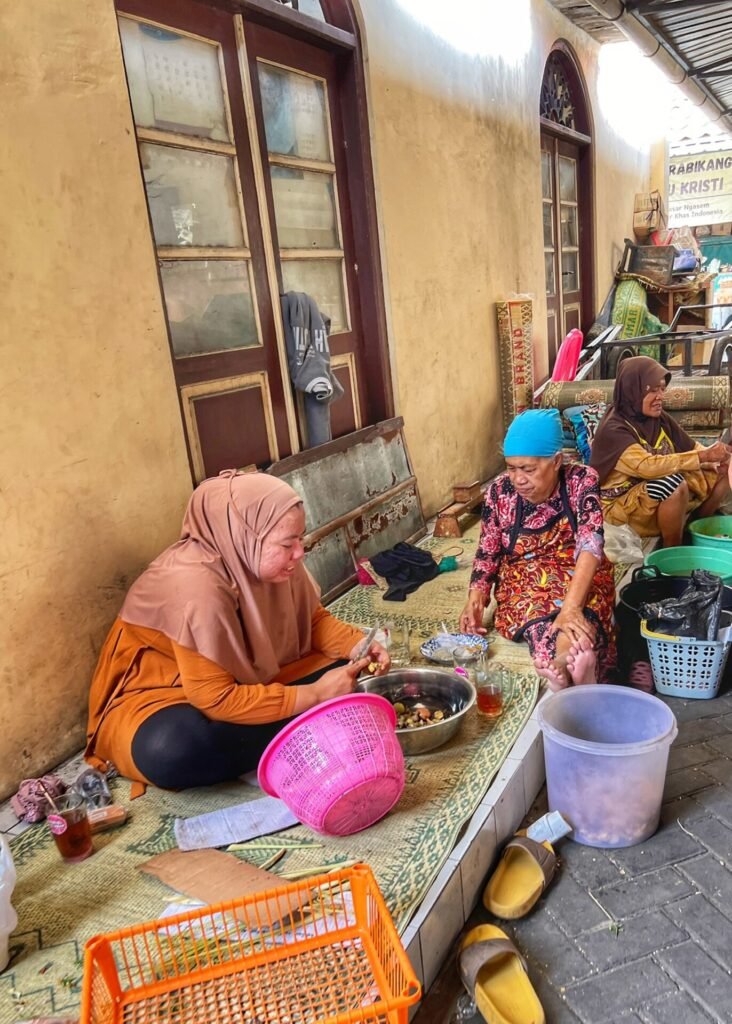
The market was hyper local which meant its musical accompaniment was provided by caged songbirds, and the ladies were doing food prep in bare feet while squatting on the sidelines.
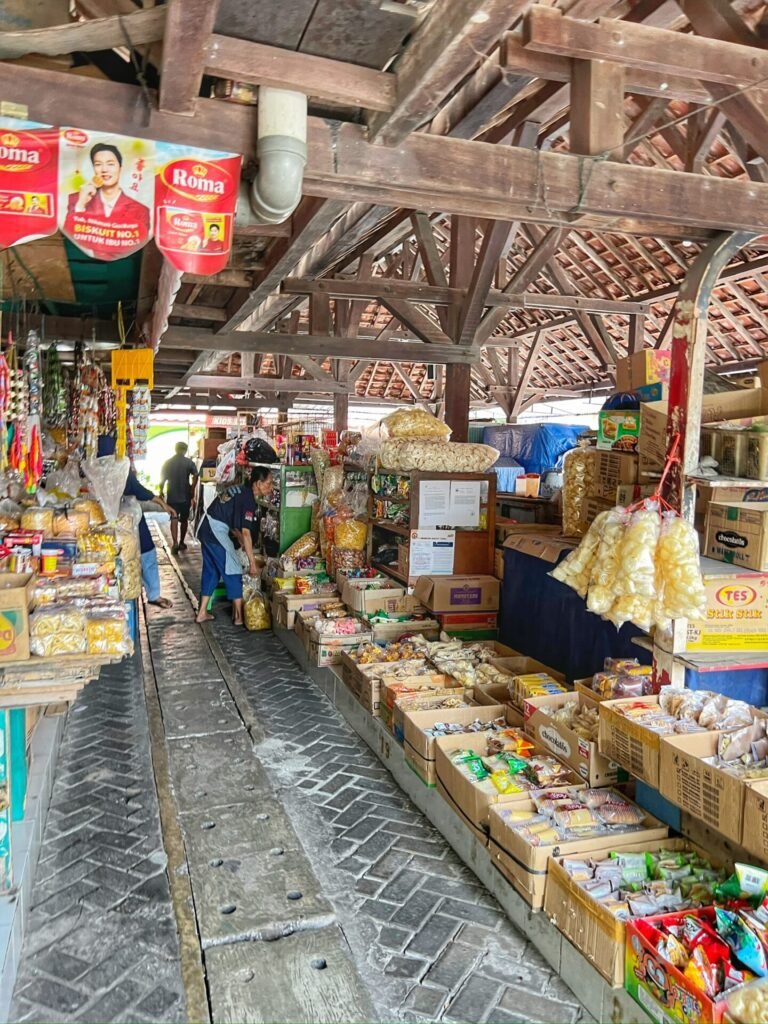
There was a LOT of processed food but also plenty of oil-laden meal options.

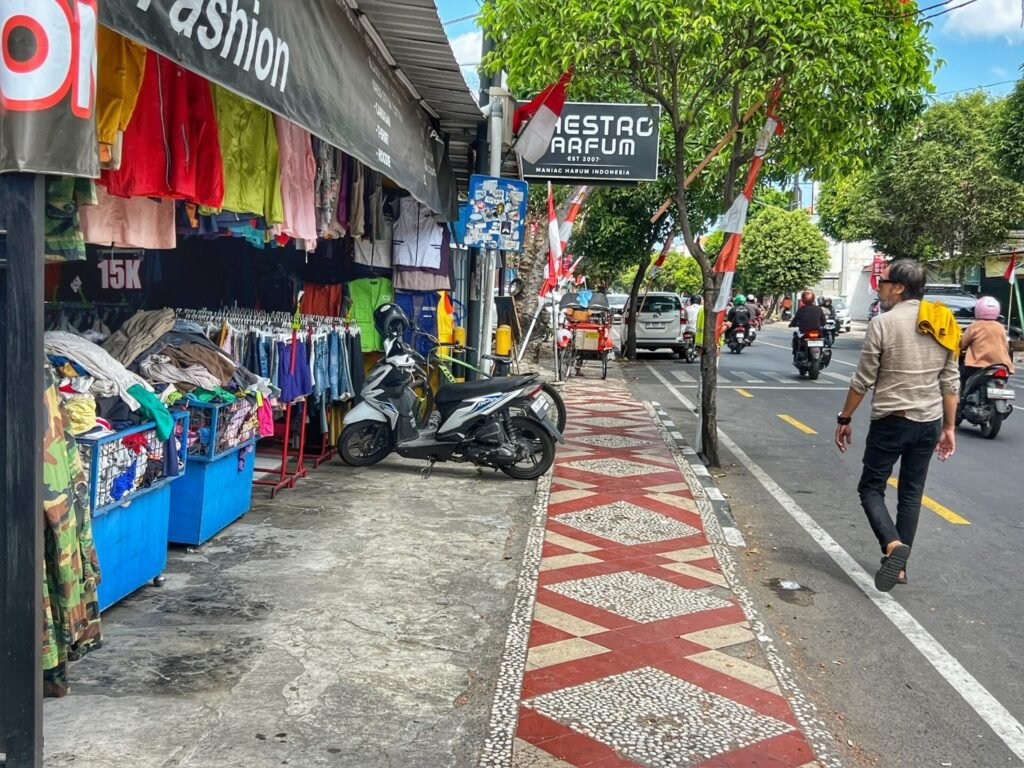
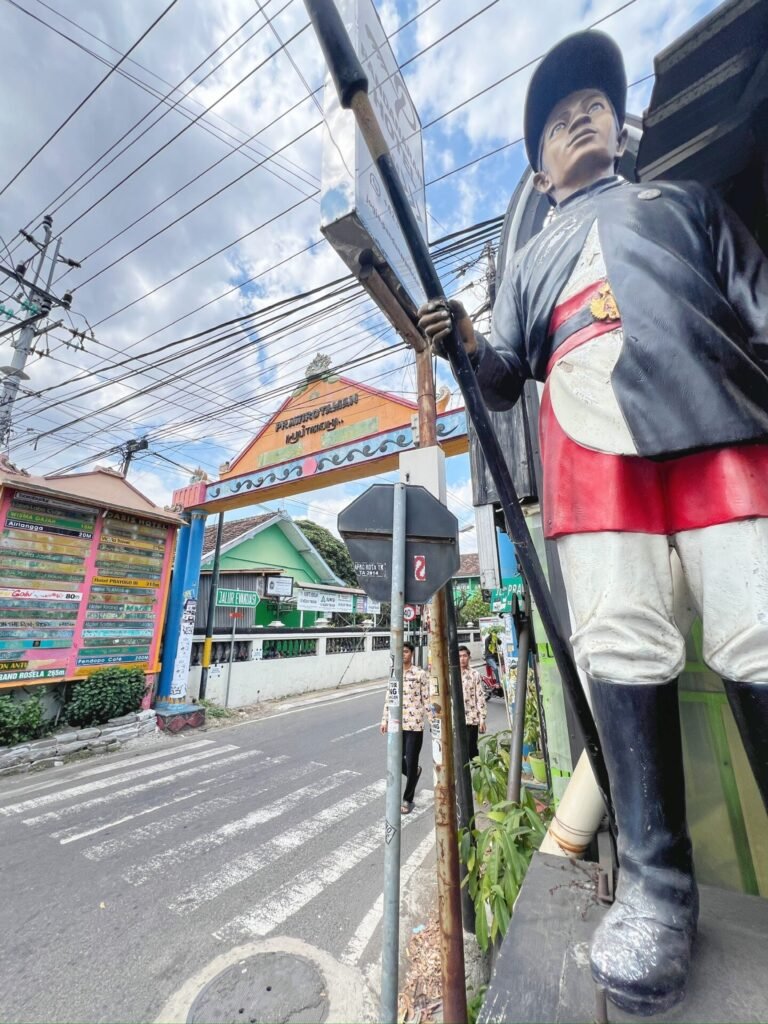
But alas, that day we were heading somewhere else. If only these adorable rides had drivers! We didn’t really need it however, because, not only are there walkable sidewalks in the Jl. Prawirotaman backpacker friendly neighborhood, but TILED walkable sidewalks and drivers that park their mopeds off the pedestrian zones. Ooo la la. From here, Mandy chose to head past the guards in this neighborhood for her birthday lunch at Black Forest Cafe.
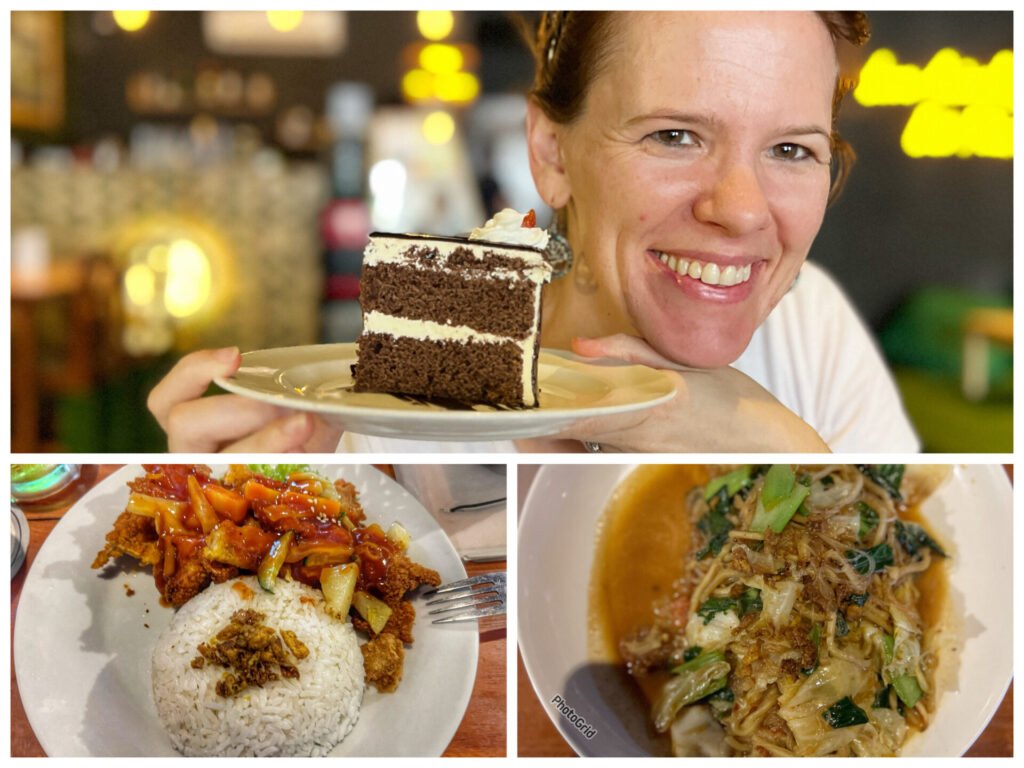

Here she ordered a delicious strawberry tea and Greg, a beer, which he’s been “suffering” a shortage from. Our two vegan meals, two drinks and a slice of Black Forest cake came to $12 which is not too bad for a birthday “splurge.”
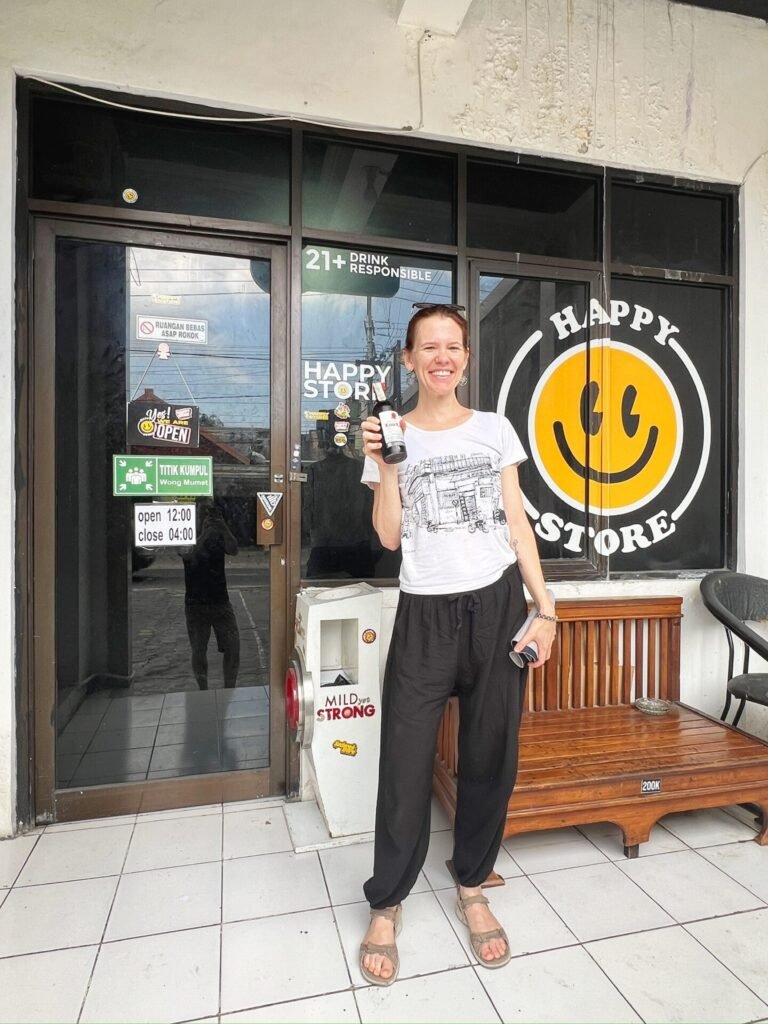
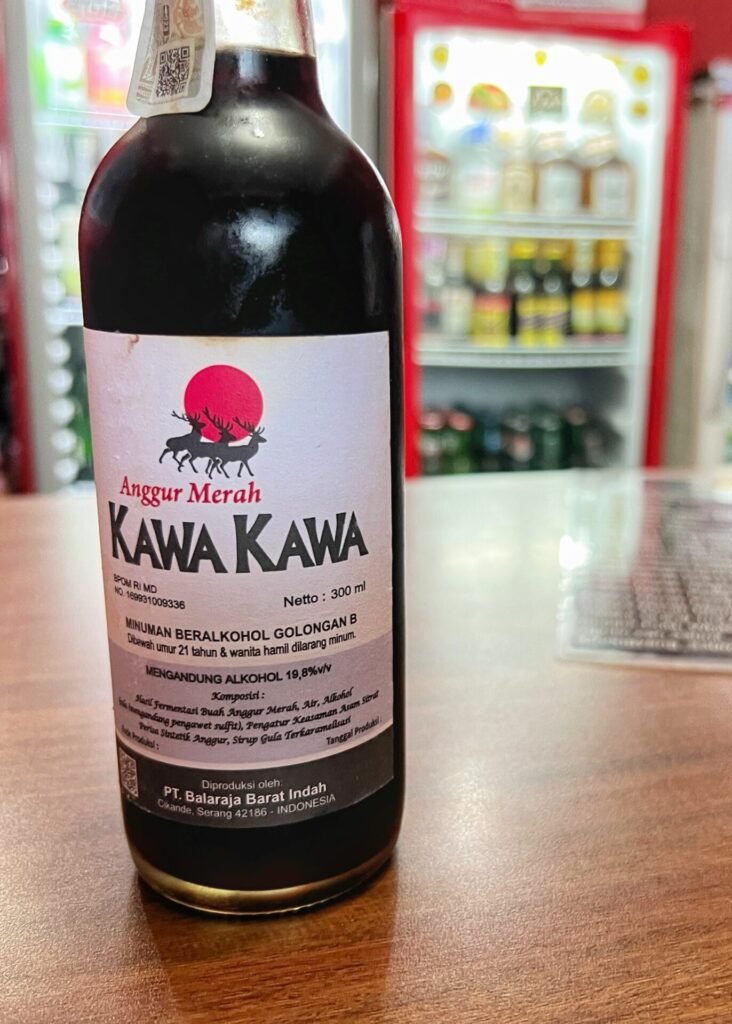
After that we sought out more birthday goodies in the form of a, “Happy Store,” which felt a bit illicit like walking into a pot shop for the first time in the States. Although she was really craving a Cab, the frugal birthday girl was easily swayed to try the local stuff for far cheaper.
We settled on Kawa Kawa ($3) which we’ve heard can be a bit hallucinogenic in the South Pacific Islander culture. But in Indonesia, according to Chat GPT, it is a traditional herbal wine made from the leaves of the *Piper aduncum* plant, where the leaves are sometimes fermented or used in alcoholic concoctions to produce a mildly intoxicating drink. At 20% alcohol, we can confirm the wine has relaxing and therapeutic properties. 🤣 This type of beverage is more commonly found in traditional or indigenous communities, and it’s not as widely consumed or known as other local drinks. It was slightly fruity and quite tasty.
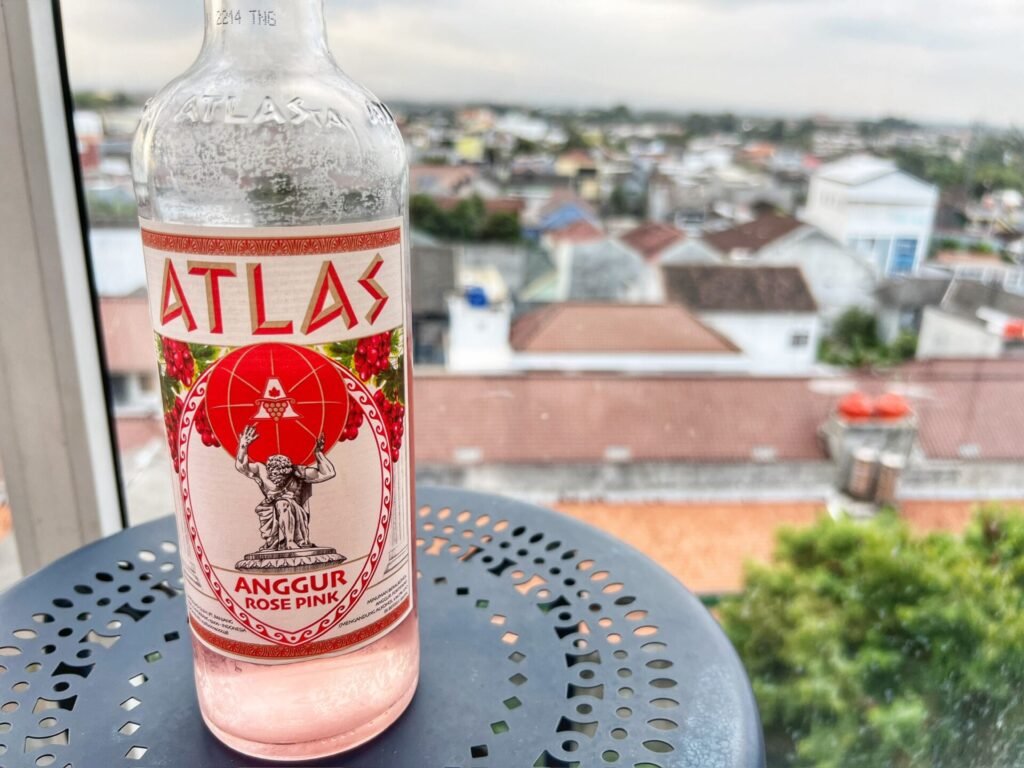
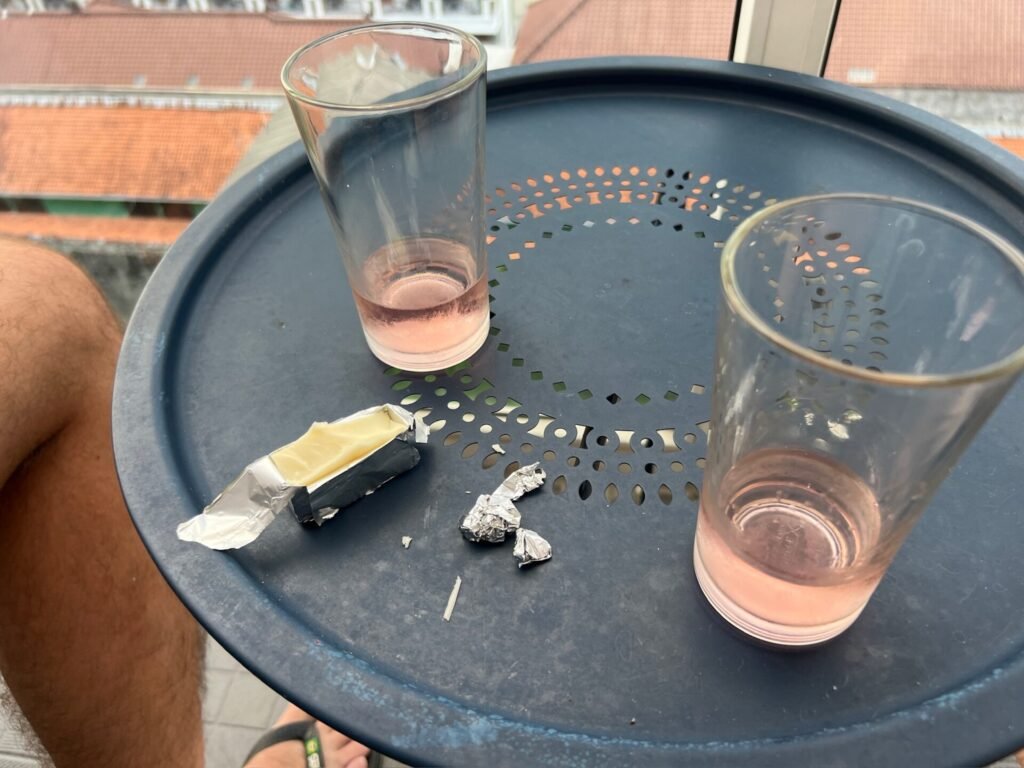
Definitely more so than the other bottle we bought…a local rosé with again, a high alcoholic content. ($4) We had it with a “local” cheese which simply meant bought locally at the supermarket. The cheddar packet was wrapped in foil and a bit wiggly. Who needs France when you have Indonesia?! In conclusion, Indonesia surprisingly does not excel in the alcohol, nor cheese department. 🤣 Ah, well, it’s got other things going for it…
A Batik-Making Birthday Party
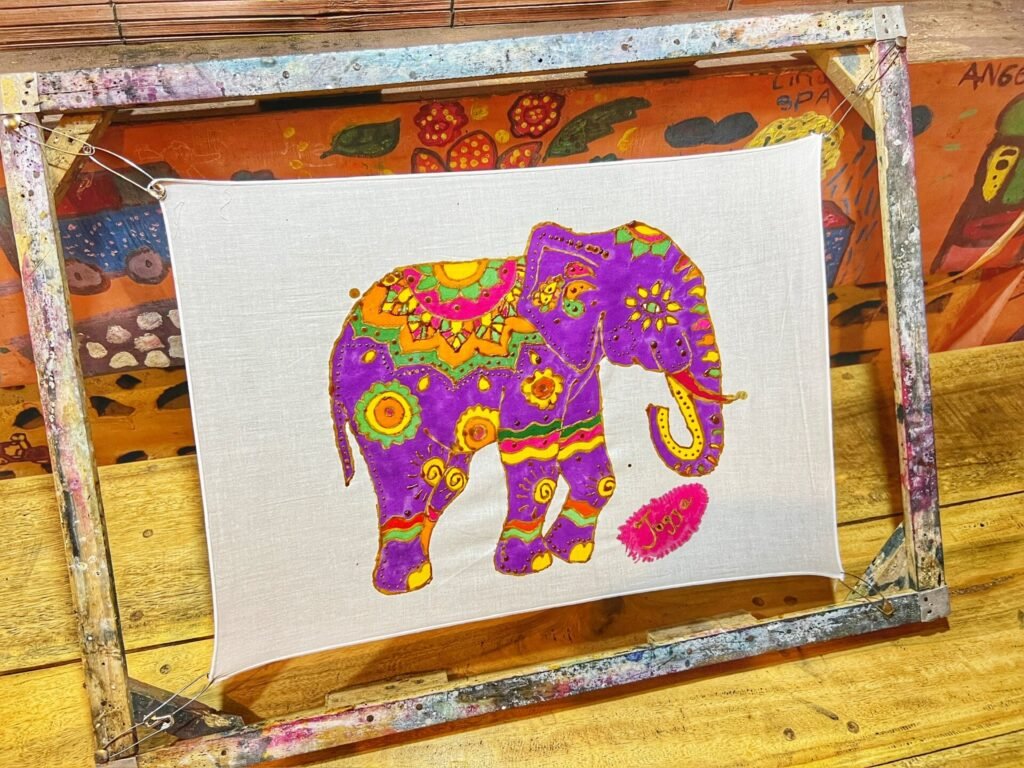
Mandy journeyed to the age of 44 in Jogja and to celebrate wanted to do something artsy. Due to circumstance, it’s not something we get to do often. However, there was no better opportunity for a personalized experience than in the tourist magnet of Jogja, which is on the island of Java where batik fabric dying originated.
Since the 13th Century, Batik has been an ancient art form made with a wax resistant technique. In other words, the the fabric is dipped in wax and then dyed. The parts of the wax that are covered in wax will remain their original color, in this case white, while the dye will permeate the rest of the material.
The lengthy 5.5 hour cultural experience with Nunung and her family also included a traditional homemade meal with a birthday bonus and a tour of their village. We couldn’t recommend it more!!
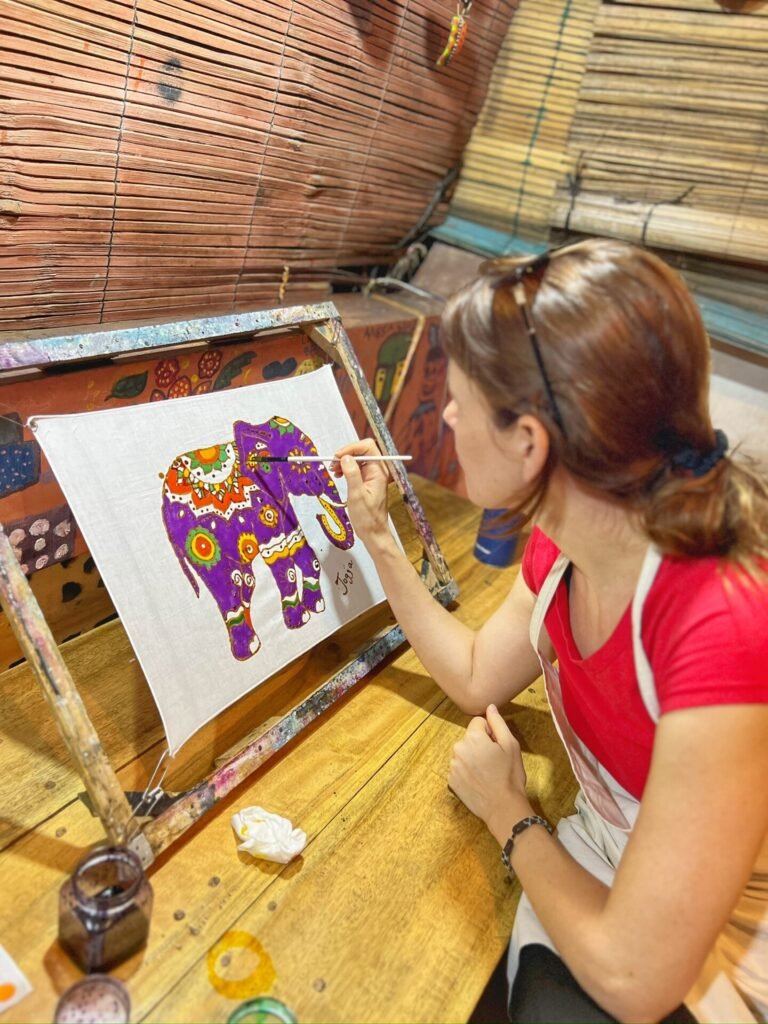
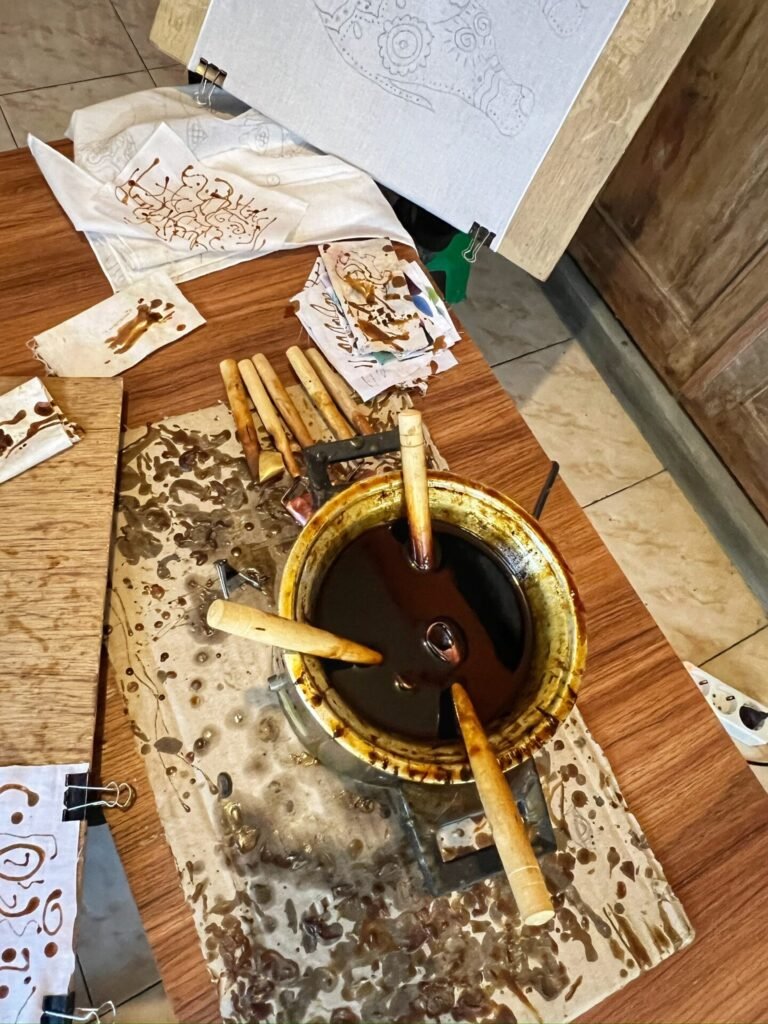
The private Airbnb experience was a terrific value for $27/person and took us to a family’s home in a local neighborhood called Kotagede.
When we first walked into the home of Nanung, we took one look at the bowl of the hot syrupy looking concoction made of paraffin and beeswax and wondered what on earth two not-so-artsy people like us would possibly create with those. But, alas, life is about new experiences. And anxiety…art anxiety. 🤣
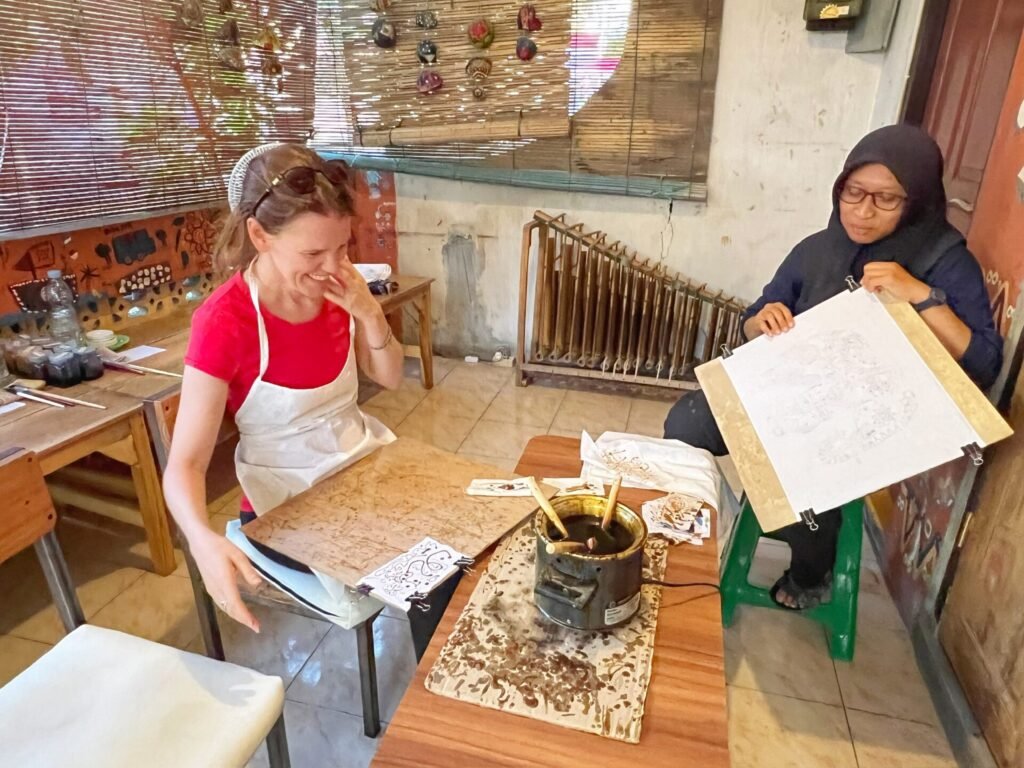
Mandy timidly looks at the easel in front of her. It’s been awhile since her acrylic painting days of 2006/2007 (what she now quantifies as her “dark” period pre-Greg and pre-Prague 🤣)
It was at this point that Nanung gave us our first instructions and taught us how to use the wax wand, aka a Tjanting, or Canting tool, which can definitely be a little tricky.
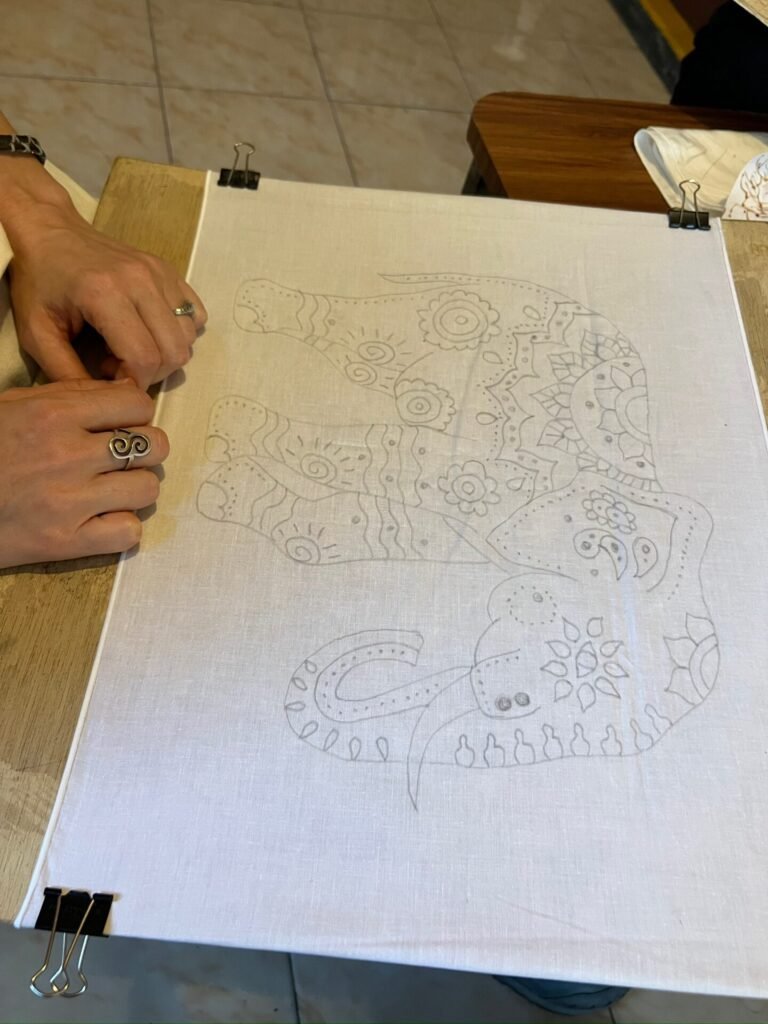
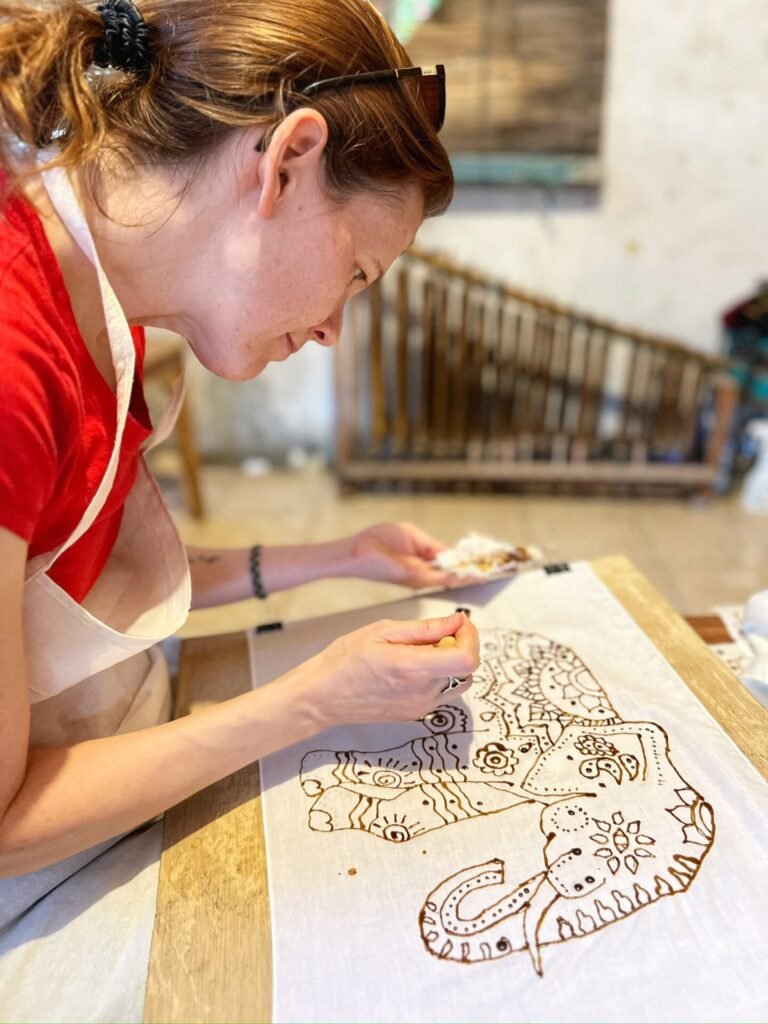
She then presented us with a pile of hand drawn stencils on cloth canvases to choose from (phew!) It would then take at least an hour to carefully retrace those lines with hot wax during which we fortunately we found a serene and therapeutic flow. (Both literally with the wax and figuratively with the calming effect of the art.)
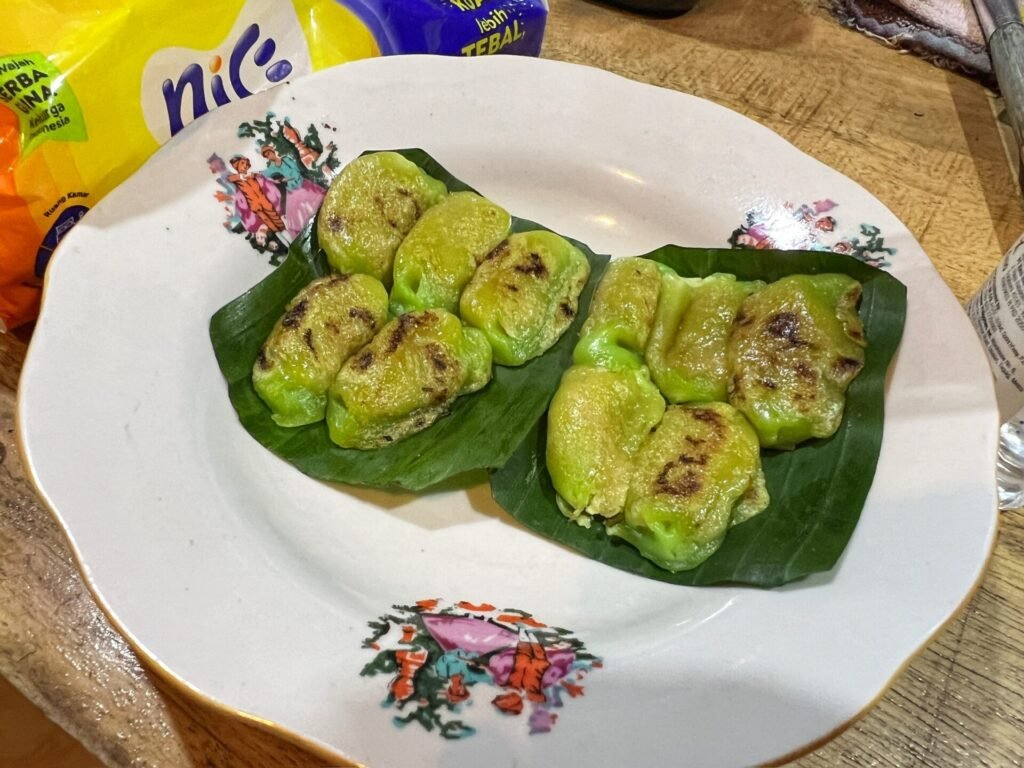
By then, we’d worked up quite an appetite burning all those wrist calories, so Nanung swept in to present us with coconut jelly cakes served on banana leaves. Although the Indonesians seem to dump sugar in any possible thing they can otherwise, these cakes seemed to show no sign of cavity induction.
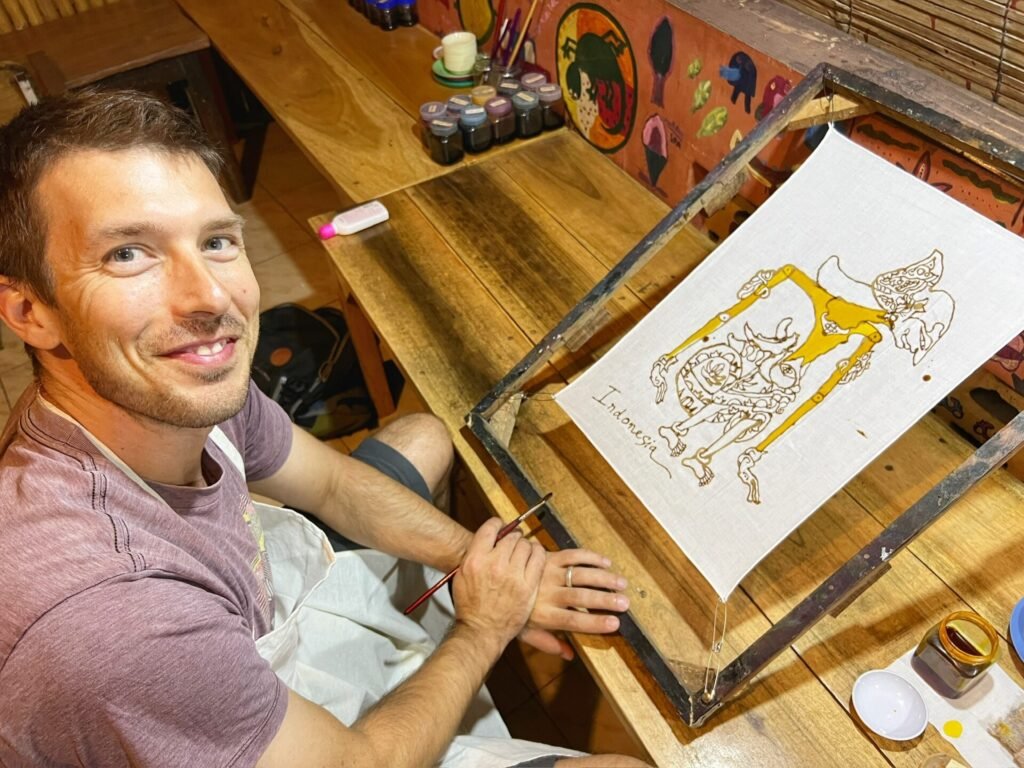
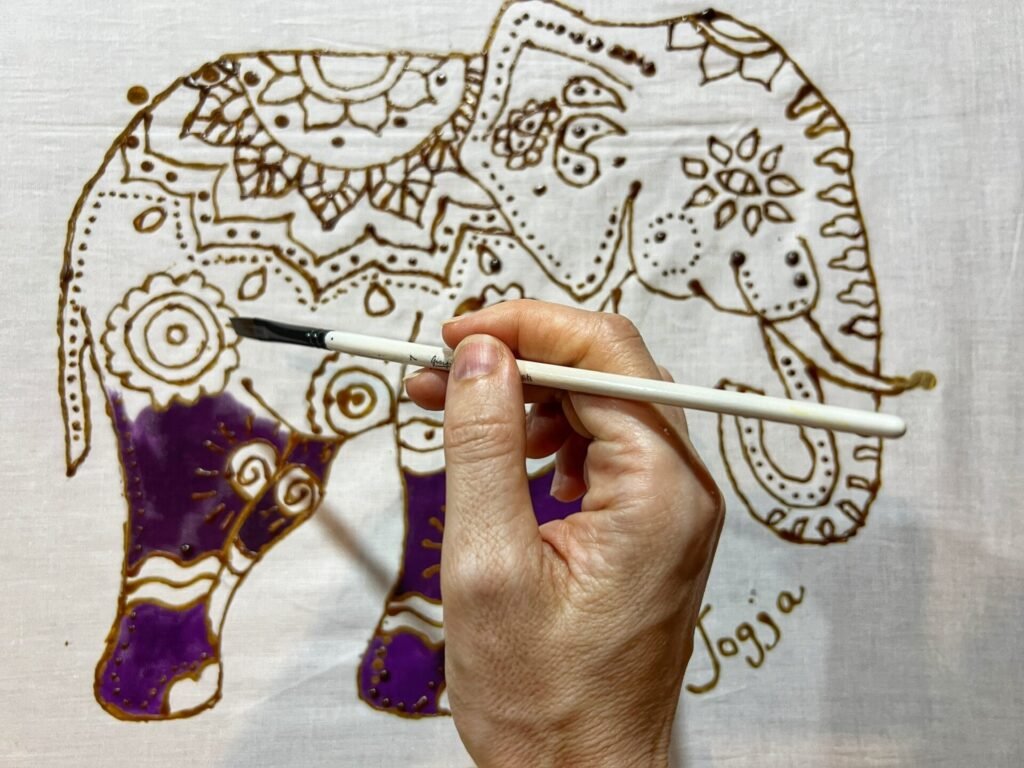
It was then time to migrate to phase two of the project…painting. Greg chose to work with a traditional depiction of Indonesian culture with one of their puppets used in Wayang, or puppet theatre. Mandy pointed out that it just looked creepy, and stuck to her “boring” elephant. Sadly, elephants no longer live in Indonesia other than on Sumatra, although the ones that do are not as Barney-esque as this one.
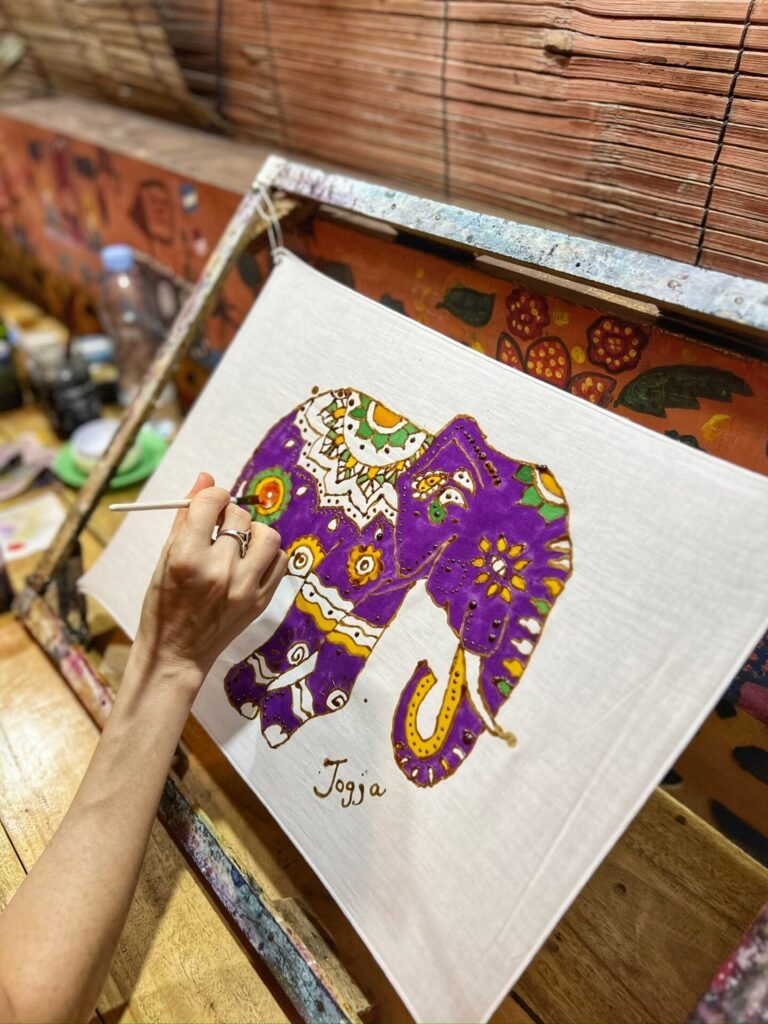

The dying was done with a watercolor paint. Because of the wax, it won’t bleed from one area of the cloth to another.
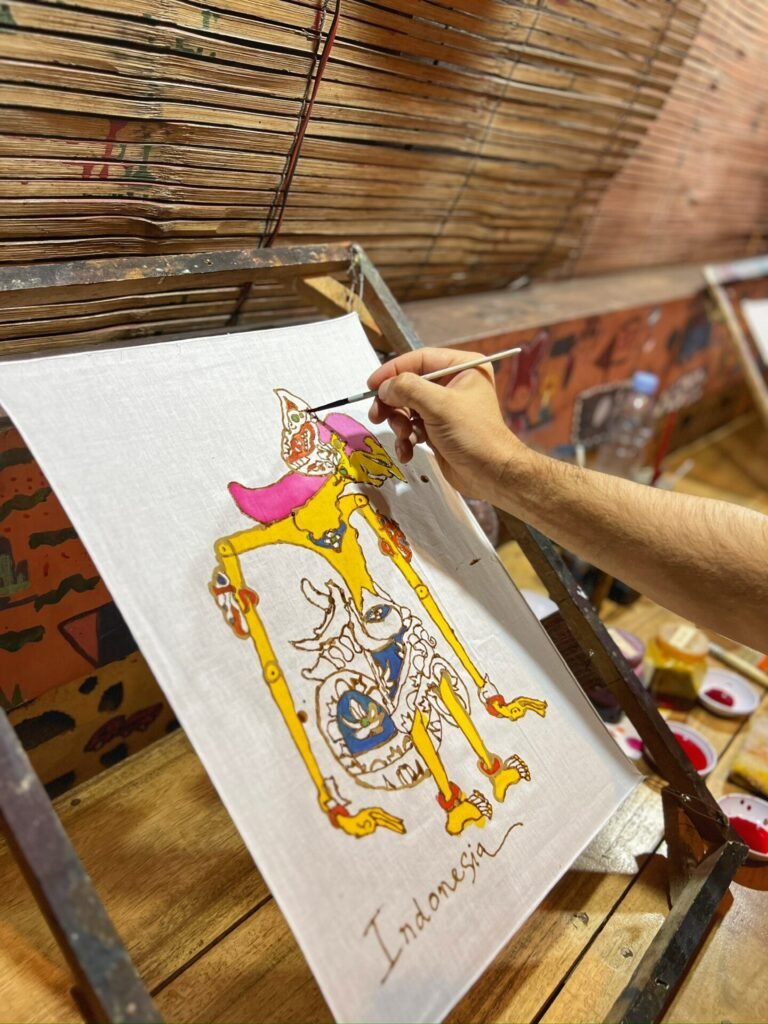
The stuff of nightmares.
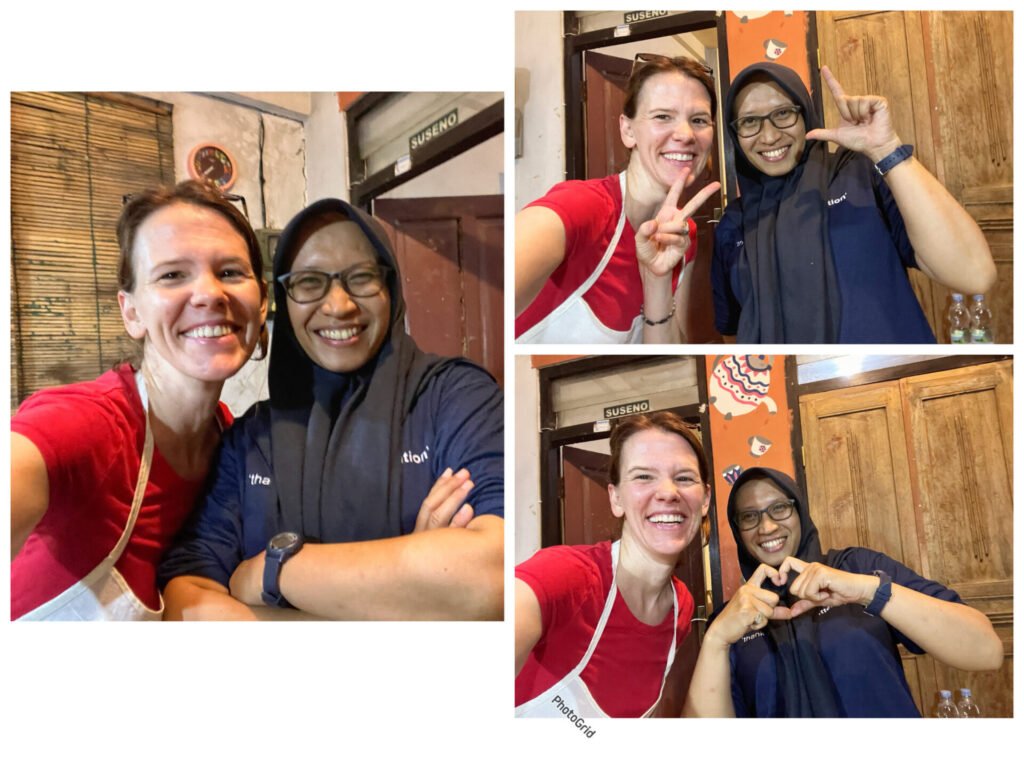
After finishing, Mandy got to have some more chat and selfie time with Nanung, who was insistent upon doing something besides a peace sign or K-pop heart (like every other Asian.) So, since she had already taught US so much, Mandy mentioned that crossed arms were not the most inviting body language and that the “L” means loser in sophisticated American ‘90s slang, so we ultimately settled on a heart. ❤️ It was truly so wonderful to get to know her.
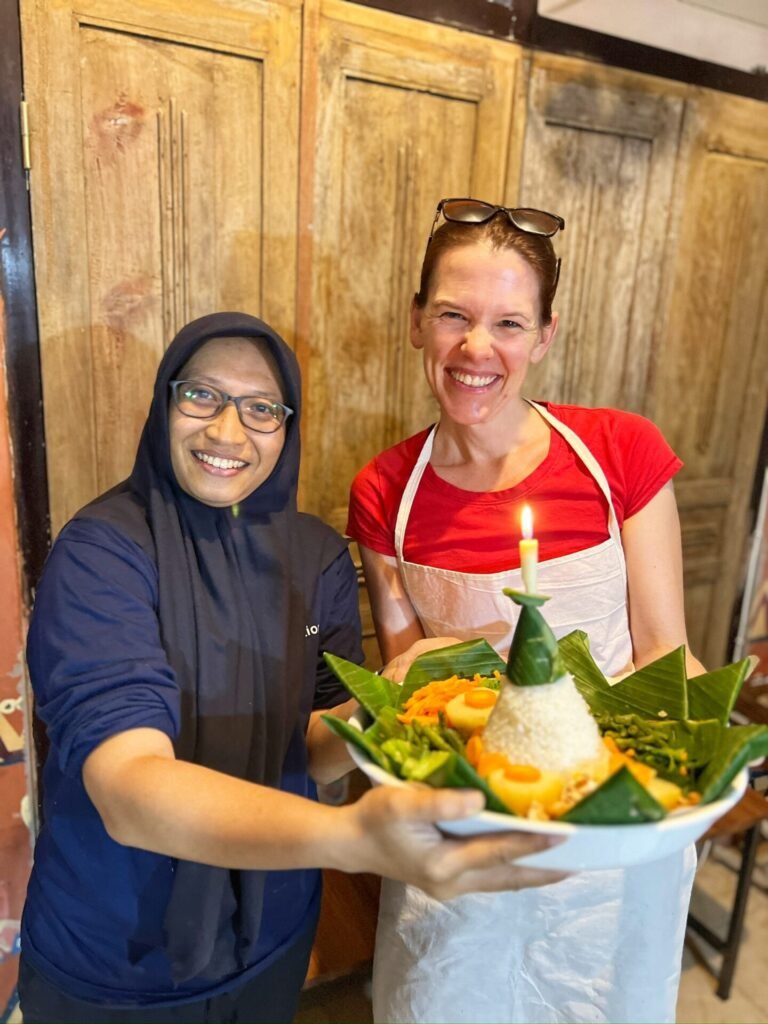
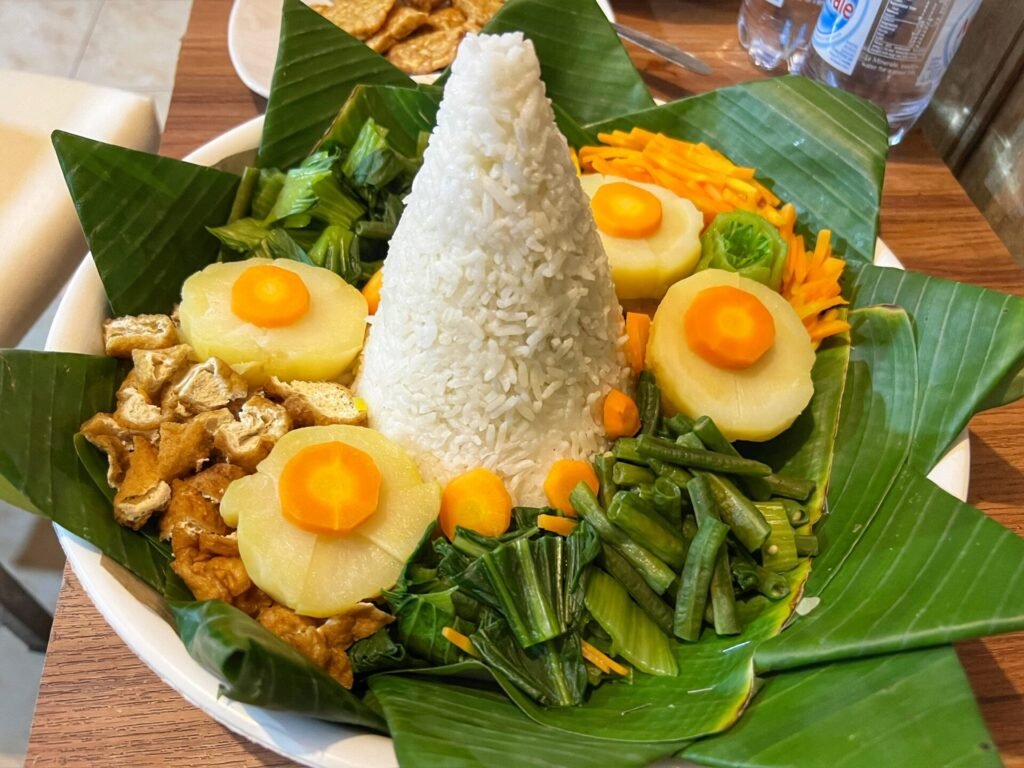

She, and her mother, then presented Mandy with Gado Gado pooled around a rice volcano with a spewing lava birthday candle, who couldn’t have been more excited. Gado gado (literally translated to mean Mix Mix) is conveniently Mandy’s favorite Indonesian dish and a vegetarian’s fantasy …a traditional salad made of a mix of blanched and raw vegetables, boiled eggs, tofu, tempeh, all served with a rich peanut sauce dressing.
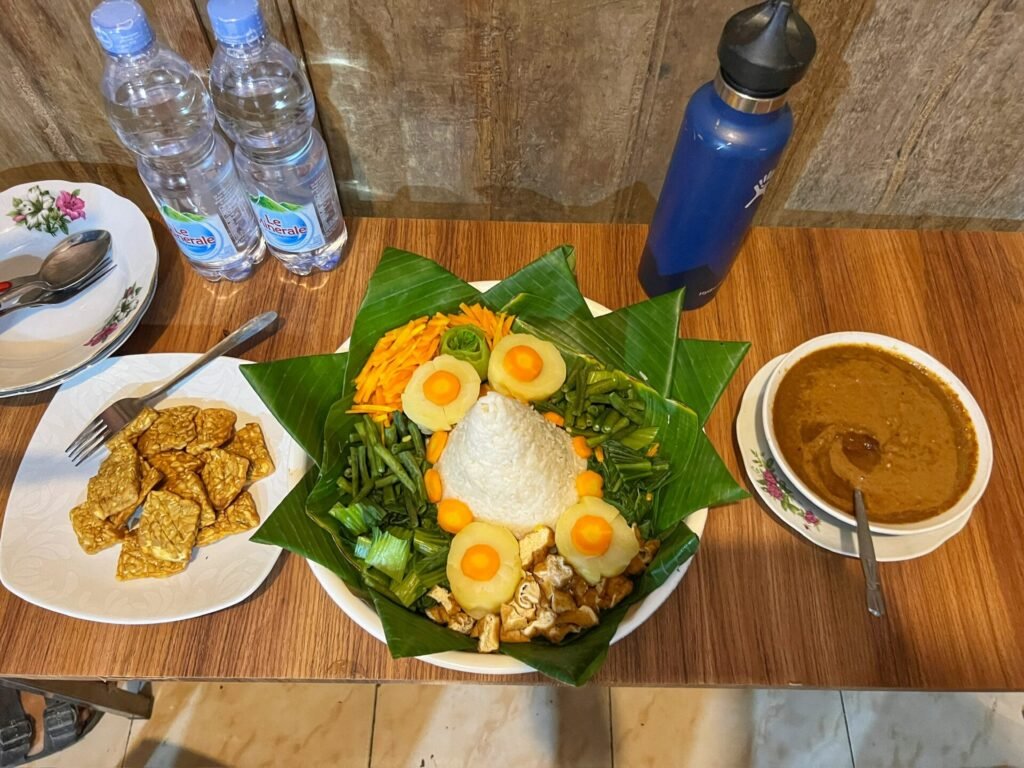
The peanut sauce is undoubtedly the star of the dish, typically made from ground peanuts, coconut milk, palm sugar, garlic, chili, and lime, creating a flavorful combination of savory, sweet, and slightly spicy tastes. OMG!!!
It was also served with a side of tempeh, which originated in Indonesia, and is fermented whole soy beans bound together in a dense cake, which could also be dunked delightfully in the peanut sauce.

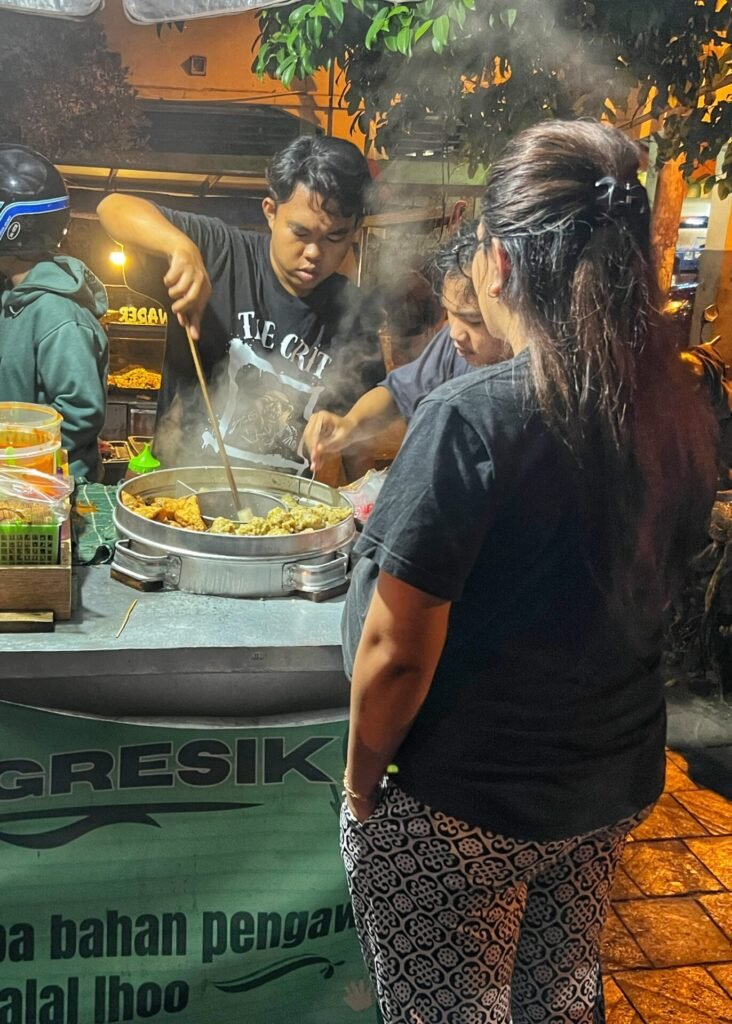
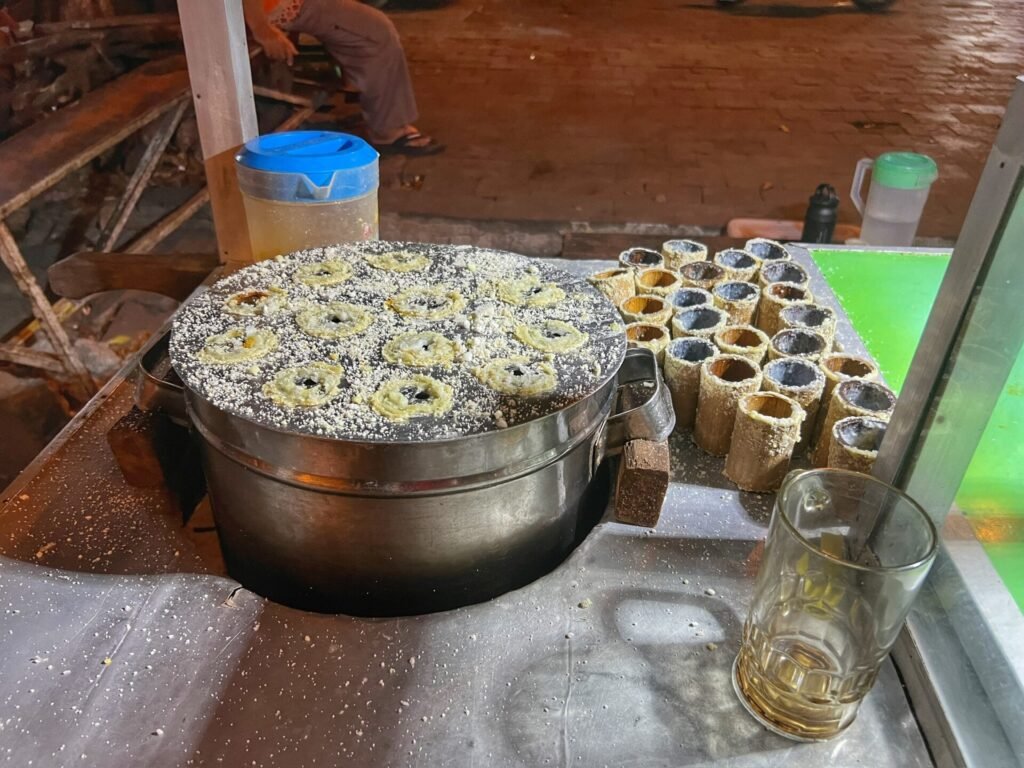
After dinner, while Nunung was finishing up our projects, which meant boiling off the wax and drying our masterpieces, her dad, Sayno took us on a walk of the neighborhood. Naturally he was wearing a shirt made with batik. He introduced us to several street food stands…
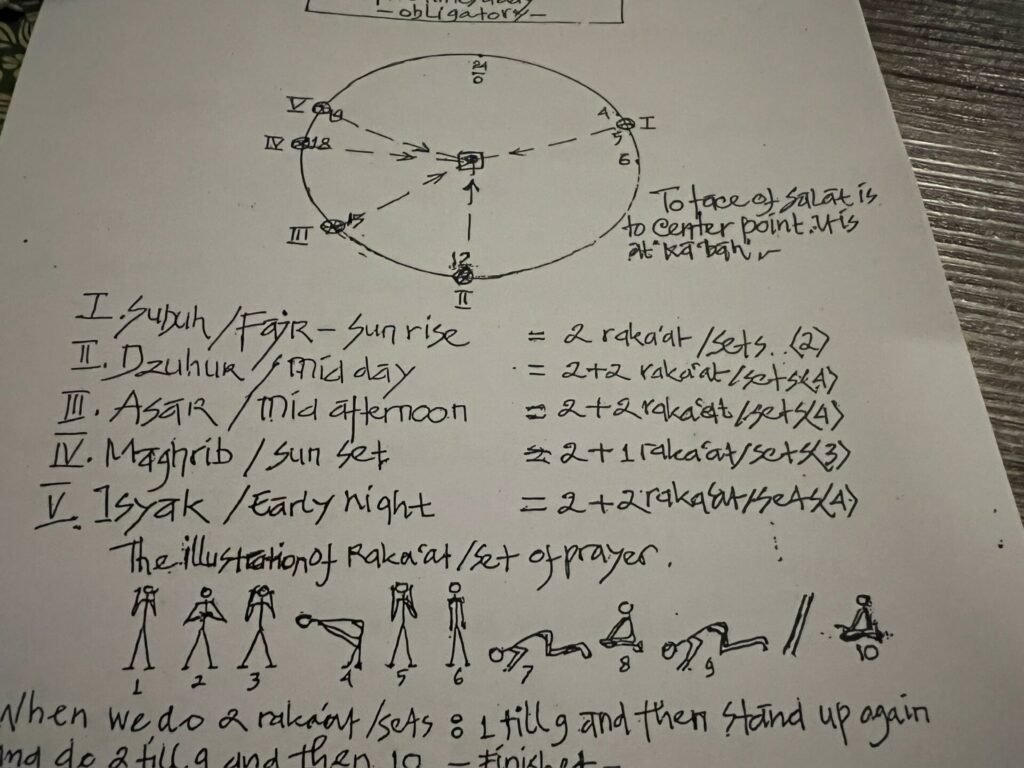
…and showed us the local mosque giving us a quick run-down of Islam, including a handy dandy guide he’d personally drawn which included guidelines for the five daily call to prayers which currently happen from 4:00 am to 6:30 pm. It even included little stick people diagrams displaying prayer positions. This is more of an explanation than we’d ever gotten and we found it quite interesting! It also gave a little more meaning to the groans we currently emit at 4 in the morning from the mosque directly next door.
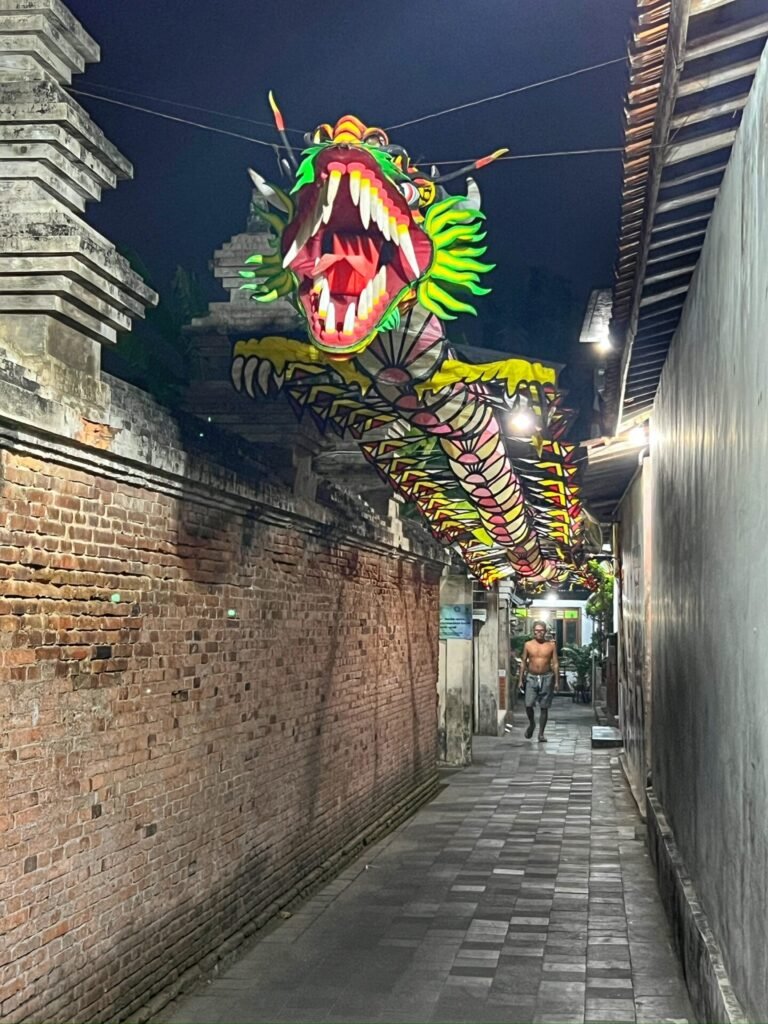
Walking through the peaceful enclave, we also met this dragon! Not really sure how he fits in…
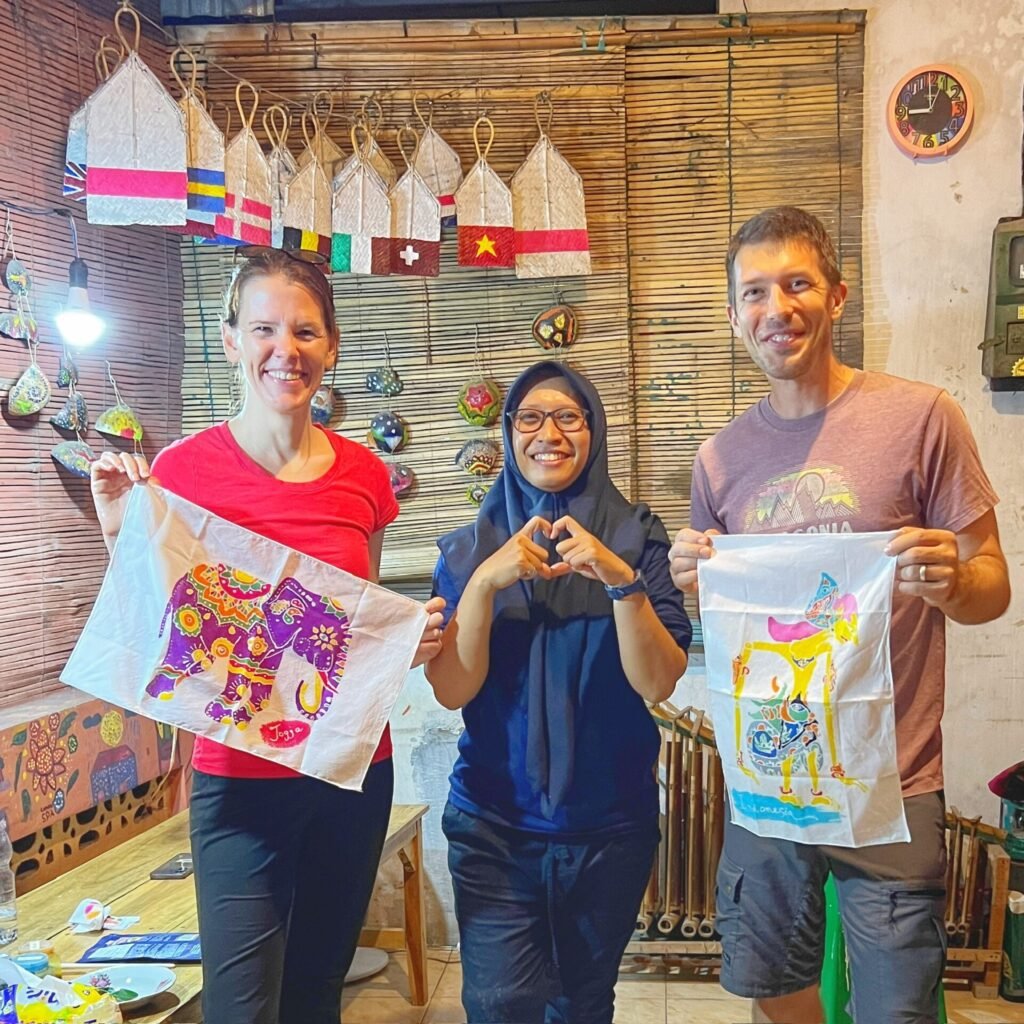
Reuniting with Nanung, she had our creations ready to go. And fortunately, it was a tiny souvenir which could conveniently be tucked in our bags until we figure out something to do with them.
Our Janky Apartment in Jogja
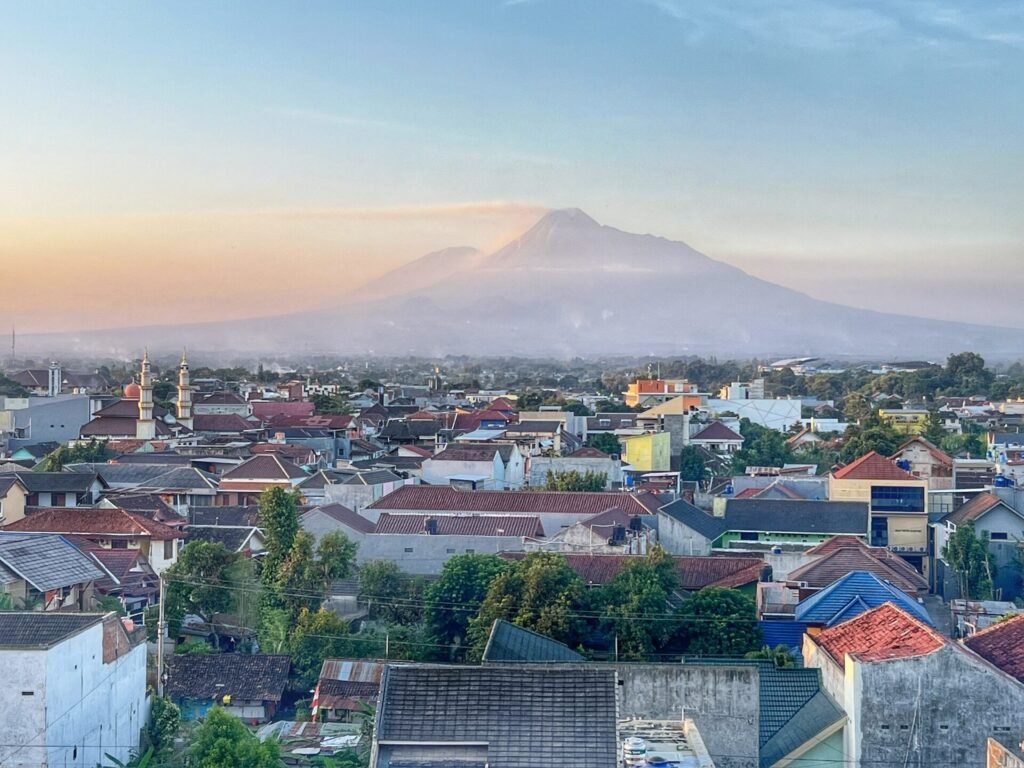
In our brief time, we preferred Semarang or Solo over Jogja, a city of more than 3 million. Jogja simply felt too widespread and it was time consuming and expensive (for Indonesia) to get anywhere by Grab, although our far northeast location definitely contributed to that challenge. We didn’t stay in a more centrally located place because we couldn’t find any decent looking apartments in our price range, which for us, was necessary for a five night stay.
The silver lining? The $22/night apartment we did choose offered a phenomenal 8th floor balcony view of the stratovolcano of Mt Merapi. Looming 20 miles north, Mt. Merapi, at 2,930 meter, or 9,613 ft was usually shielded by clouds. However, one evening she finally came out to play, although fortunately not in too much a sense of the word. She is in fact, the most volatile volcano in Indonesia (there are 76 active ones of 147 total!) and has erupted regularly since 1548; the last larger one being in 2010, though she regularly exhales a waft of smoke and smaller belches of ash. Merapi means “Mountain Fire” in the local language.
Behind her, you can also see Mount Merbabu trying to compete for attention. Although this dormant spectacle, which many people summit, never will.
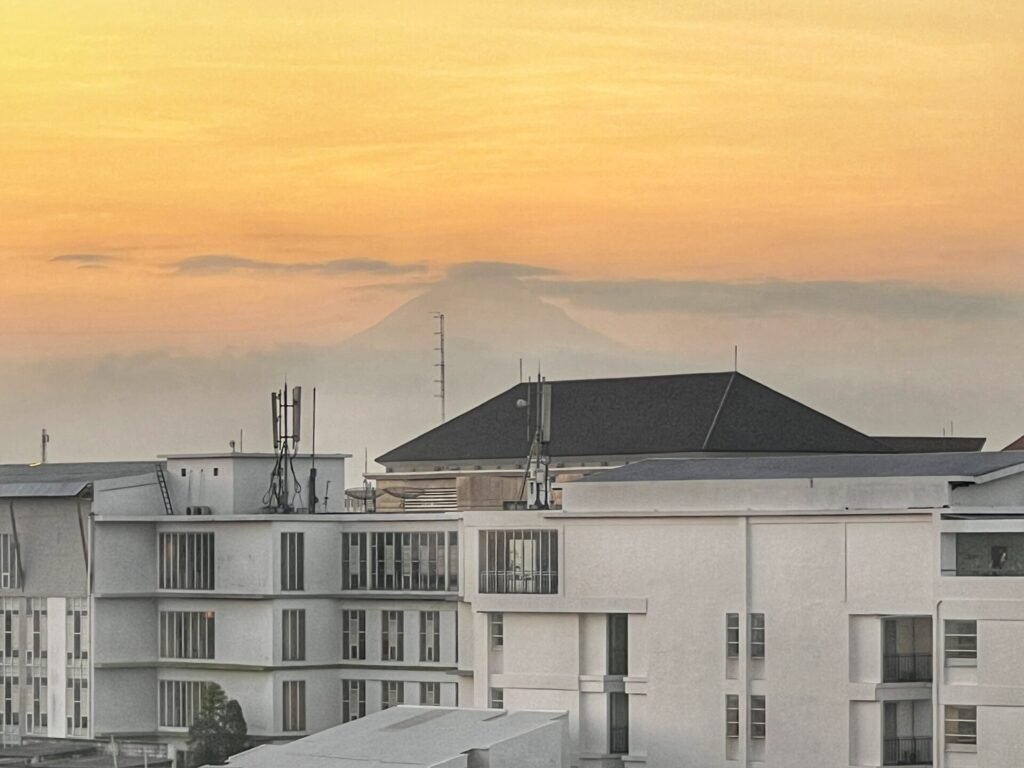
Clearly ringed, another volcano popped out of the horizon called Mount Sew which is even taller than Merapi.
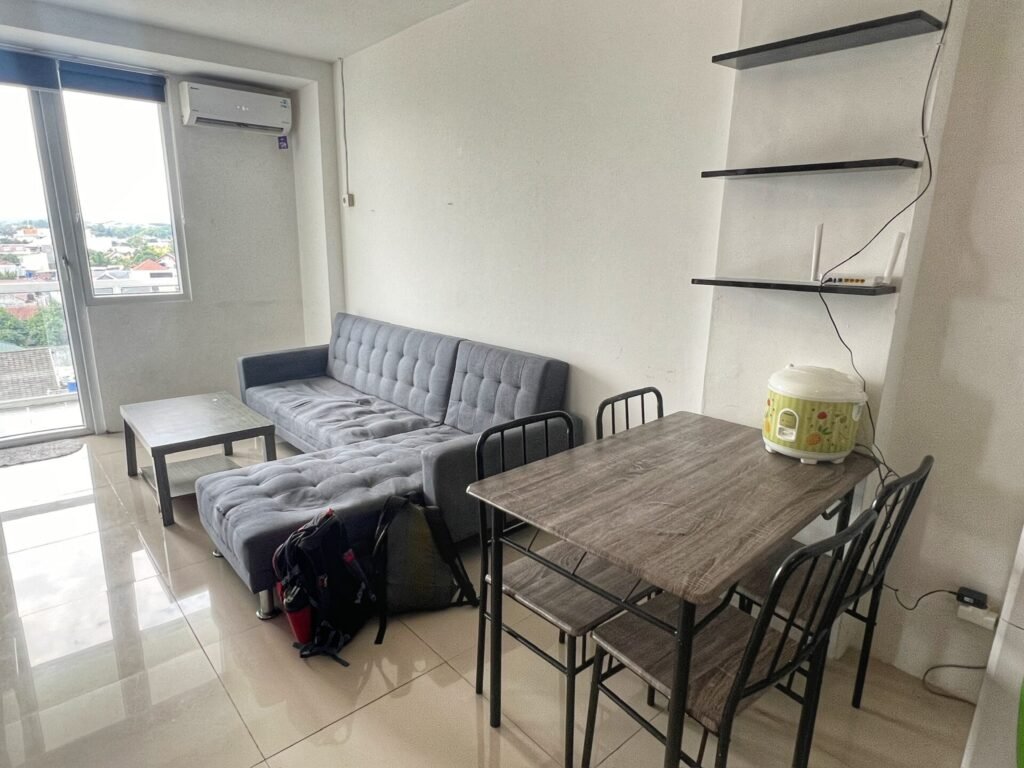
But the rest of the unit and building was a bit…uh…janky?! This is one instance where the Airbnb photos were…a bit off…
It started with the aromas when we arrived which was a beautiful blend of durian meets cigarette smoke meets wet dog (which was ultimately the wet mop in the sewer trap called the bathroom…one we would not enter without flip flops.)
There was then a couch you fell into because the springs were so prominent and unruly, and also seemed to home a few fleas. Next to it was a plyboard coffee table falling apart at every seam.
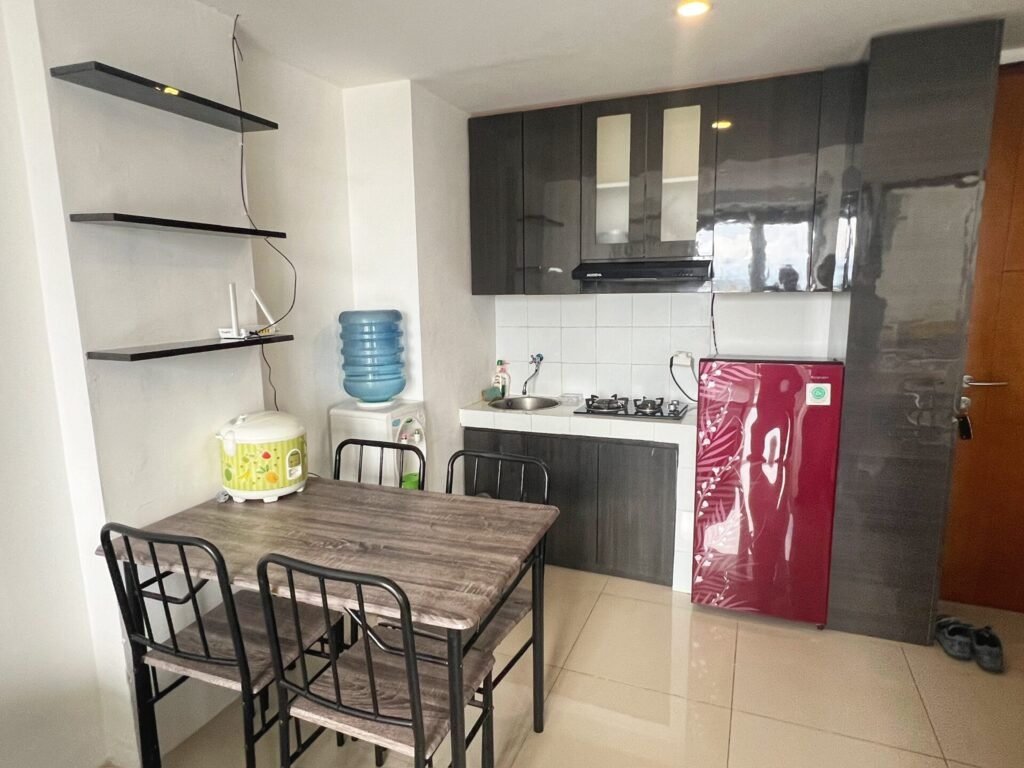

On the plus note, we did have a decent stove, filtered water dispenser, and knife set. Also on the plus side, the bed and pillows were comfortable and clean, although when we laid down, we did notice a hole had literally been punched in the ceiling to accommodate the blinds.


There were also lots of other signs in the apartment that the owners were not exactly handy people….like towel bars hung up by ribbon, or a kitchen cabinet that couldn’t be opened without plowing into the handle of the outside door.

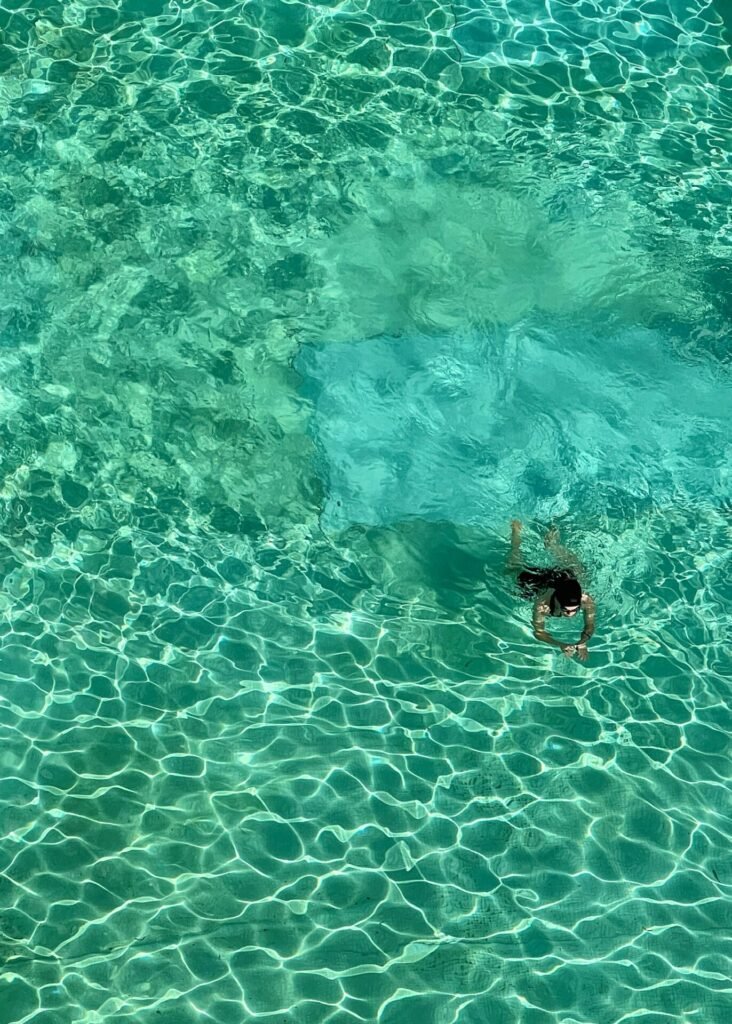
The very run down complex also had a whopping FOUR Olympic sized pools, which Mandy was super excited about out until she swam the first time and her goggles picked up the icky, and unmaintained, state of it. Fortunately, she was not gifted any diseases from it (that she’s aware of.) So, a couple pros and a long list of cons with this stay, but that view ultimately did make it worth it (what we kept telling ourselves.) 🤣


